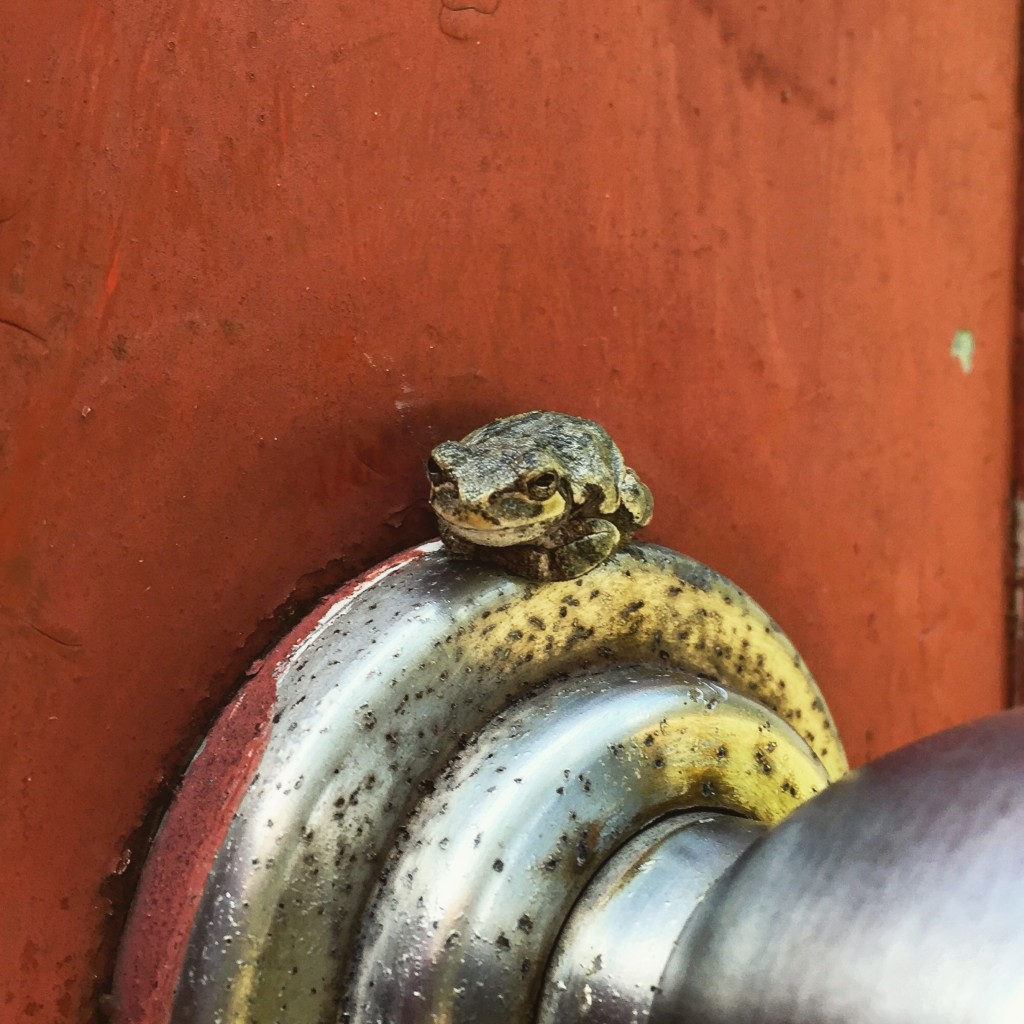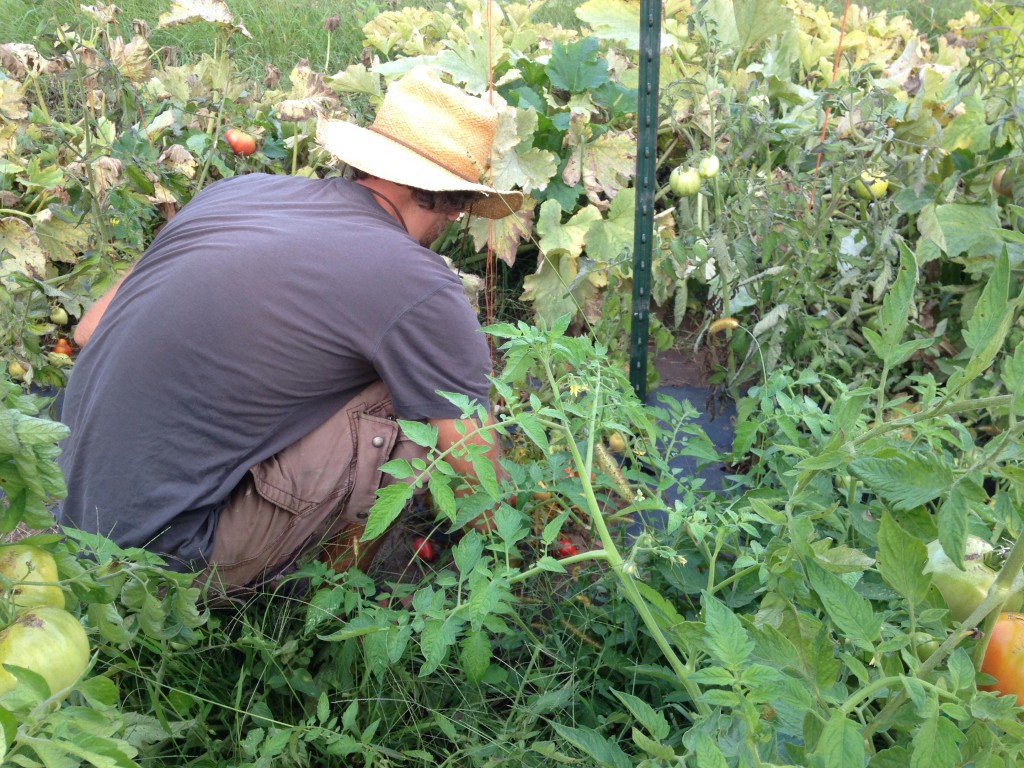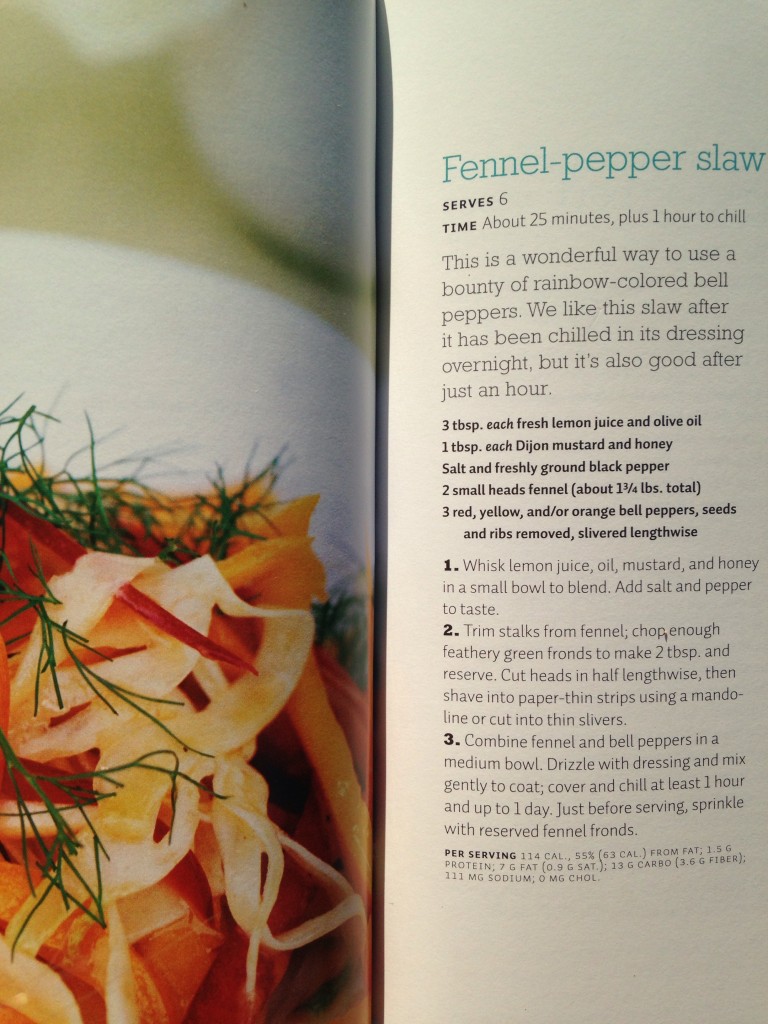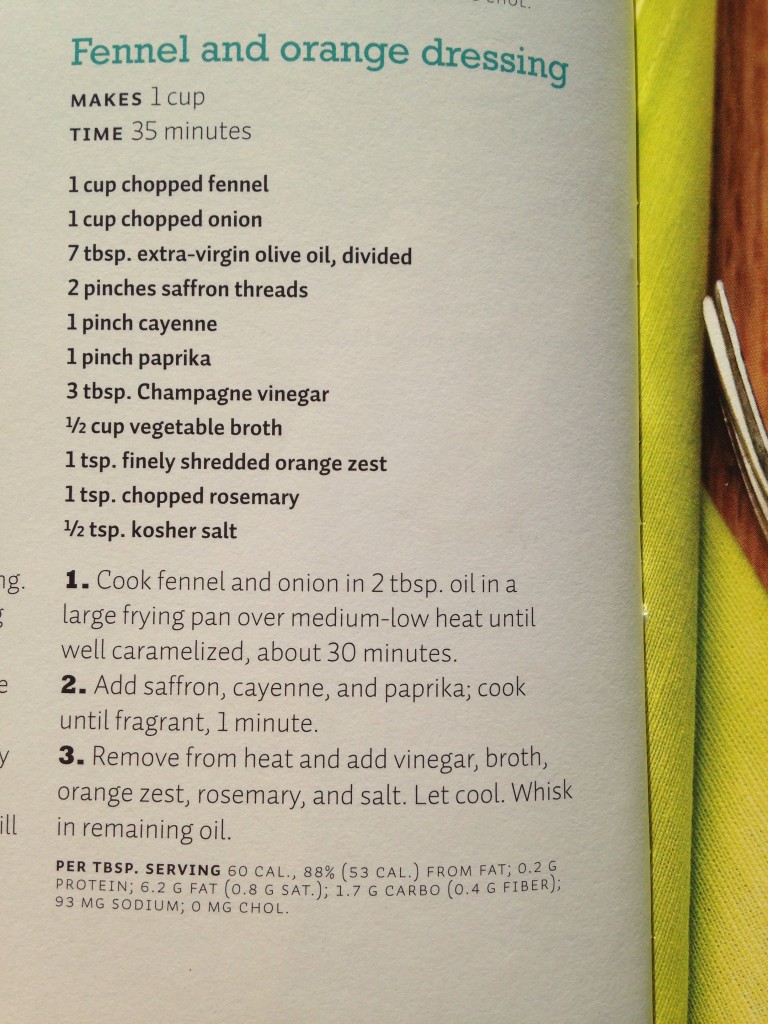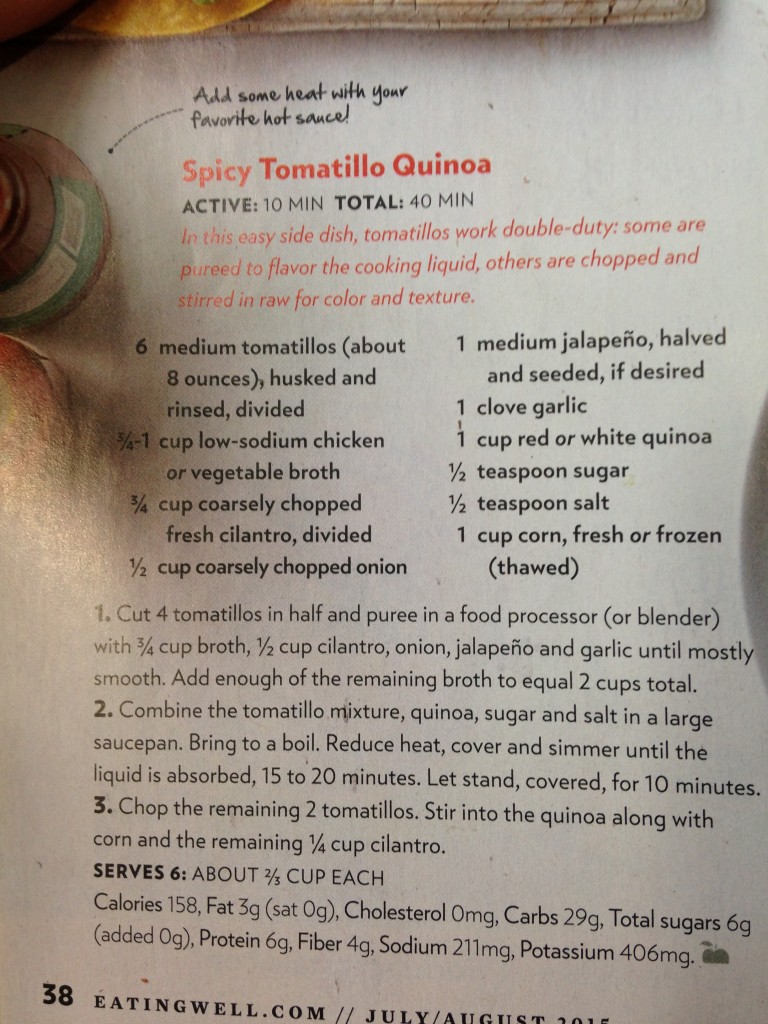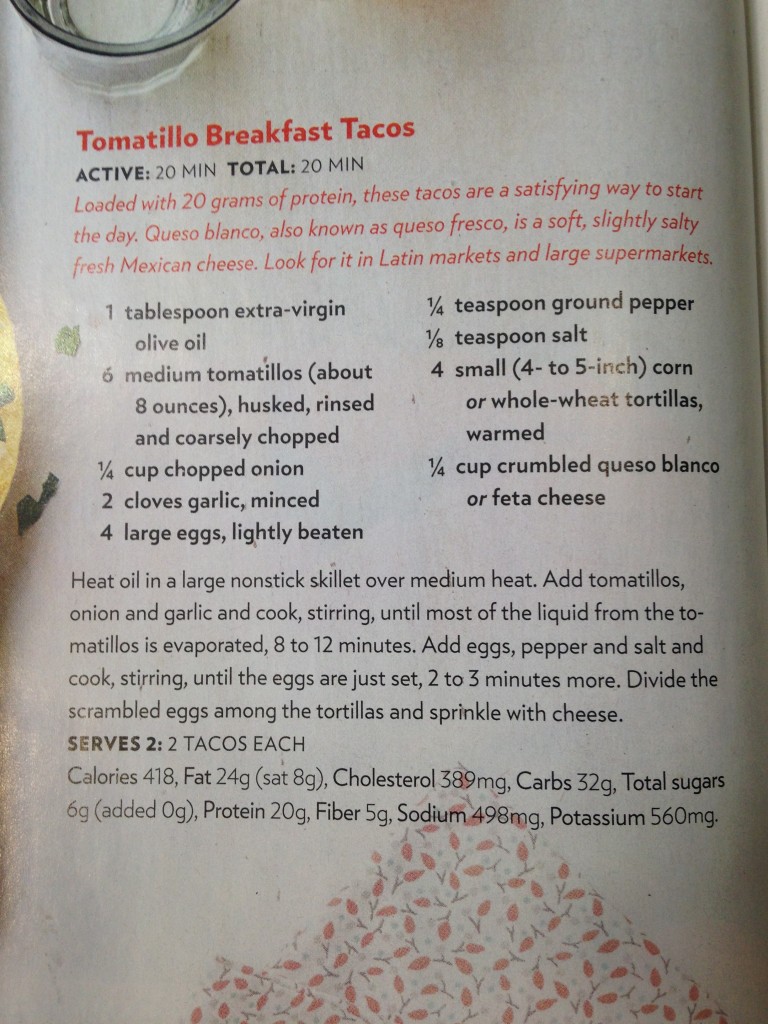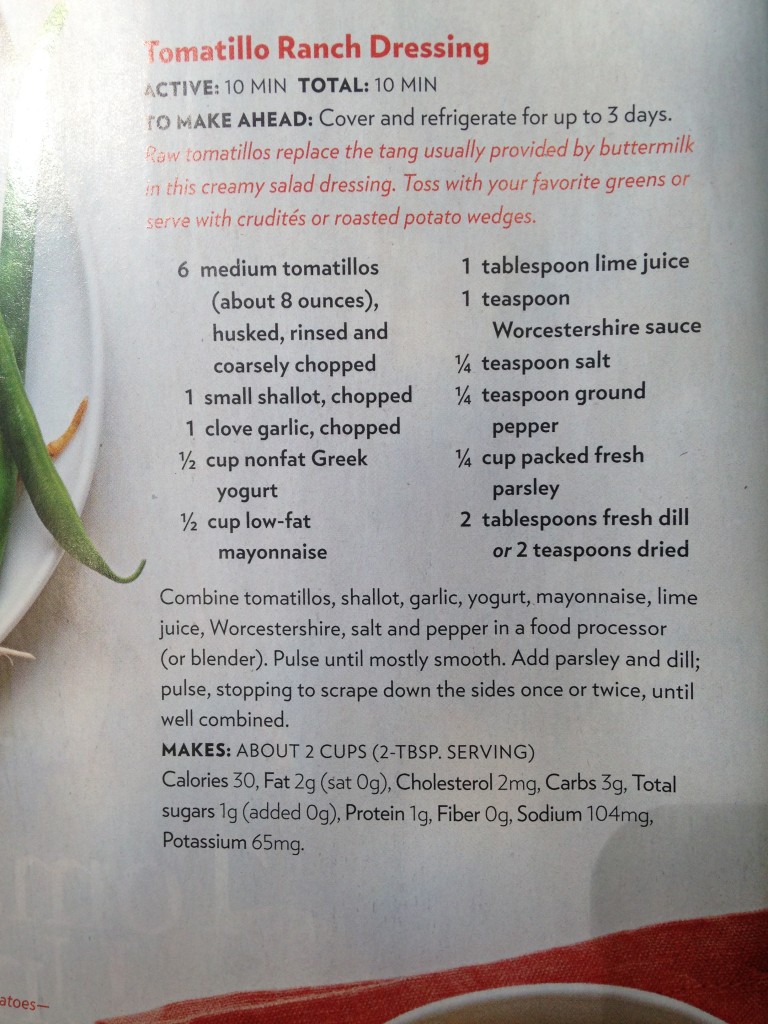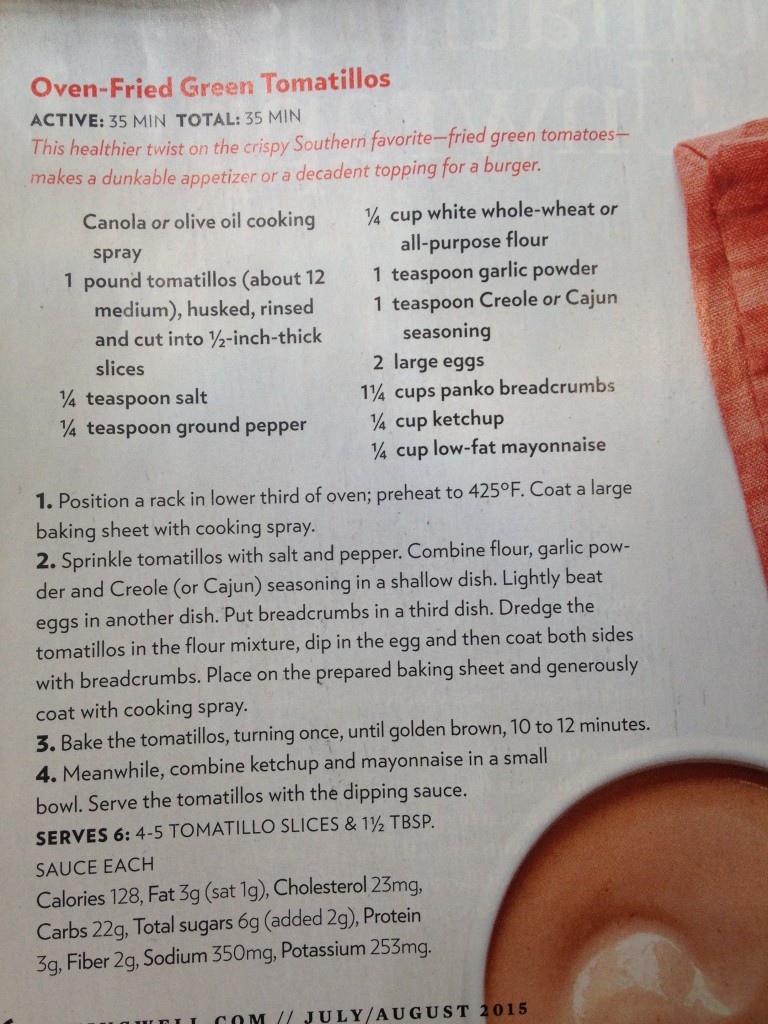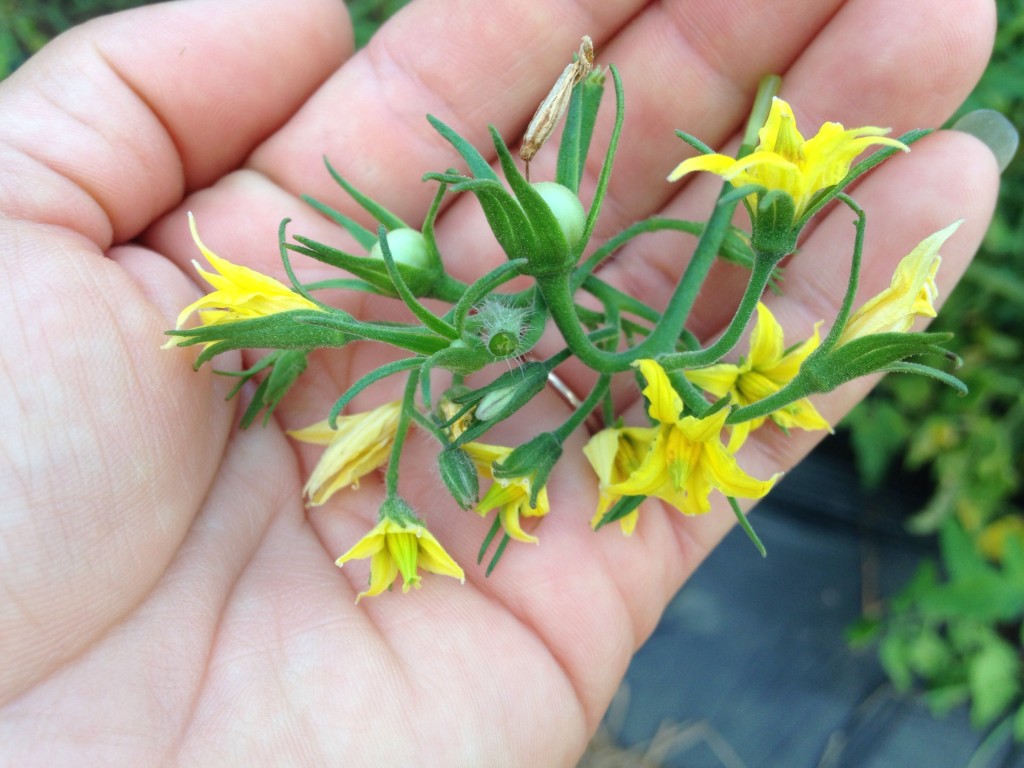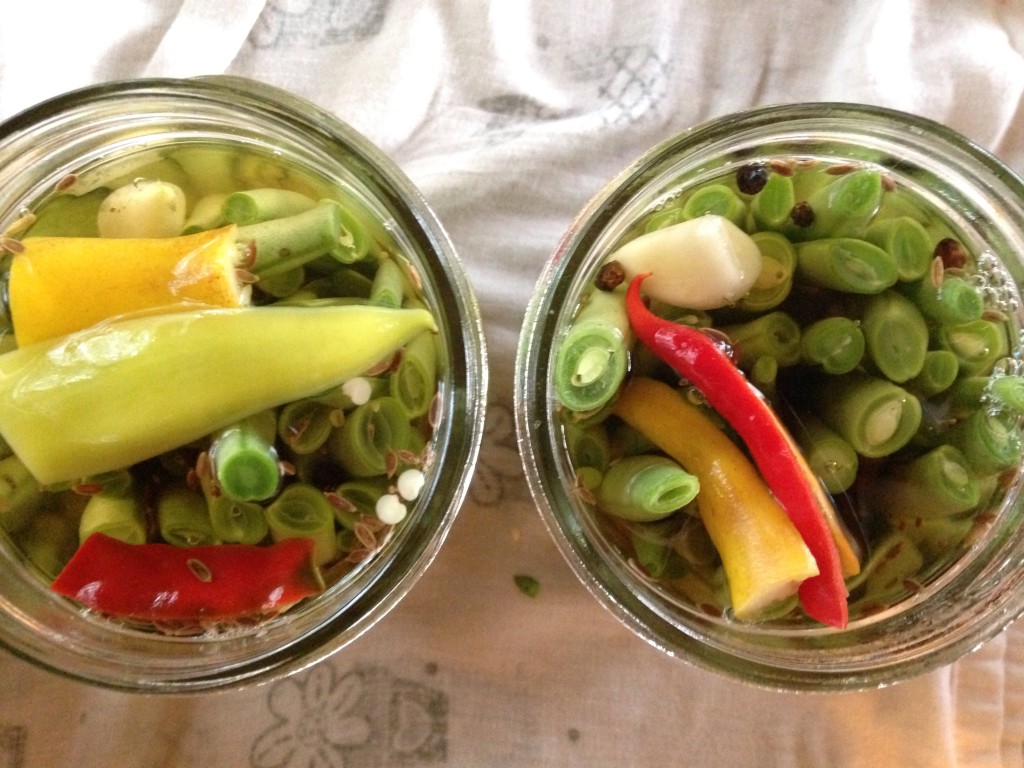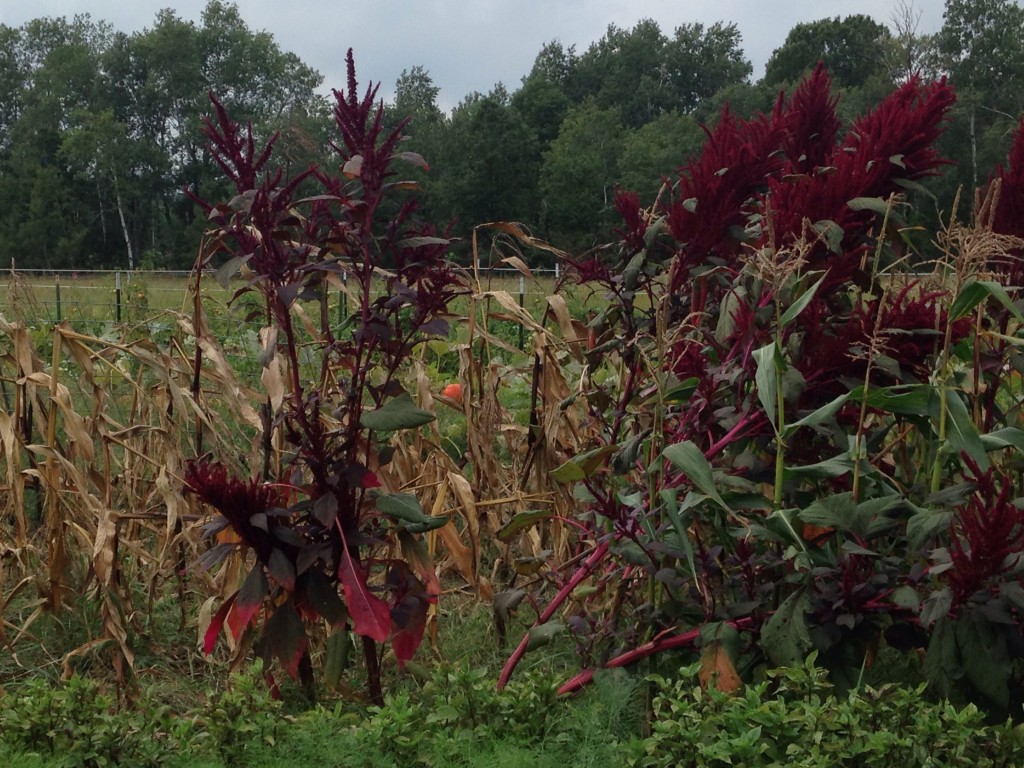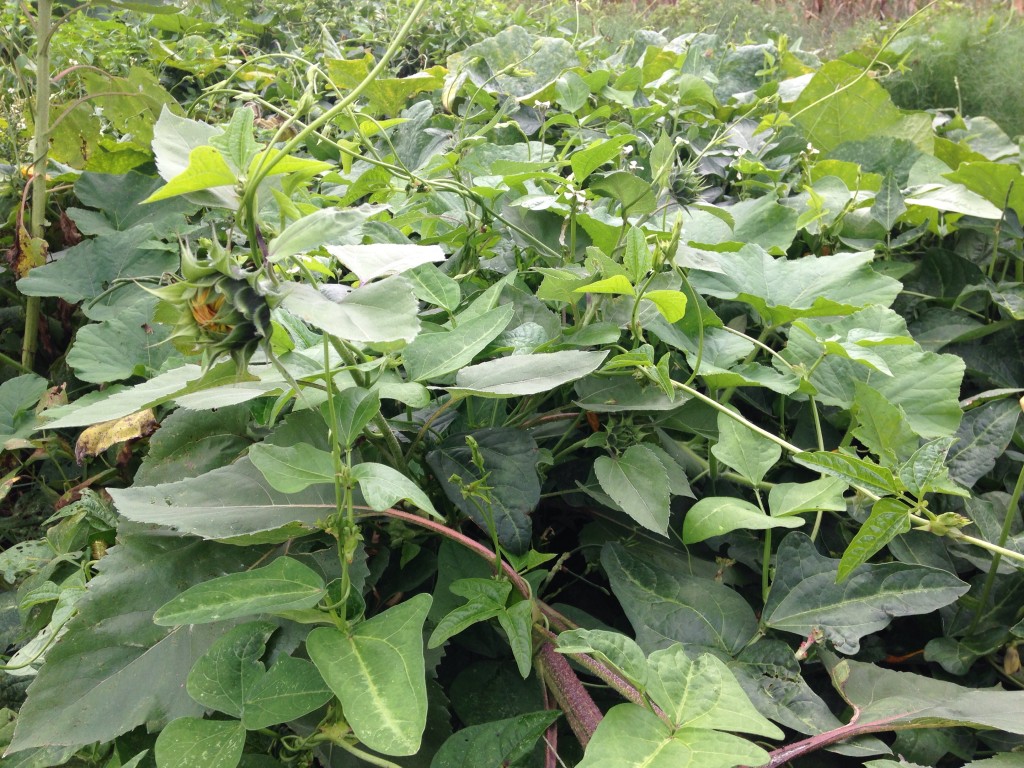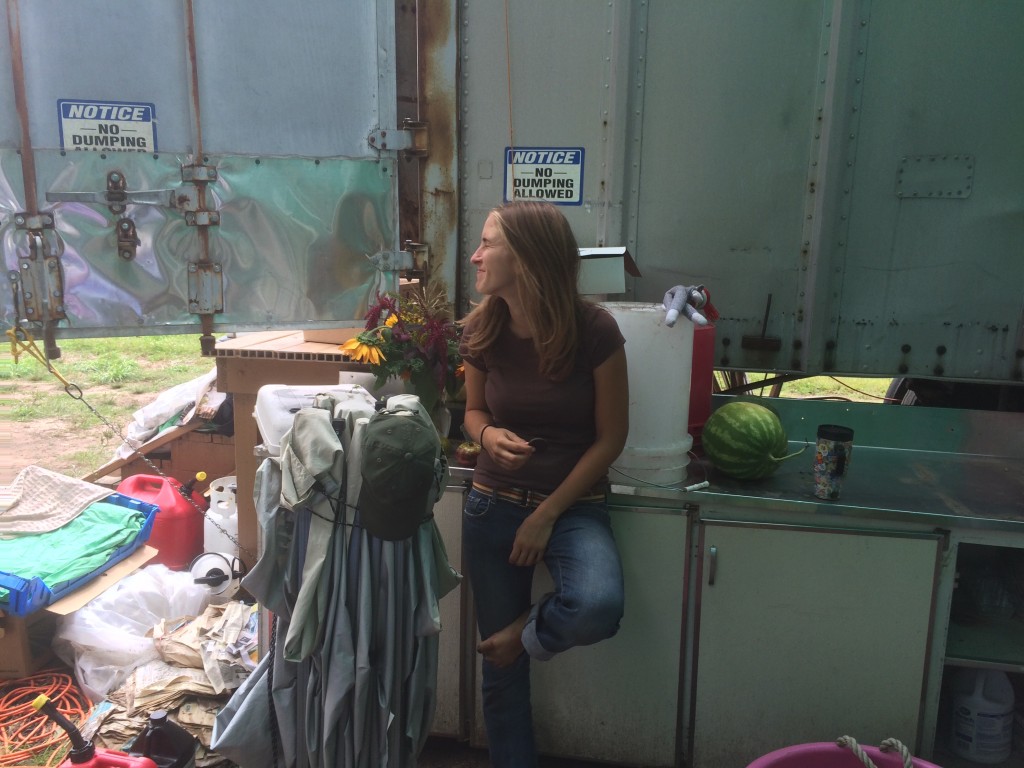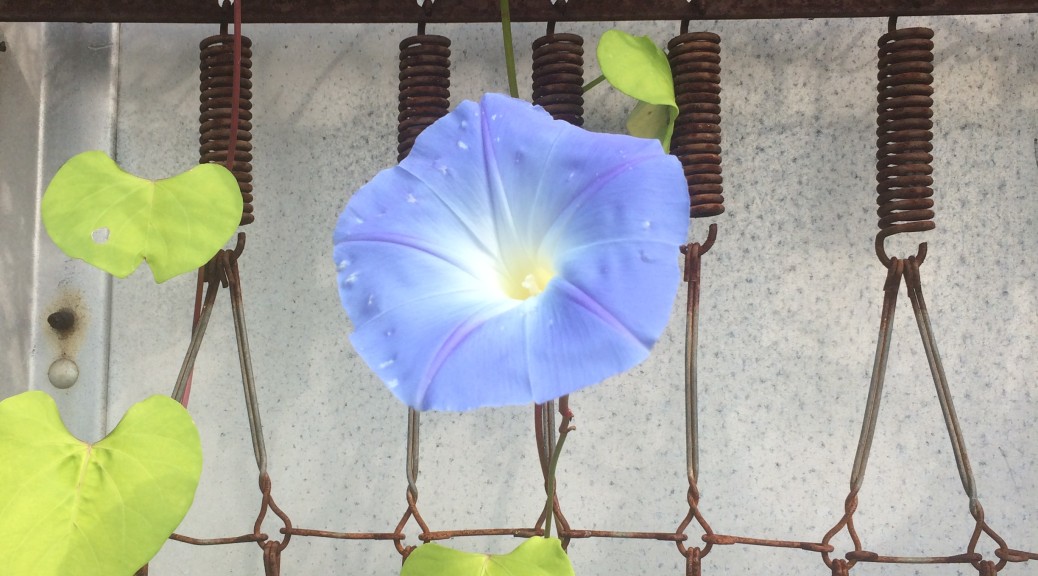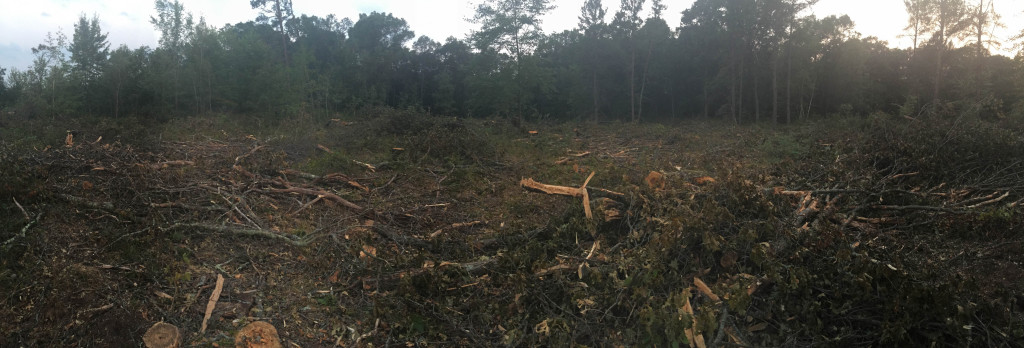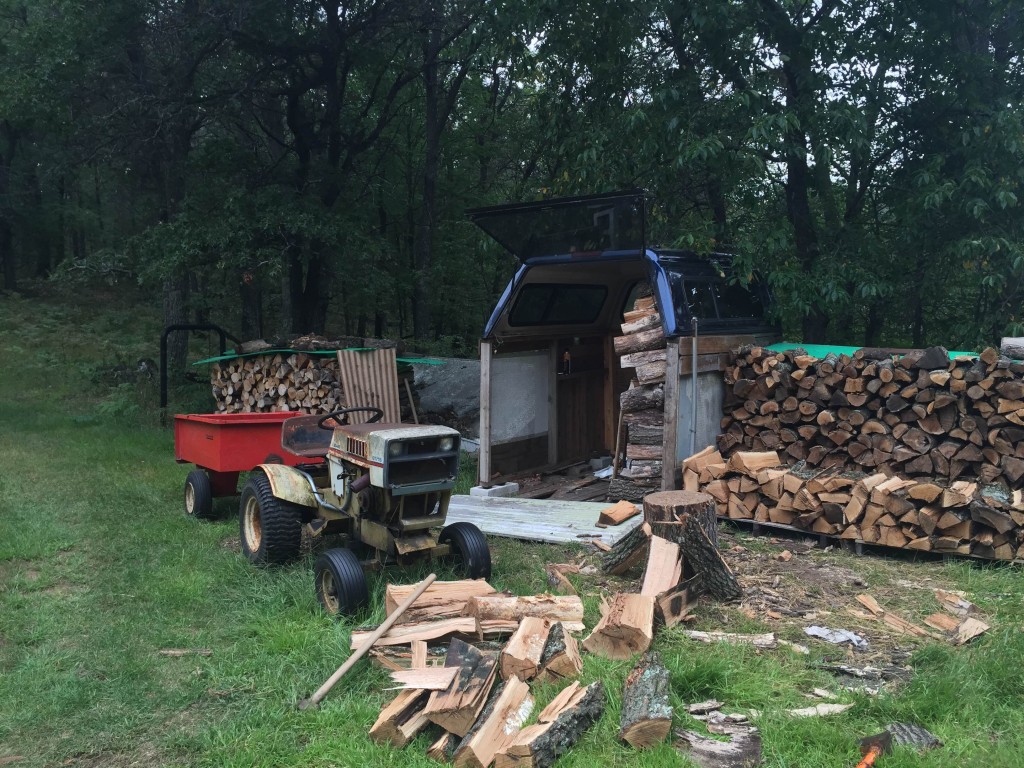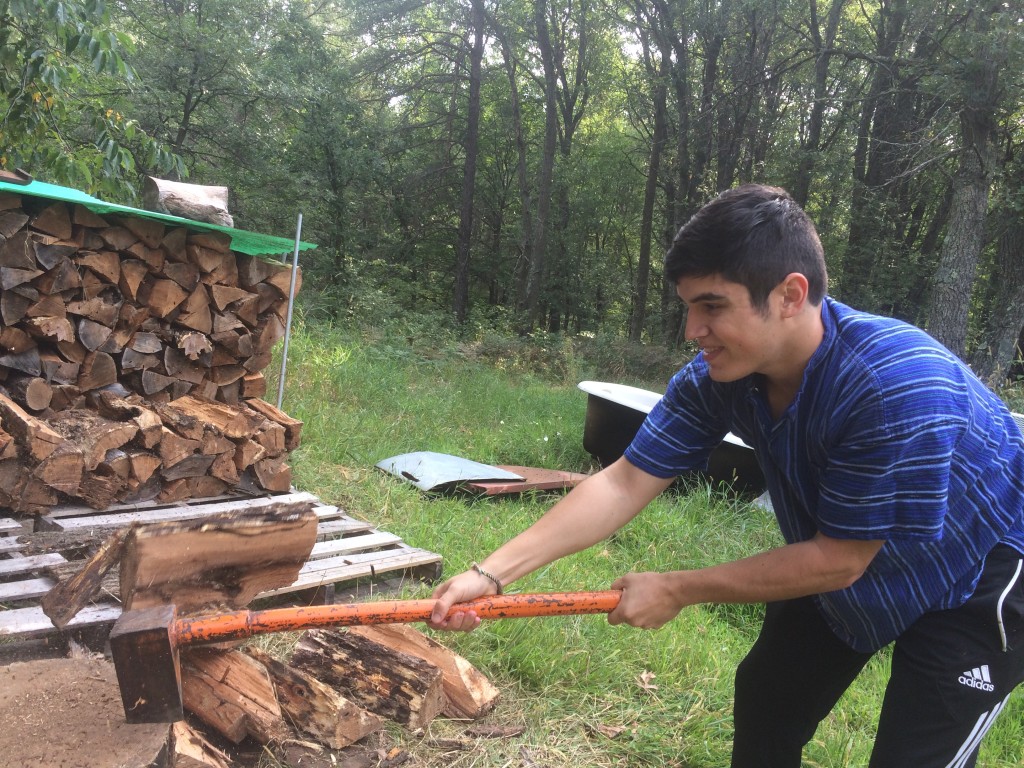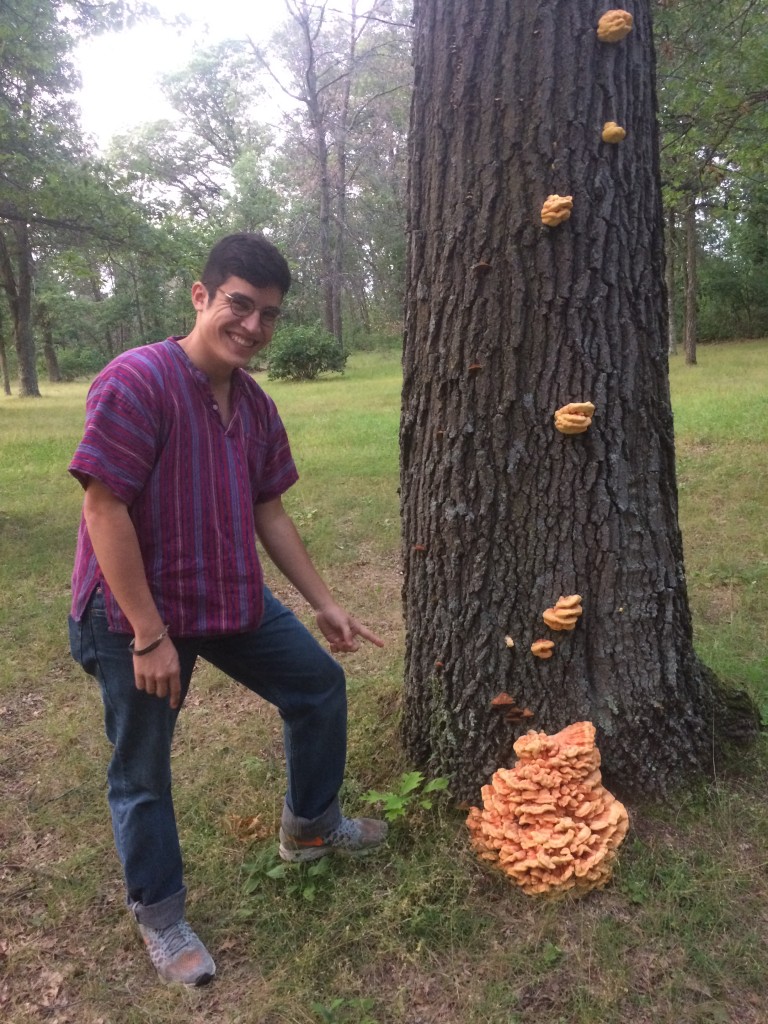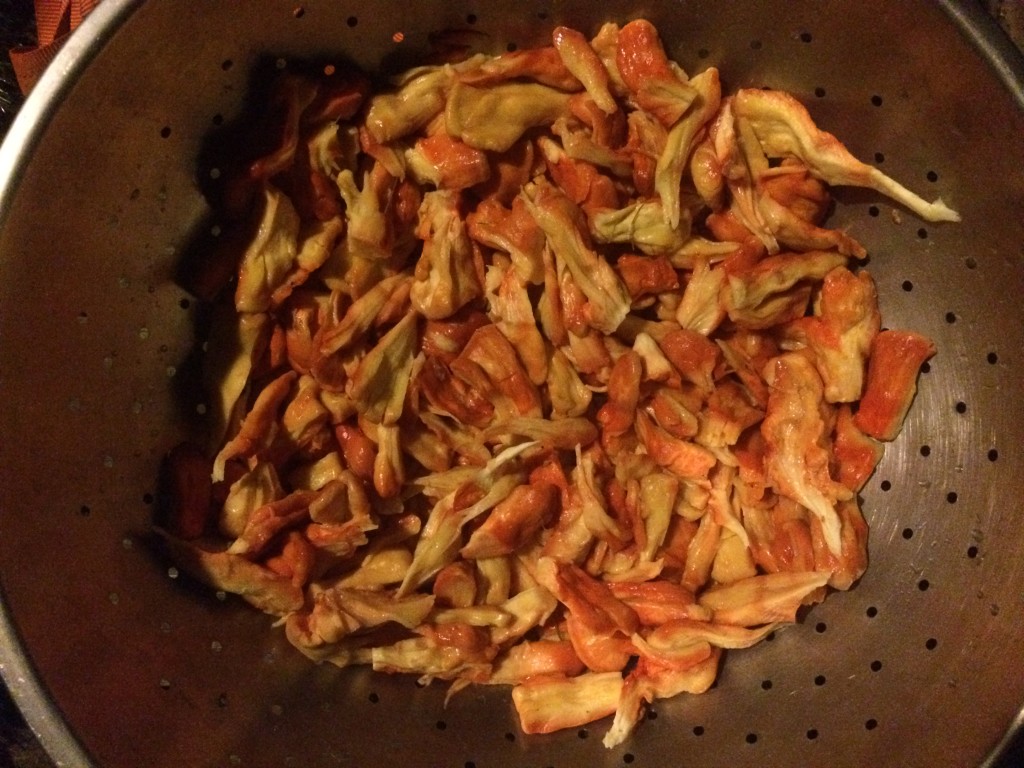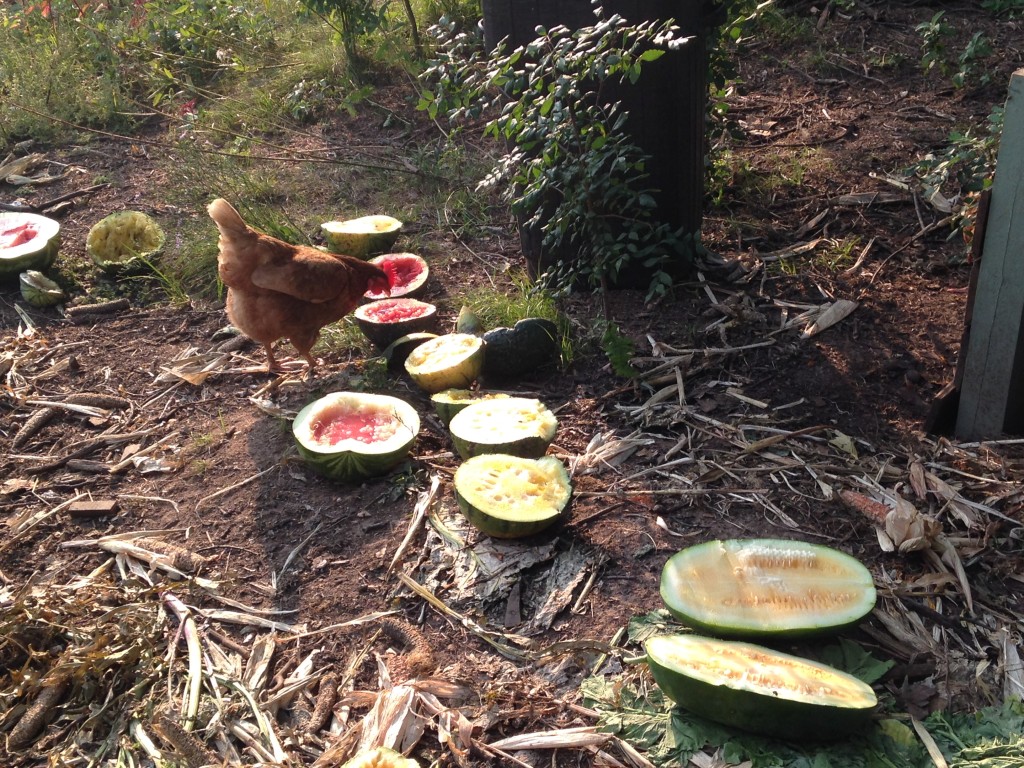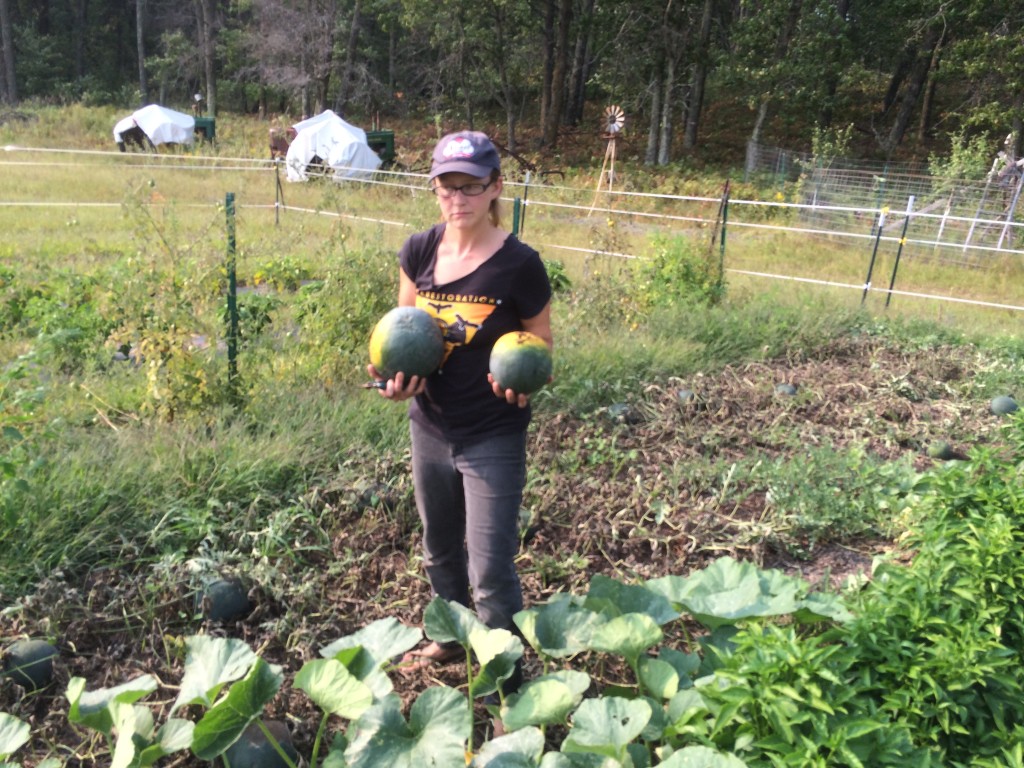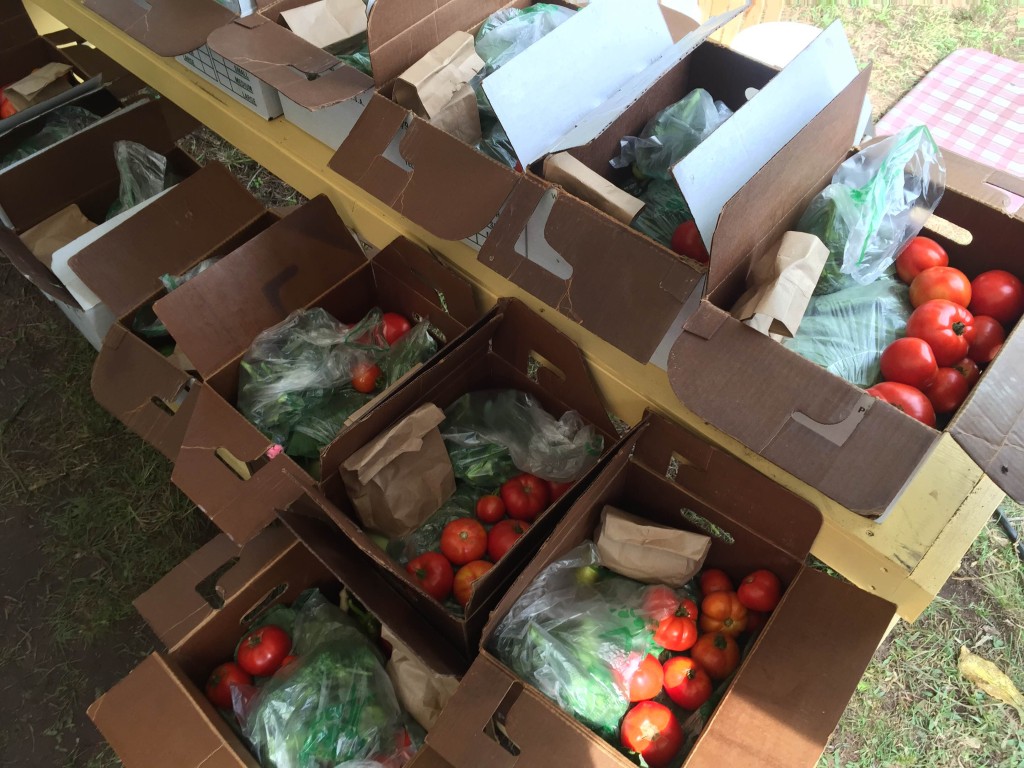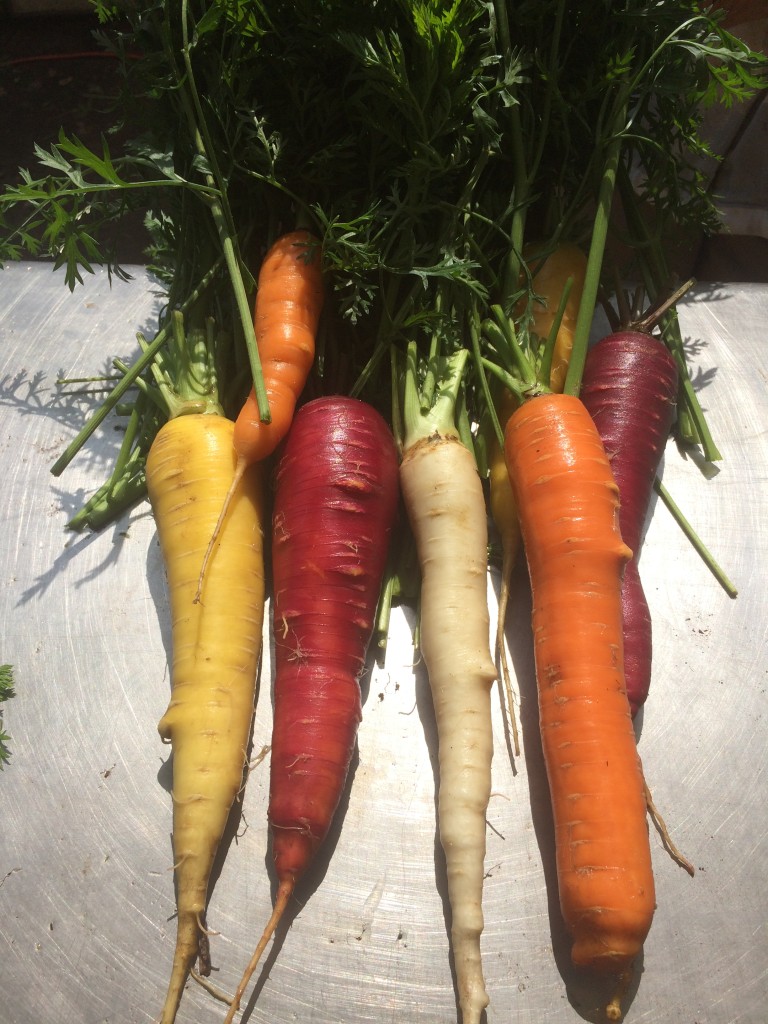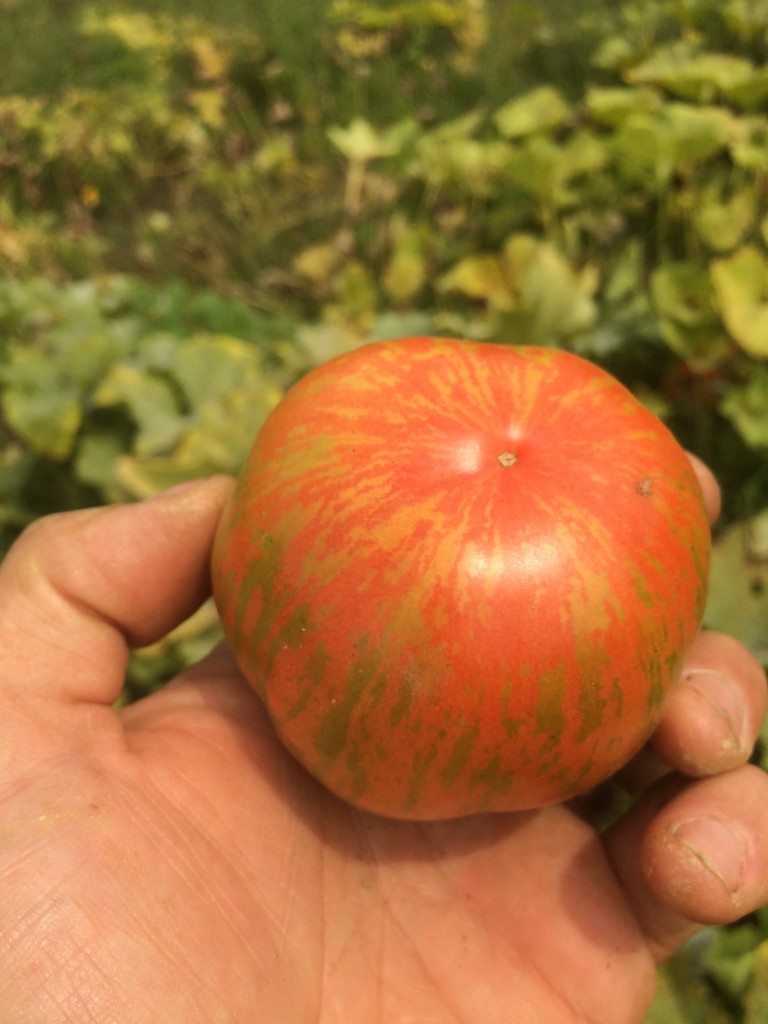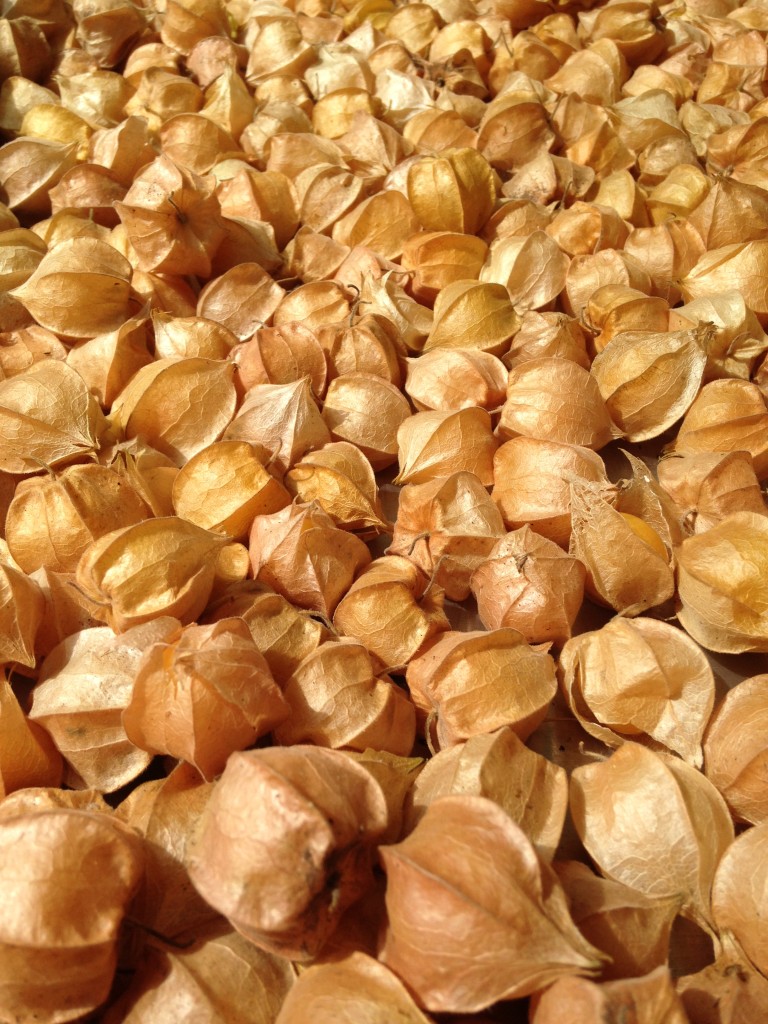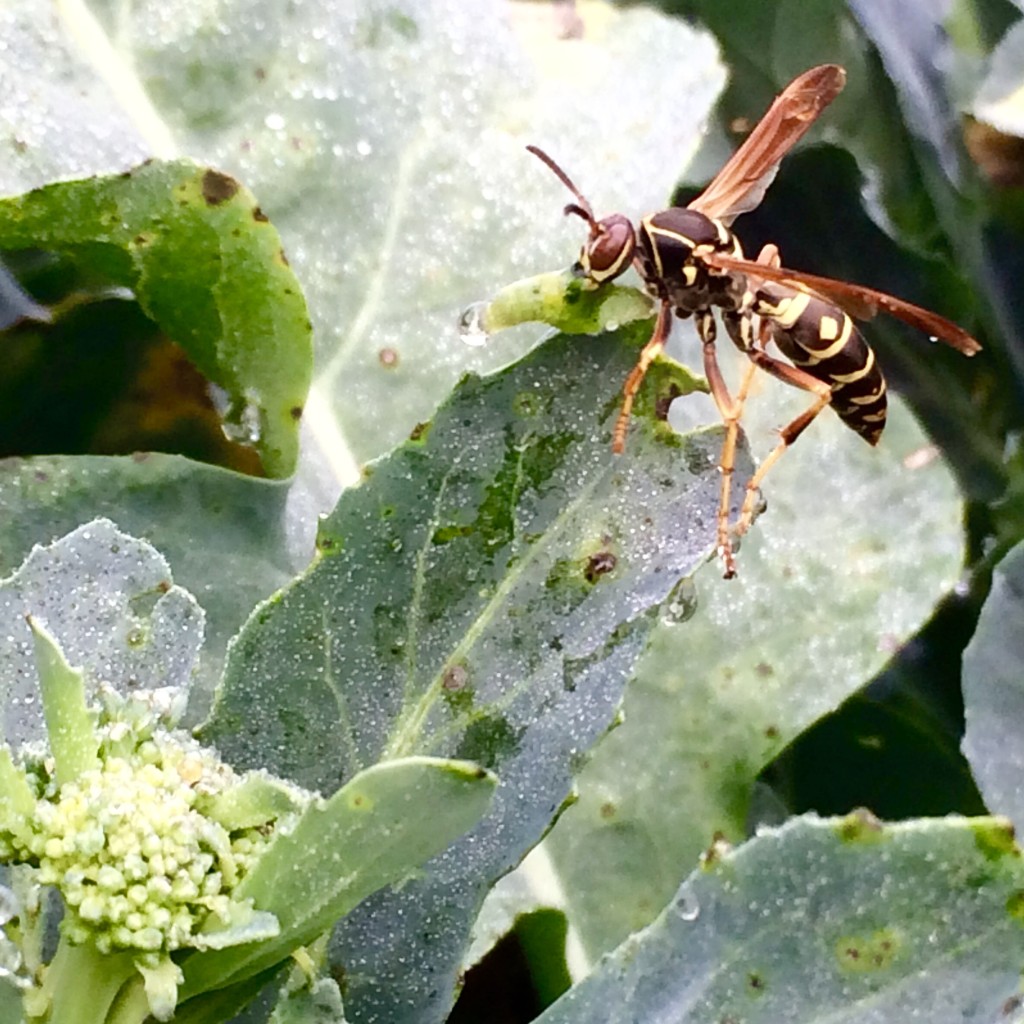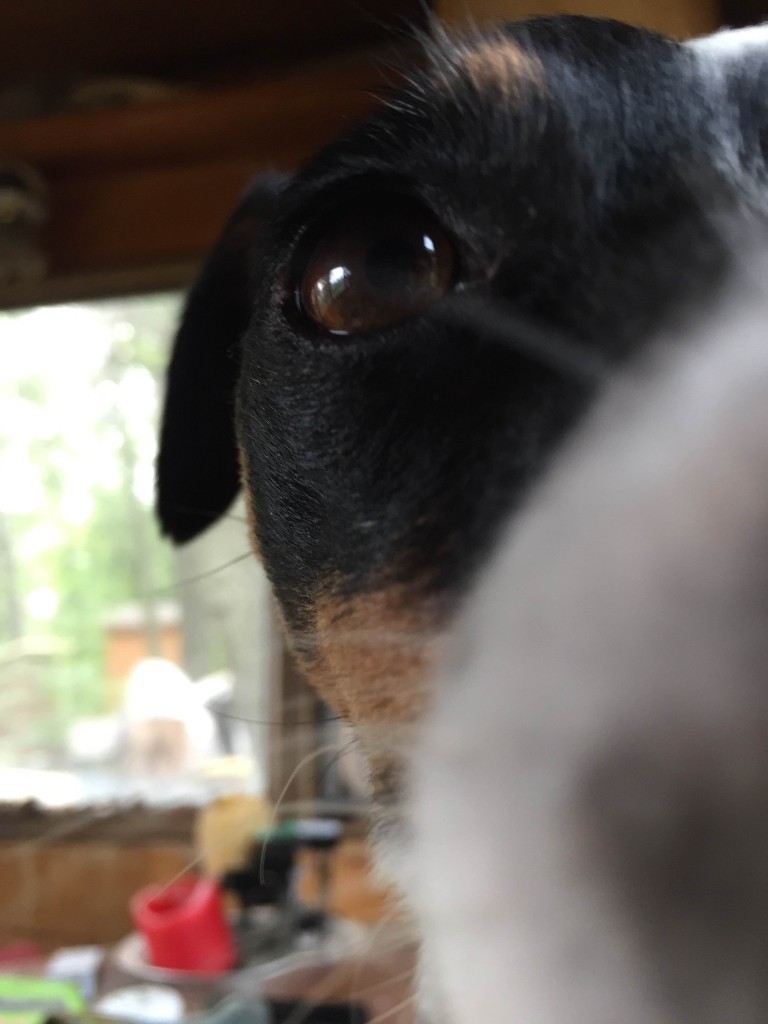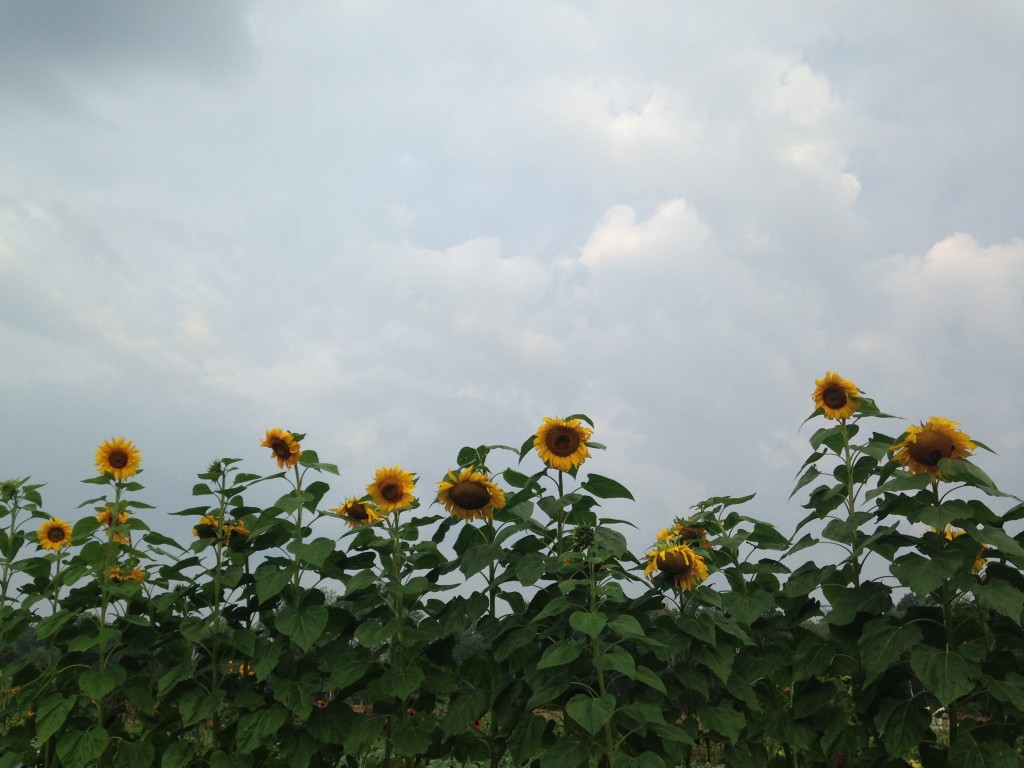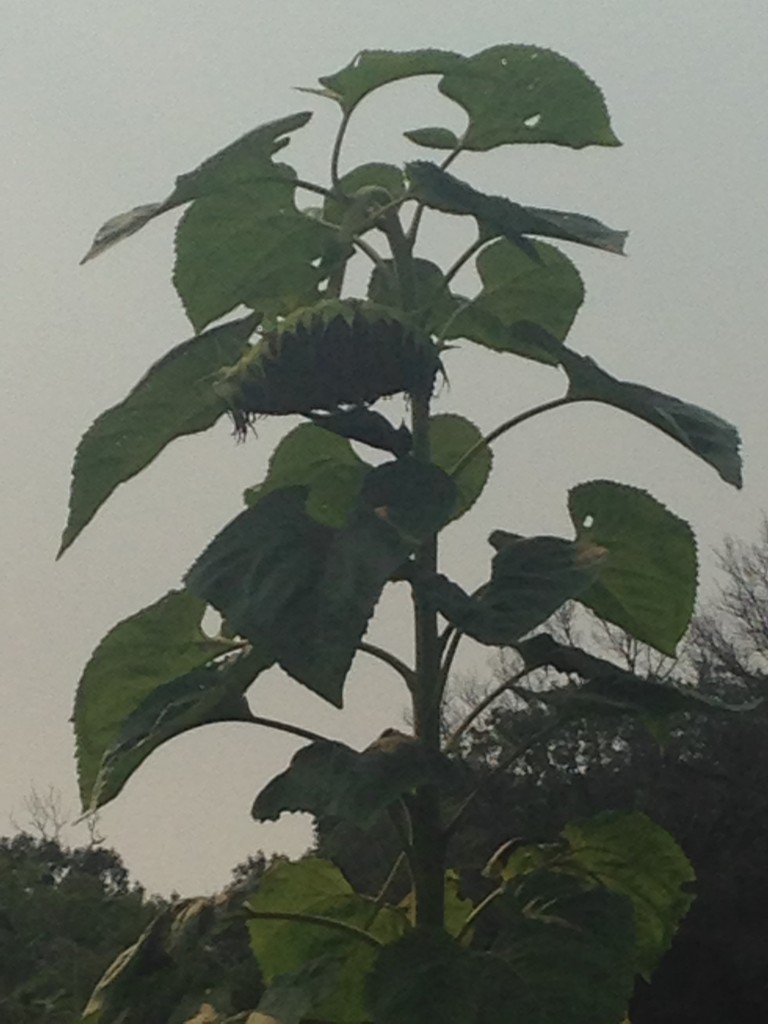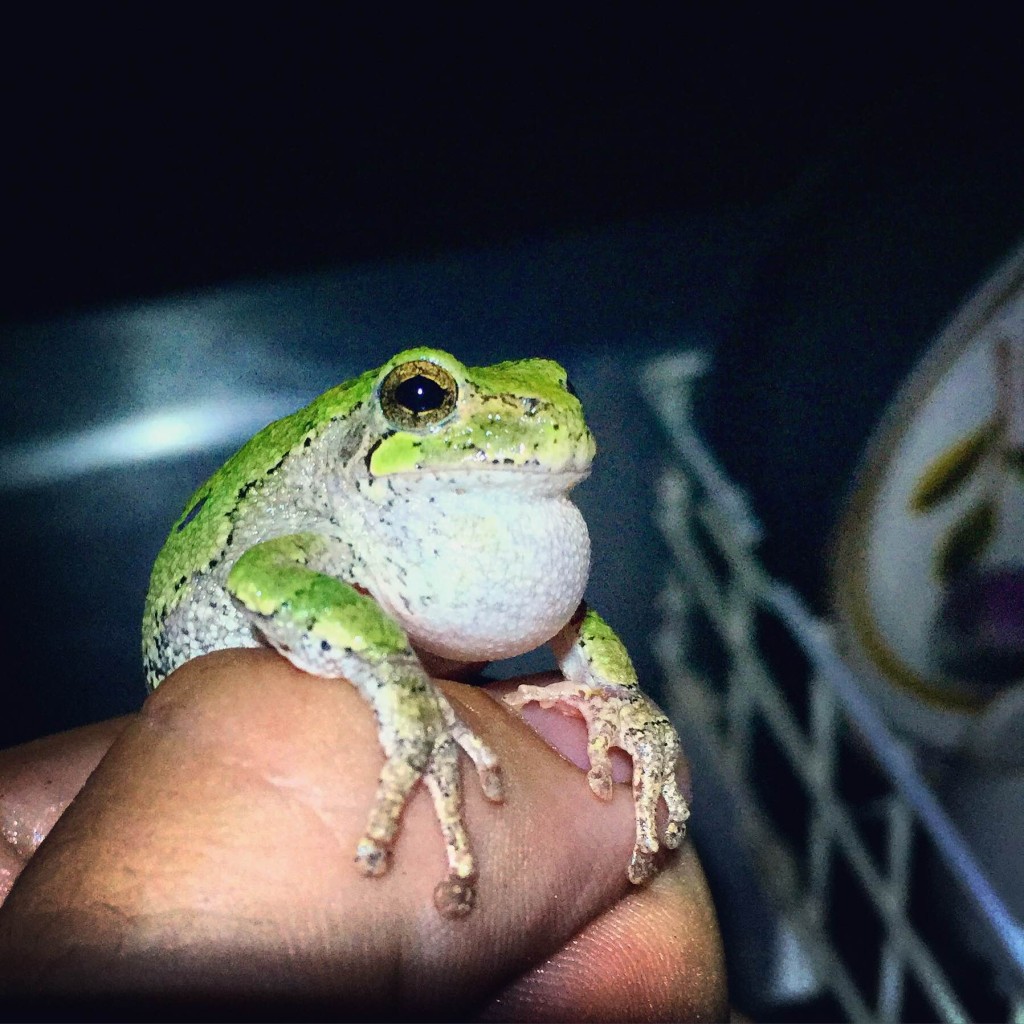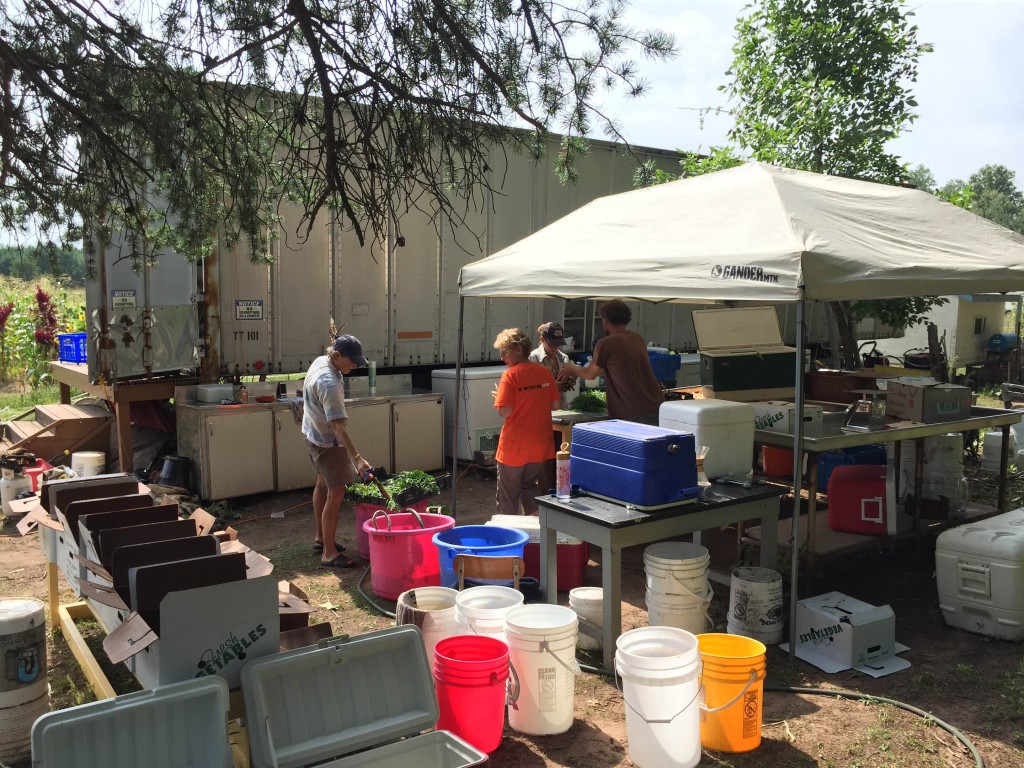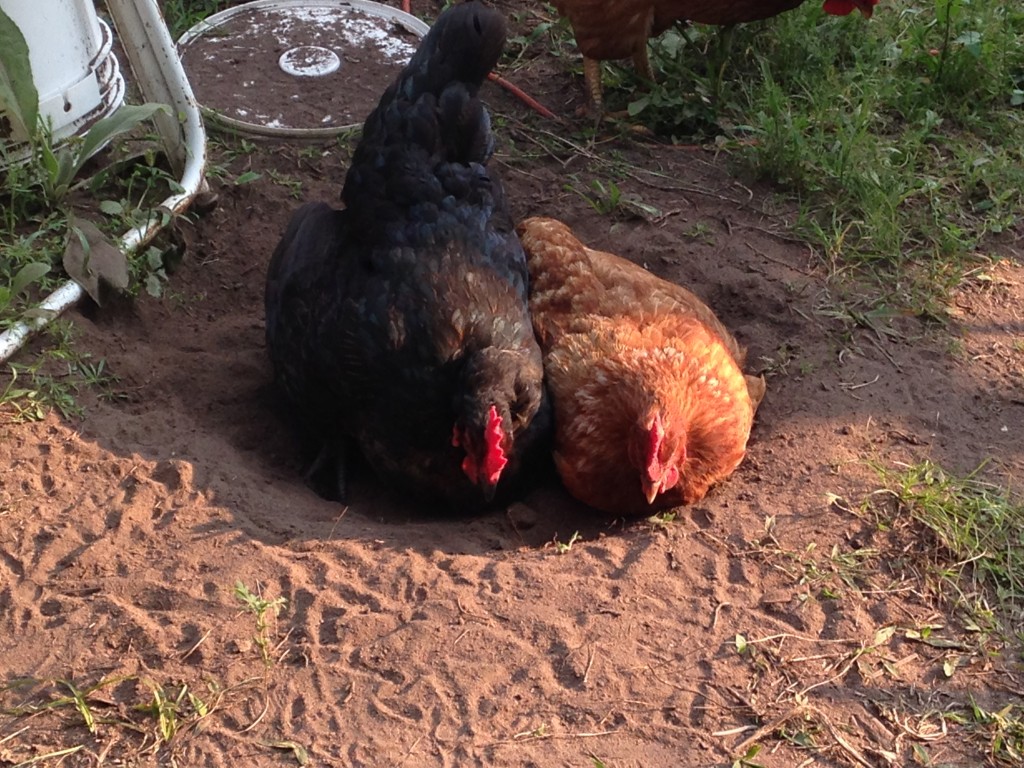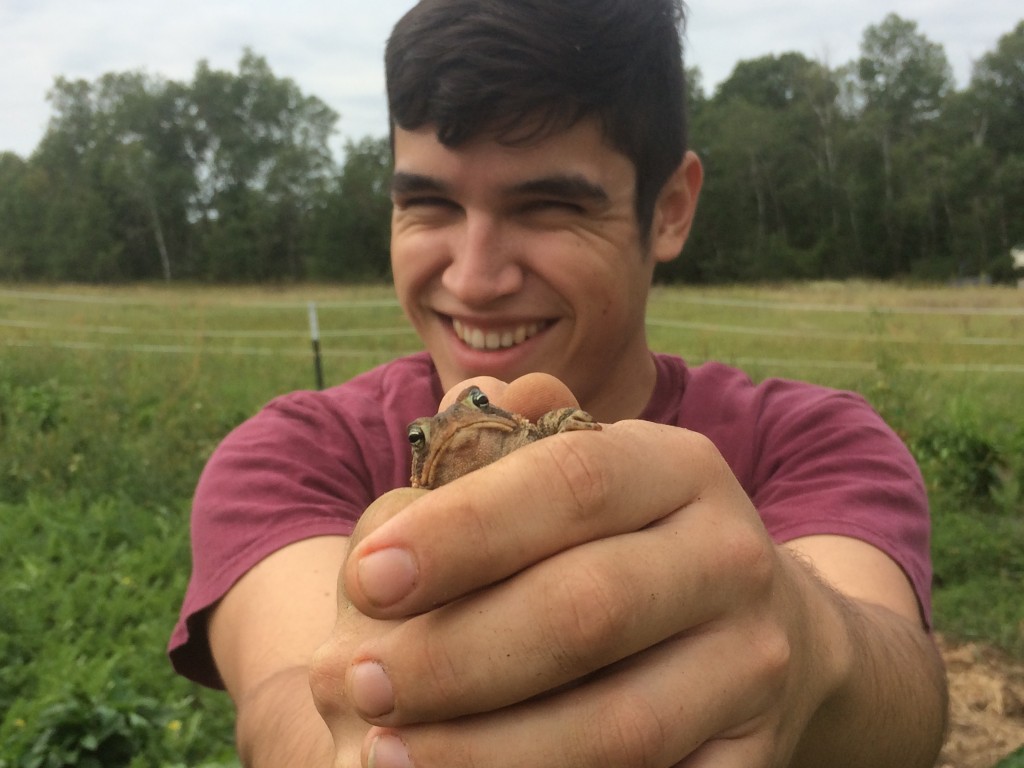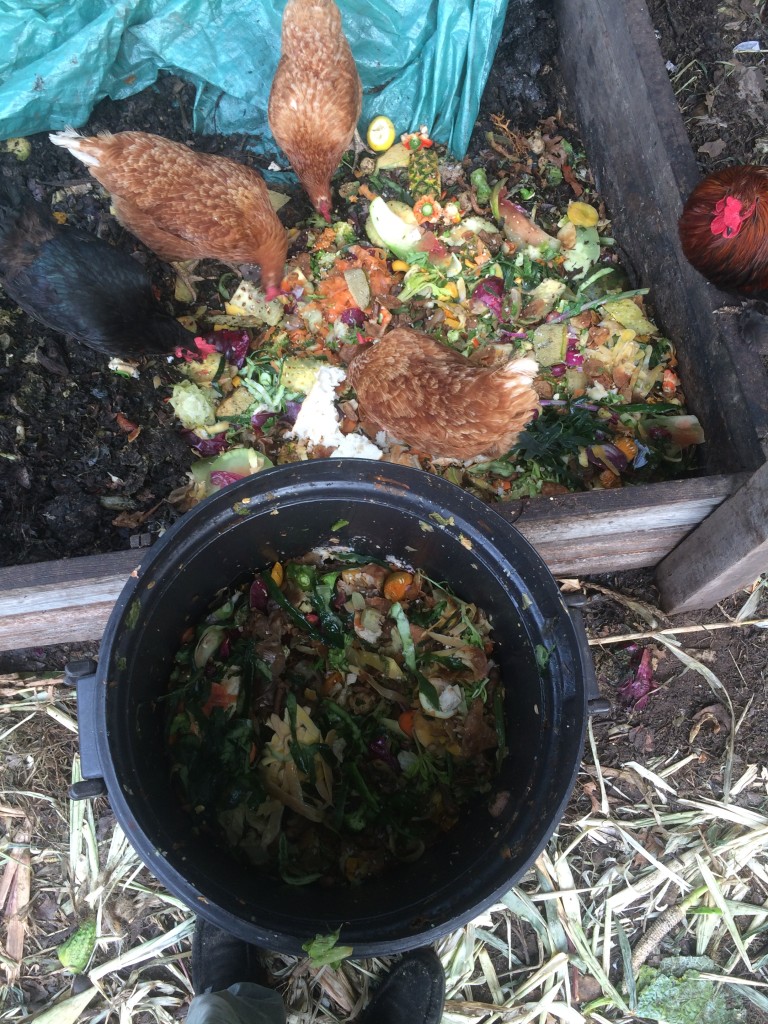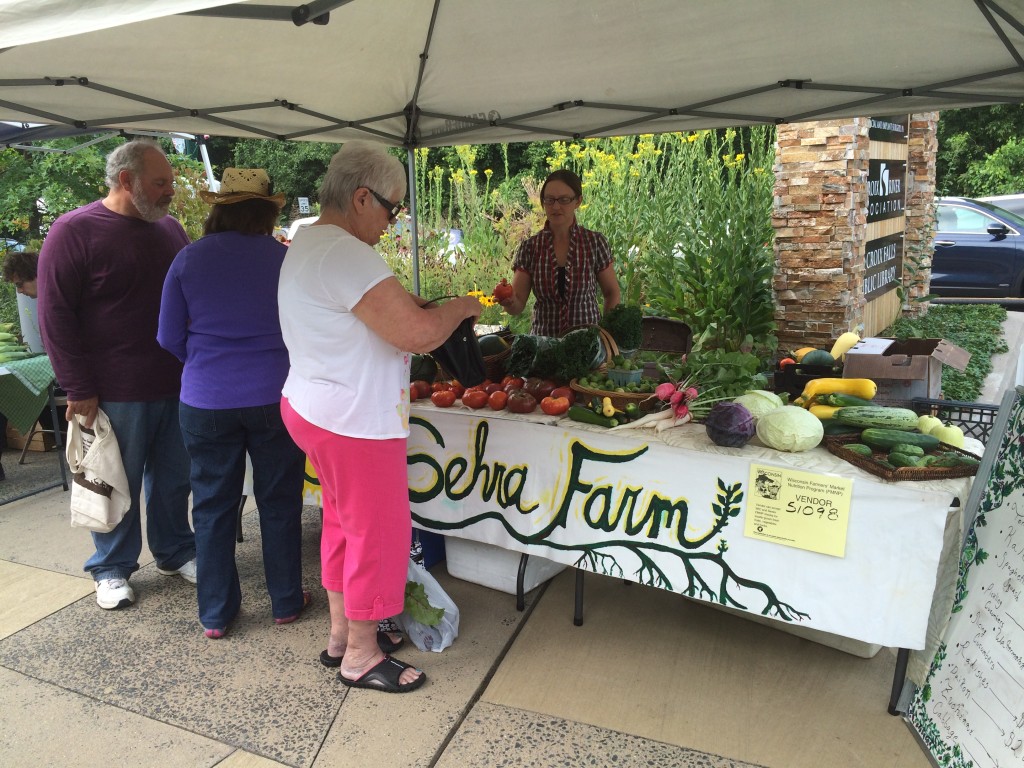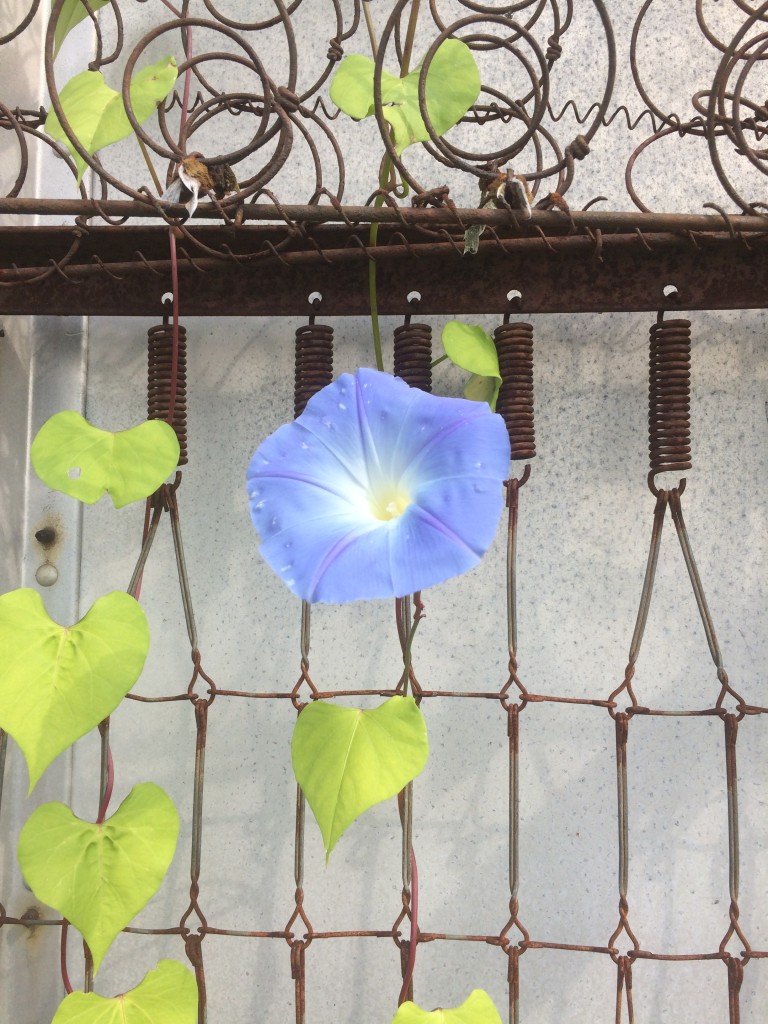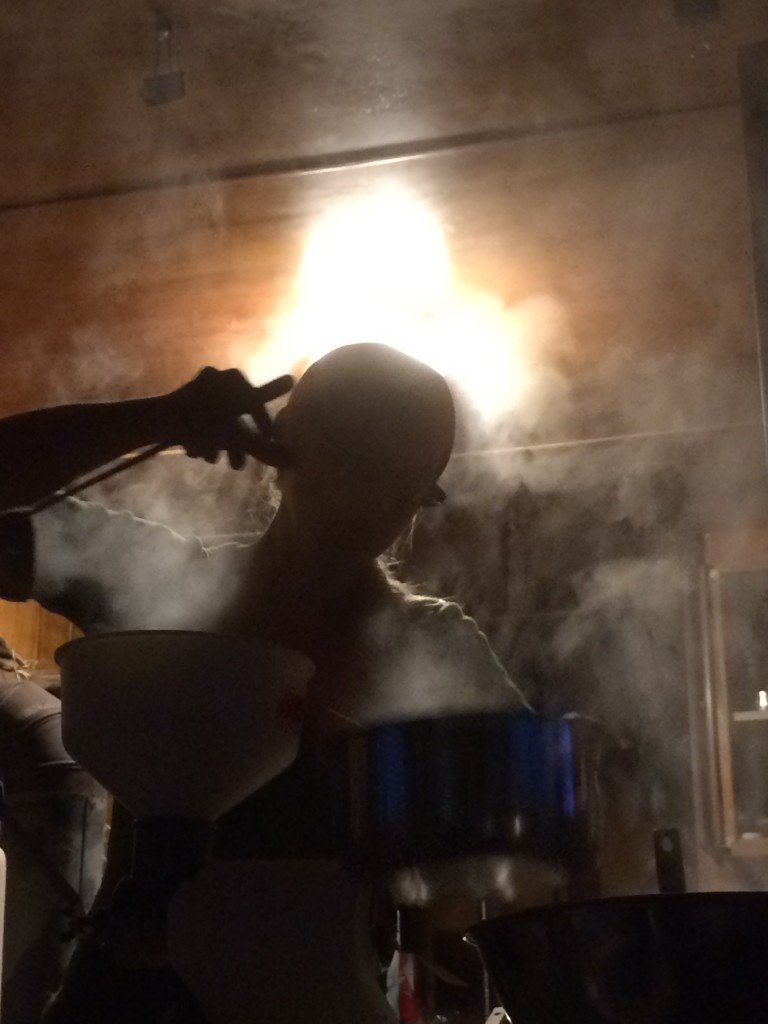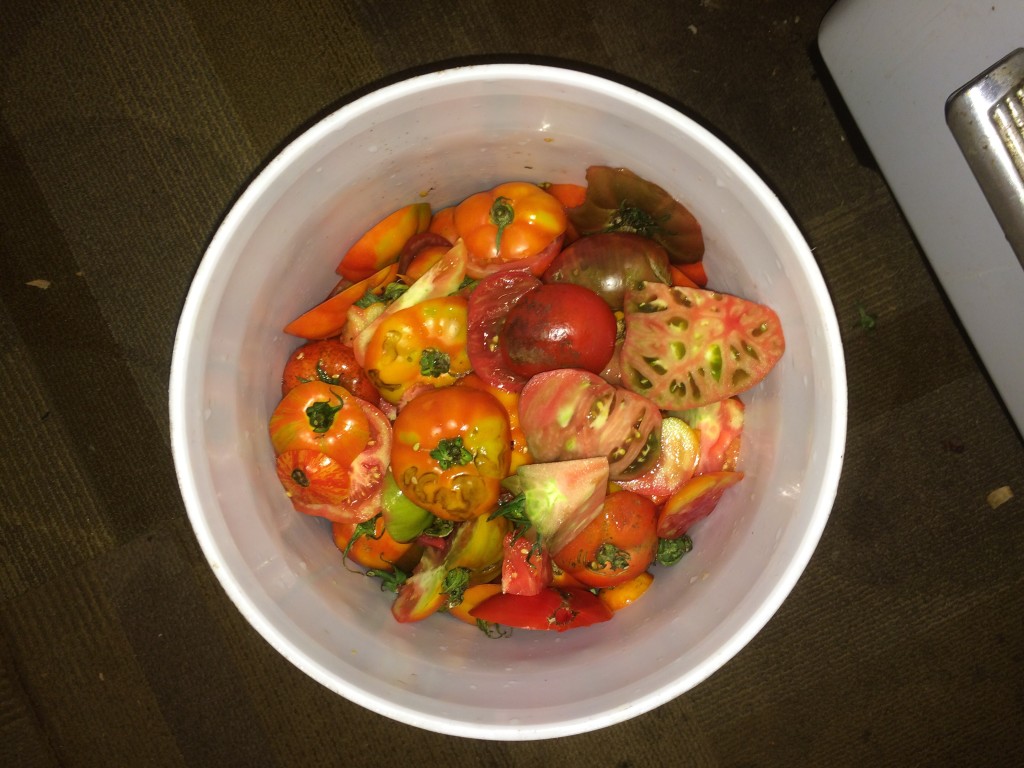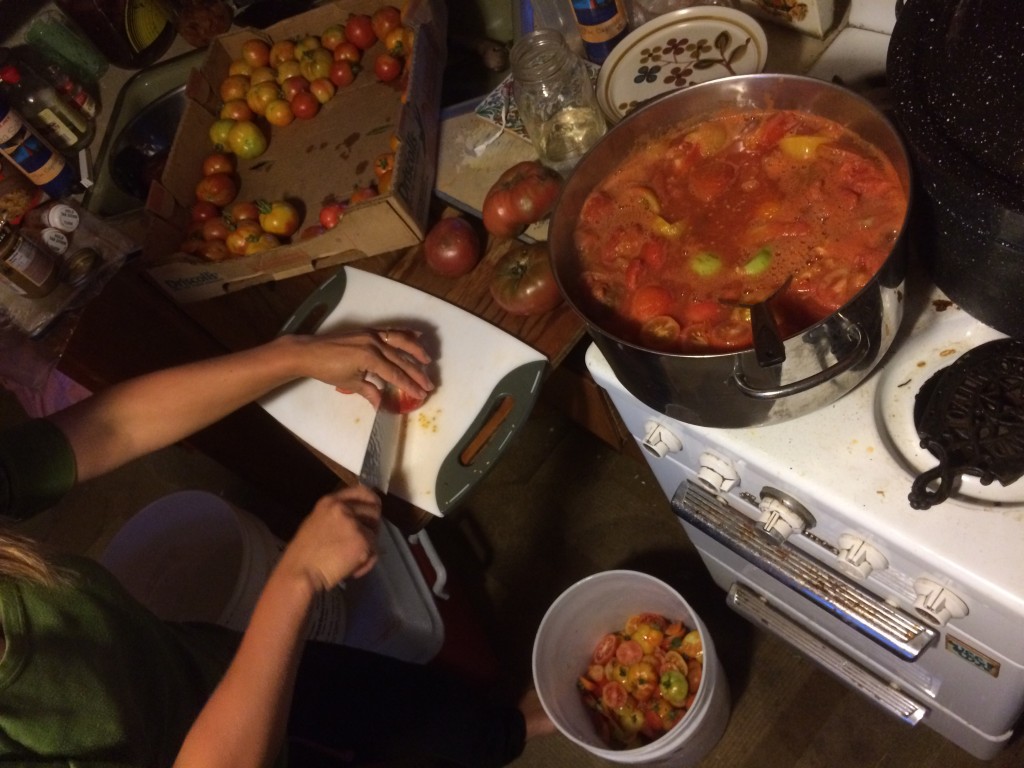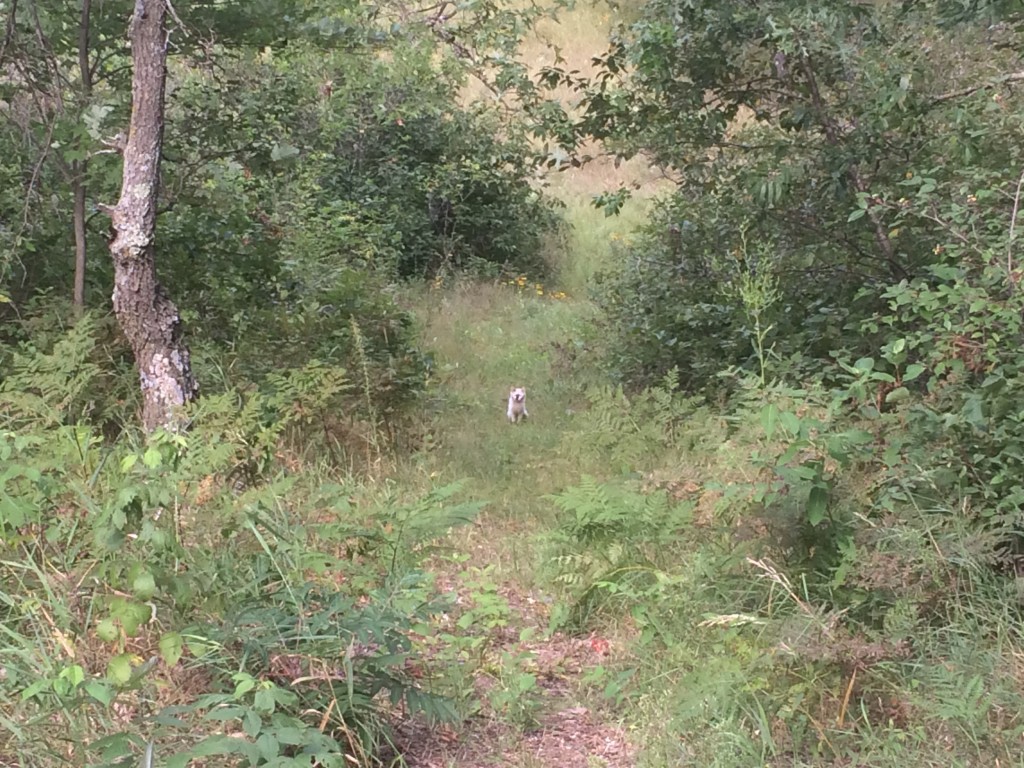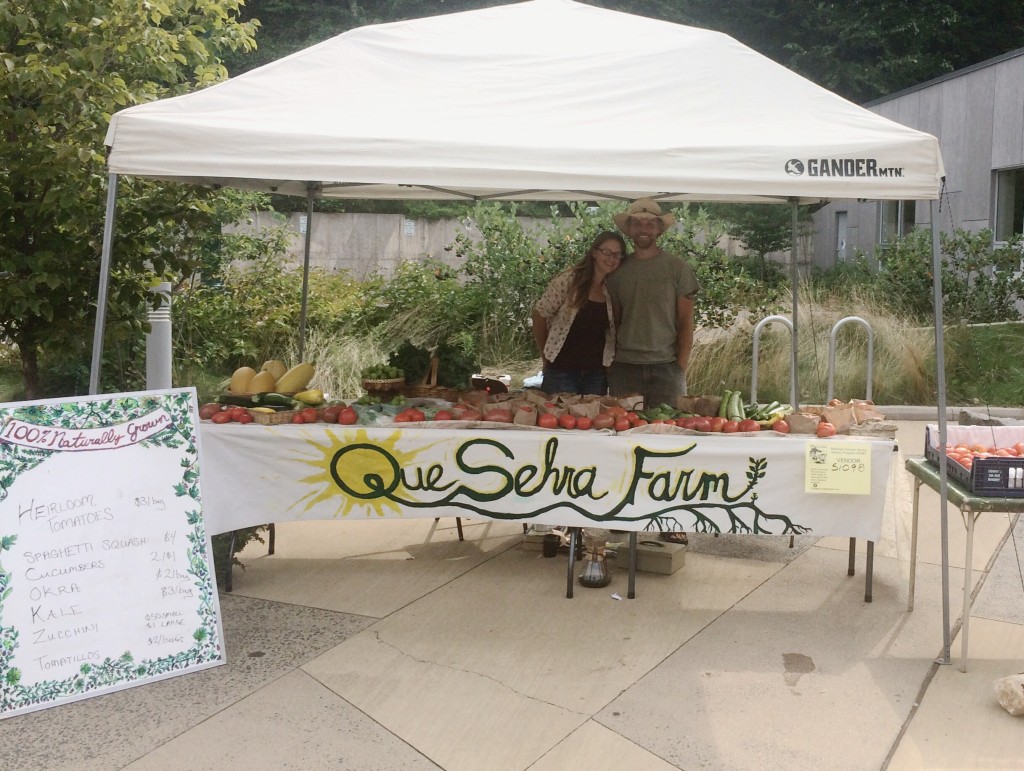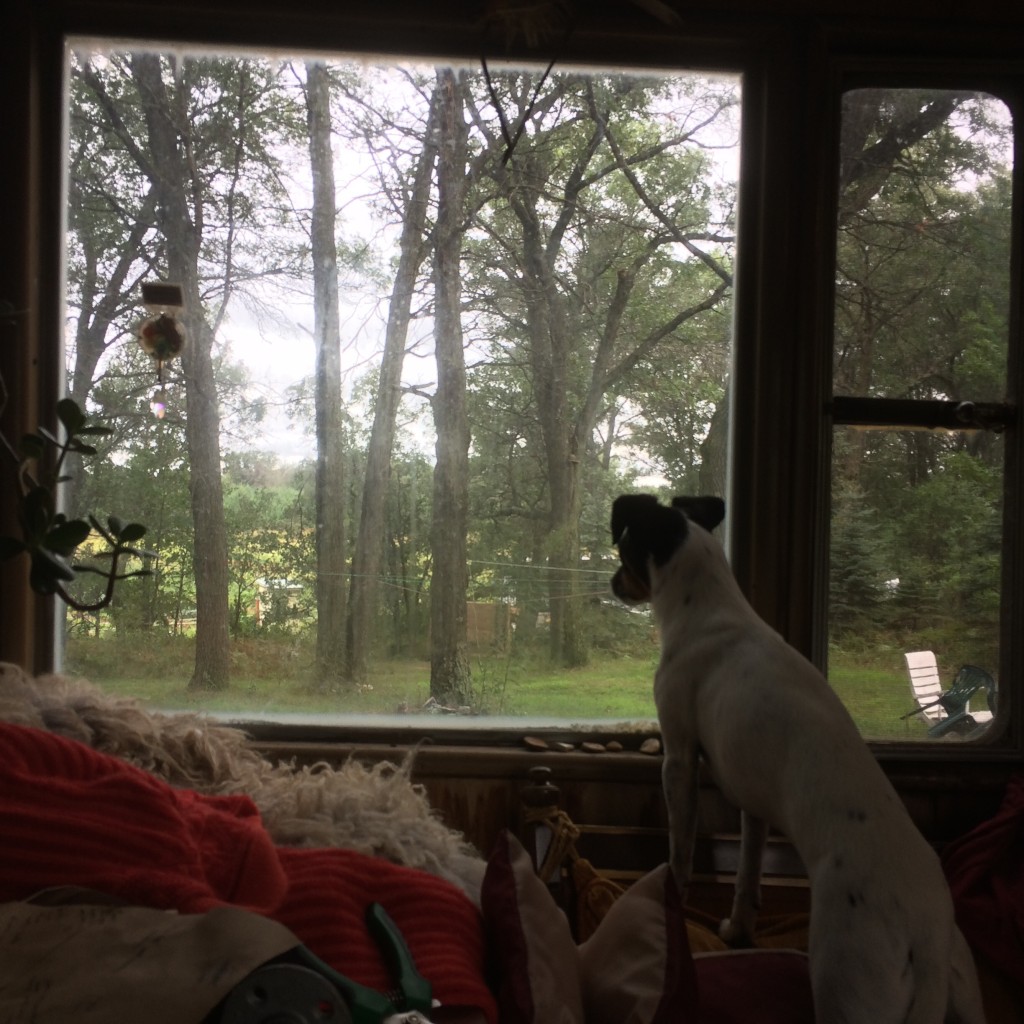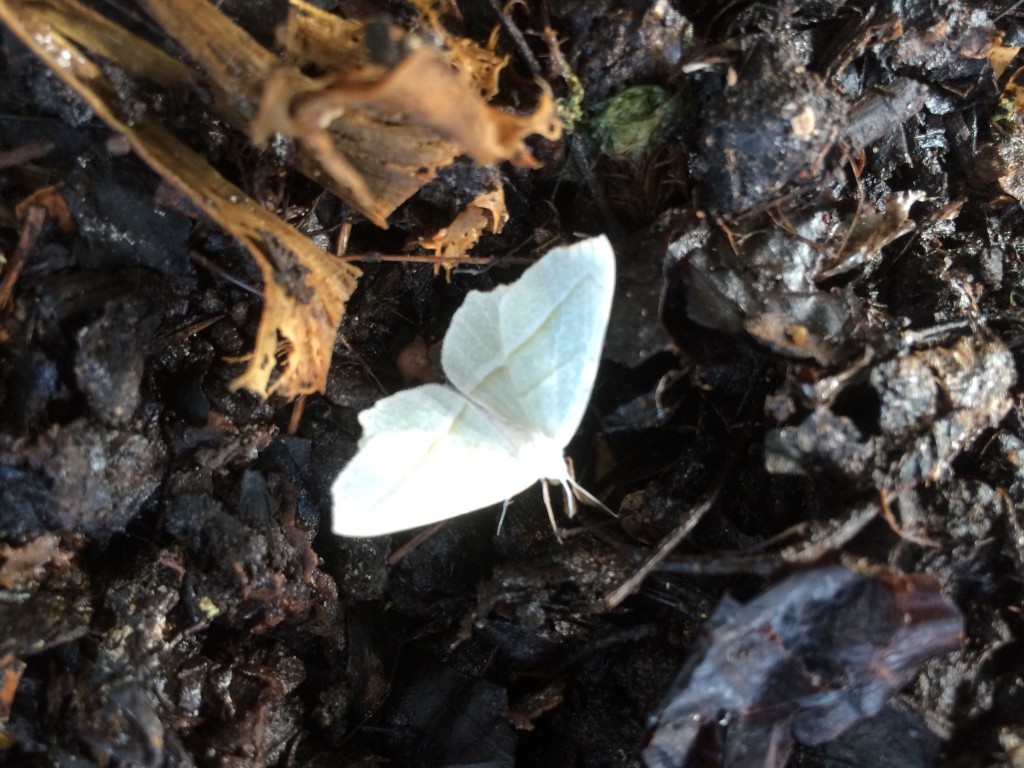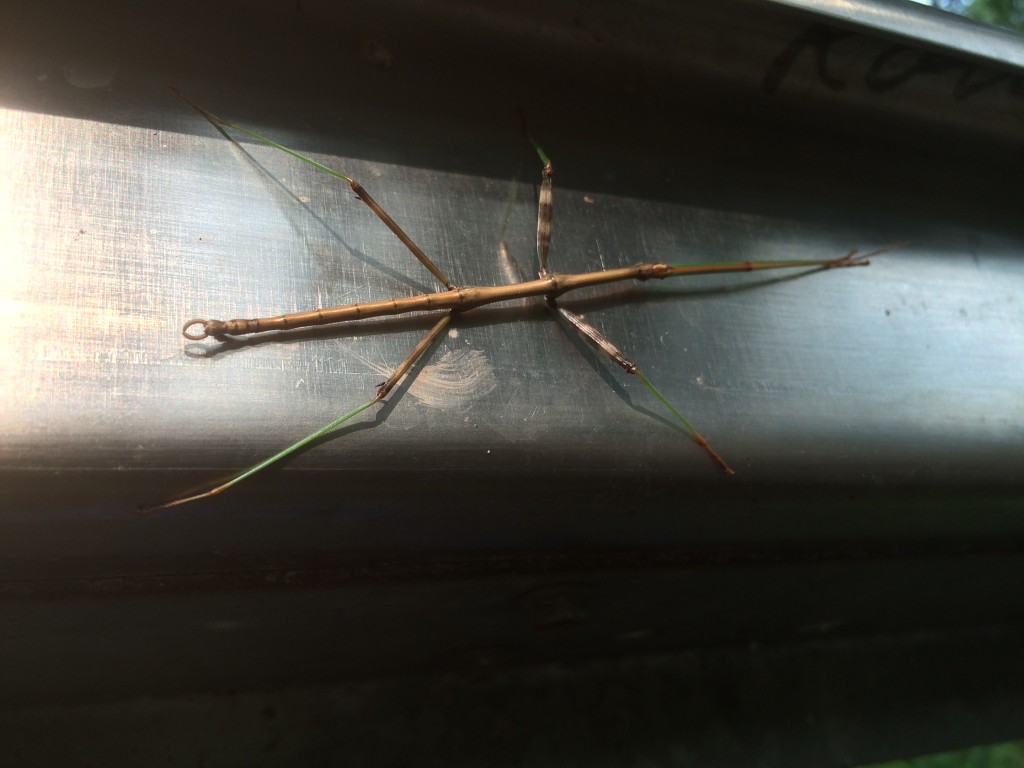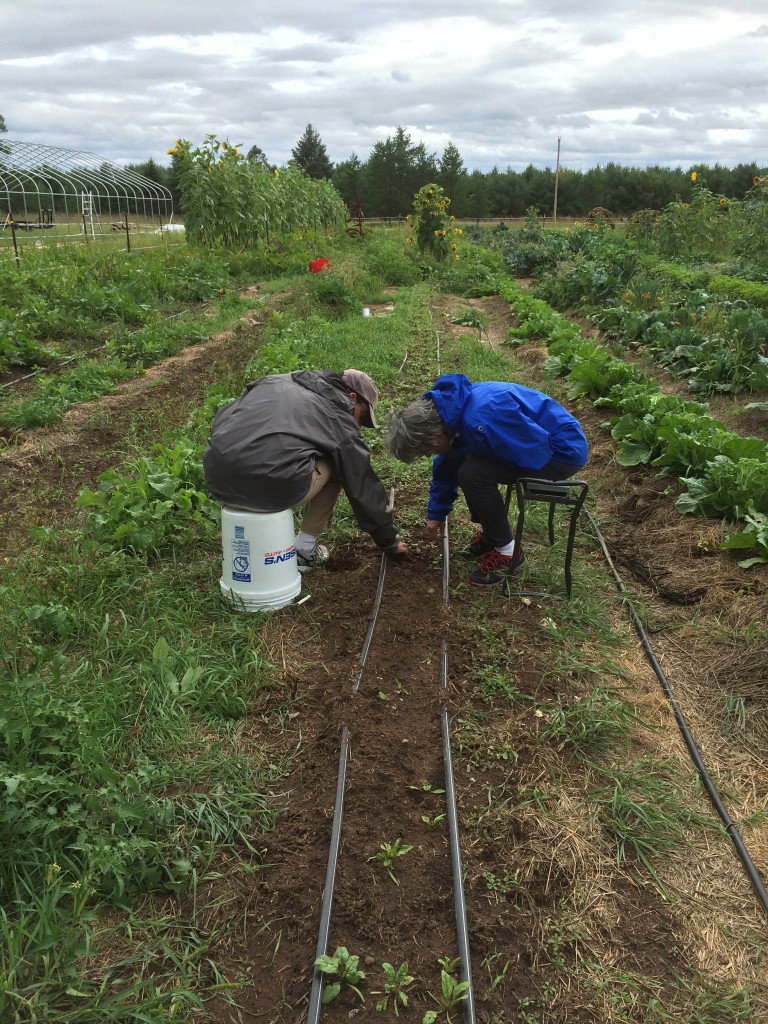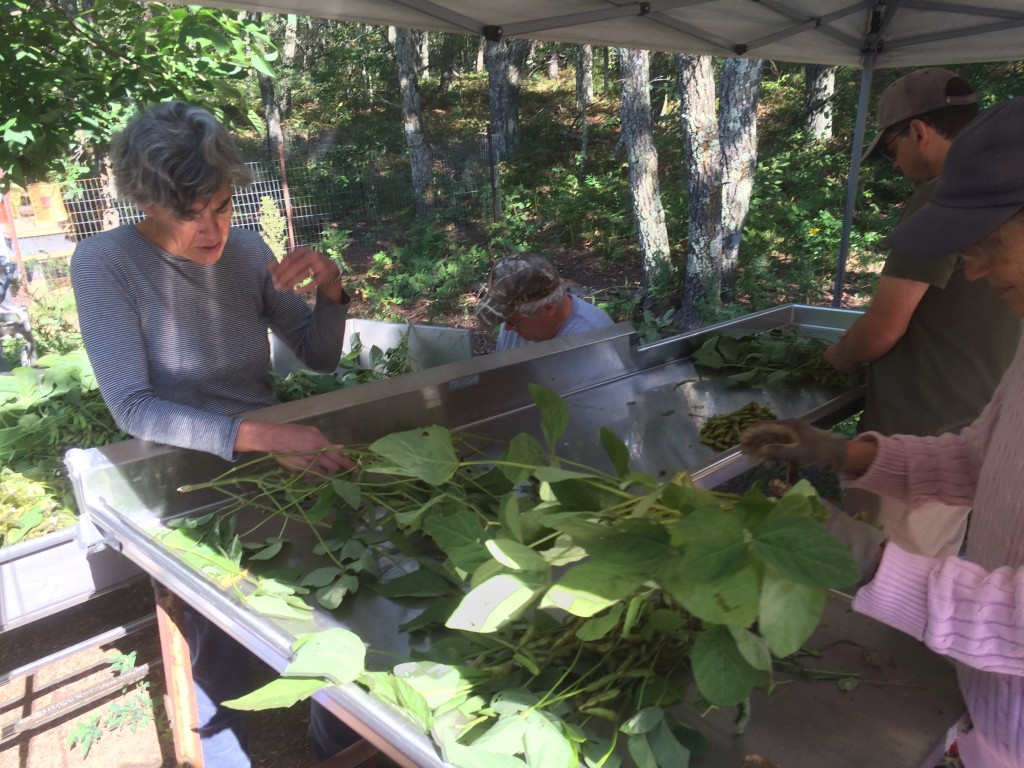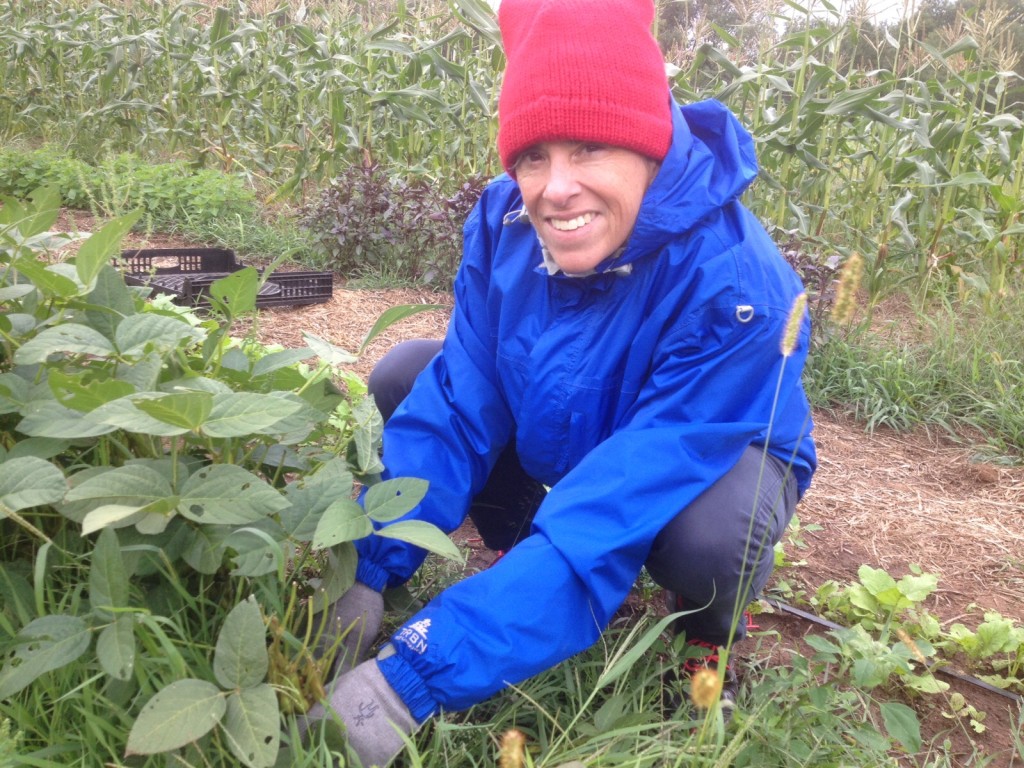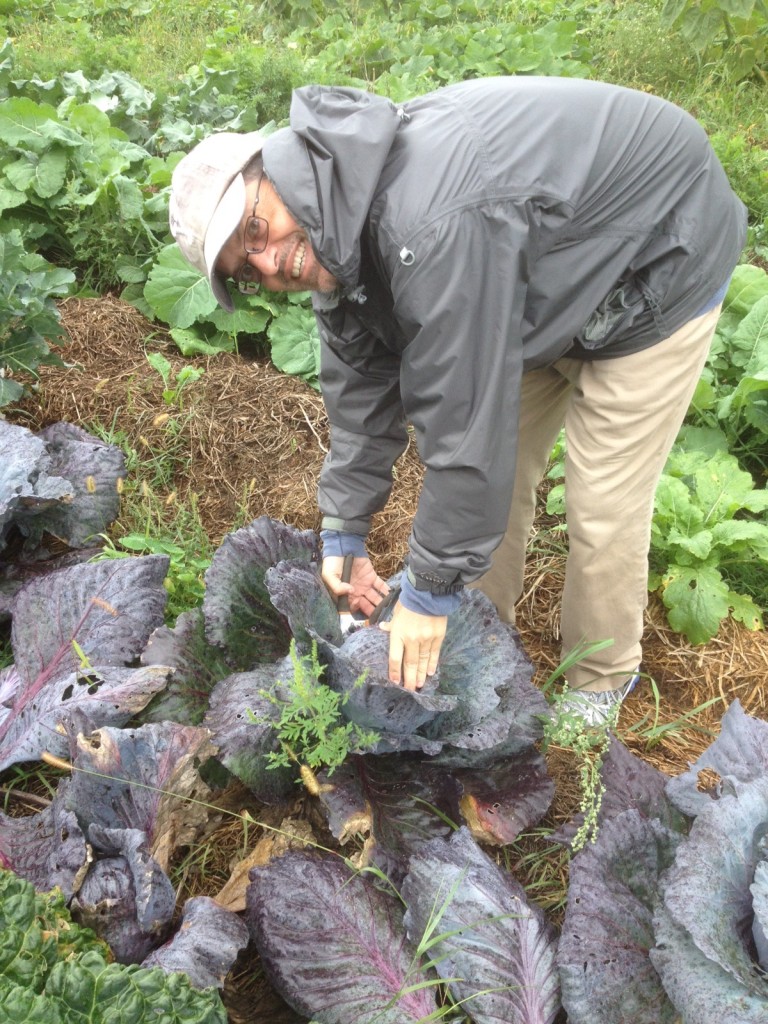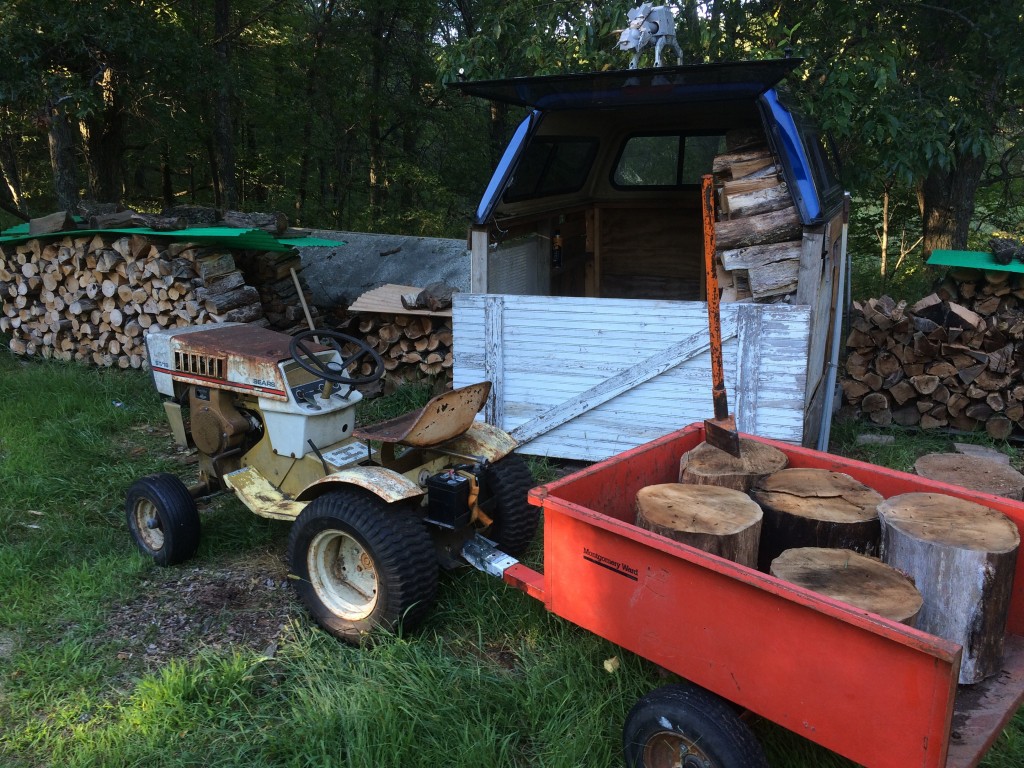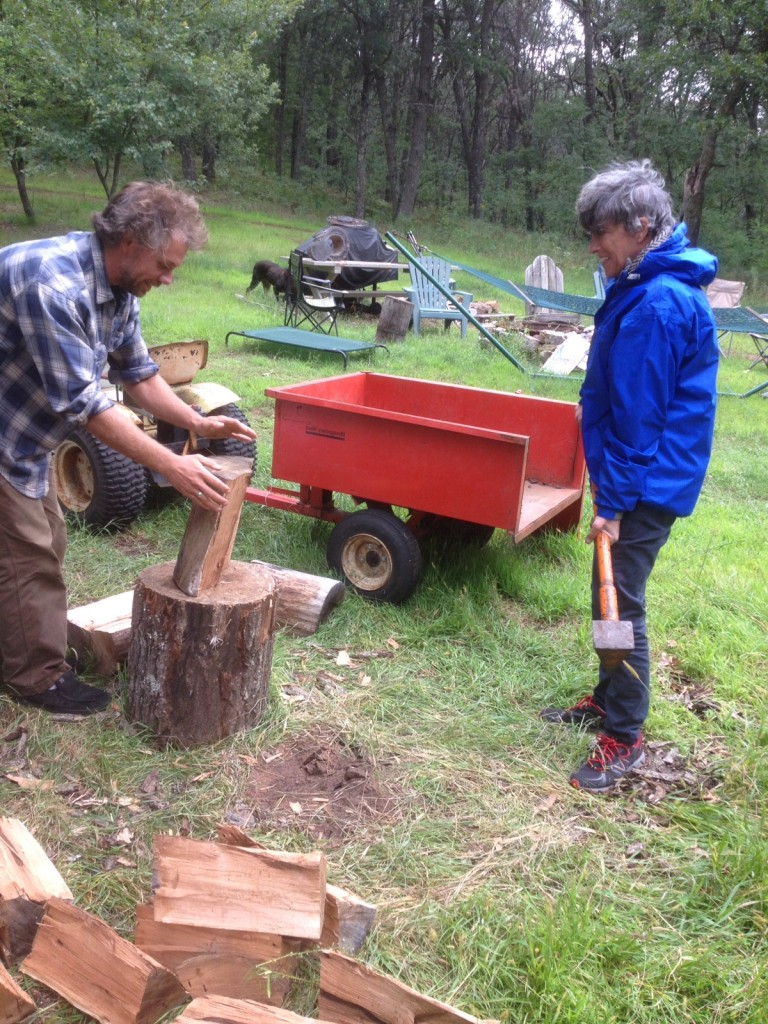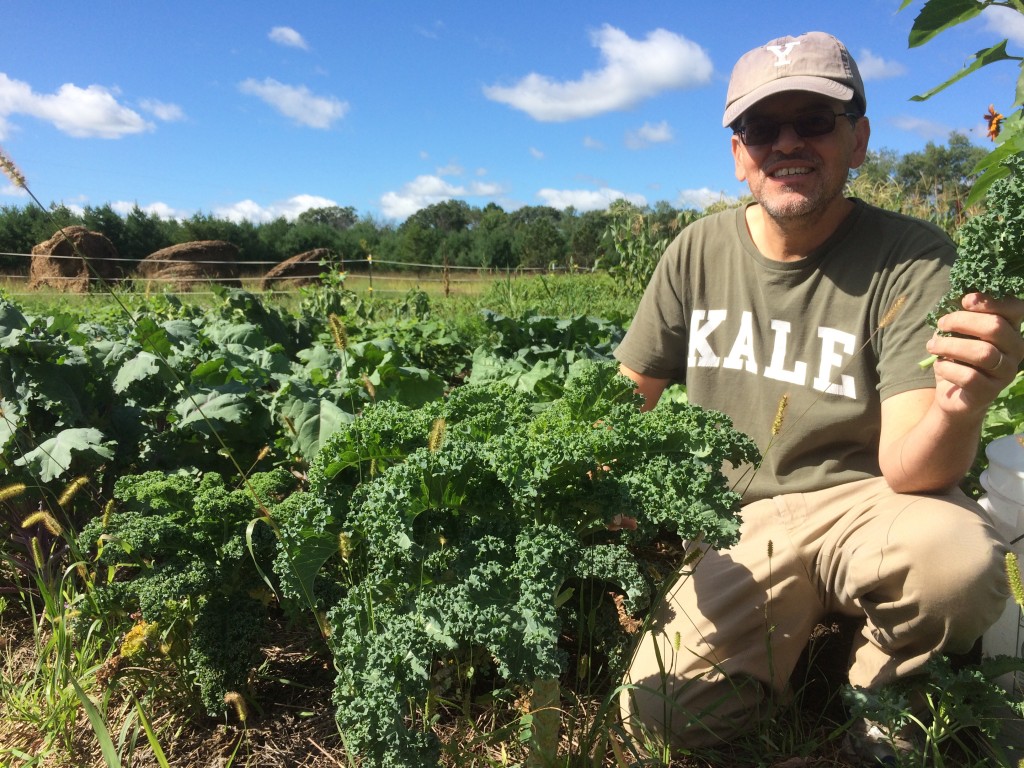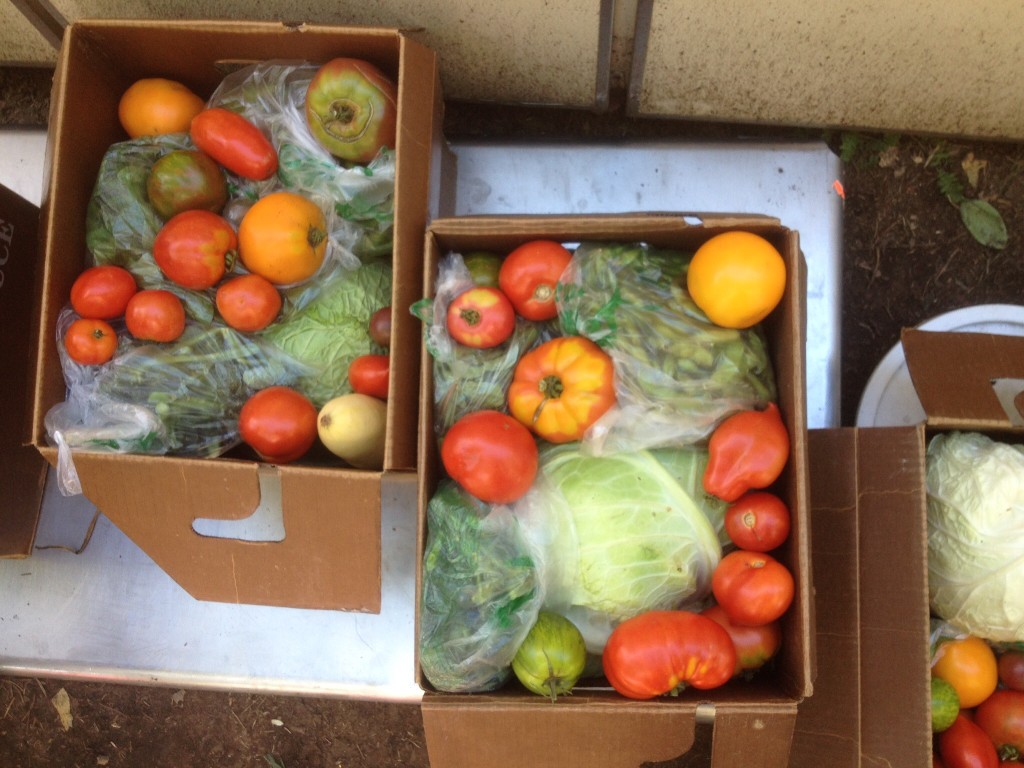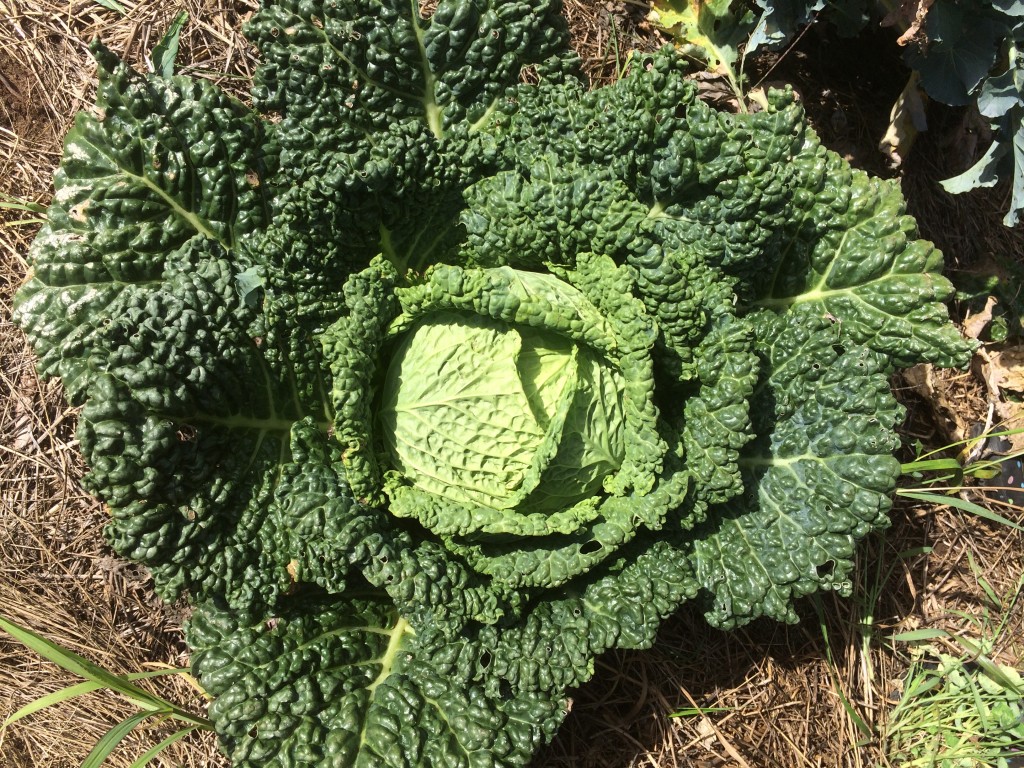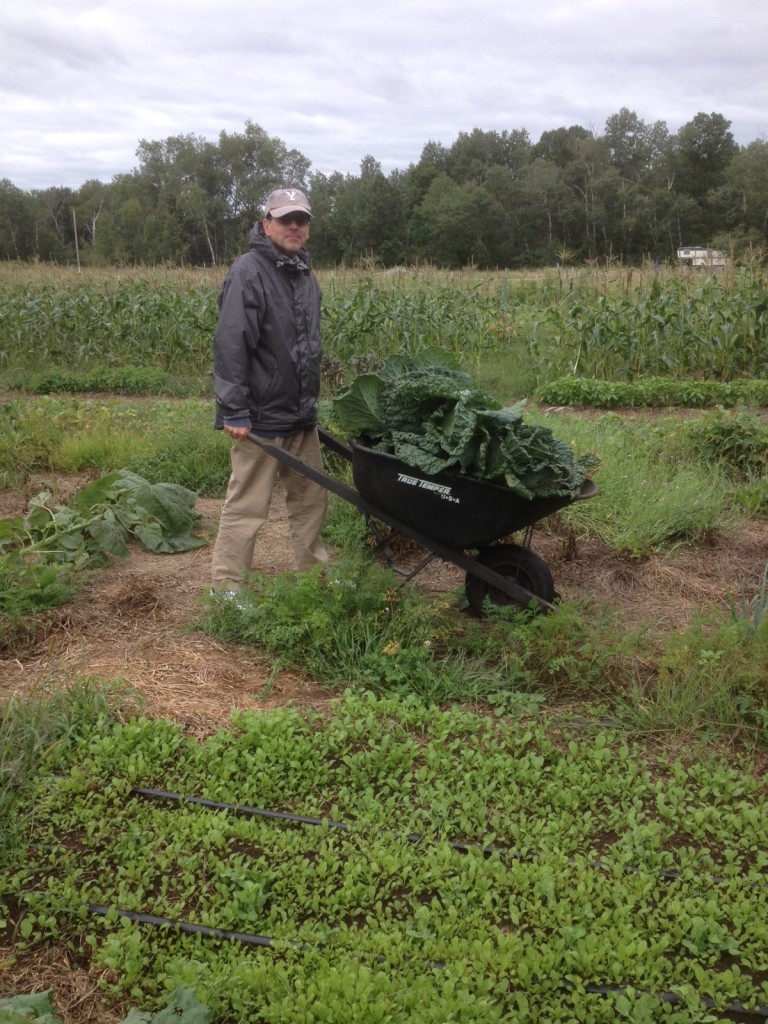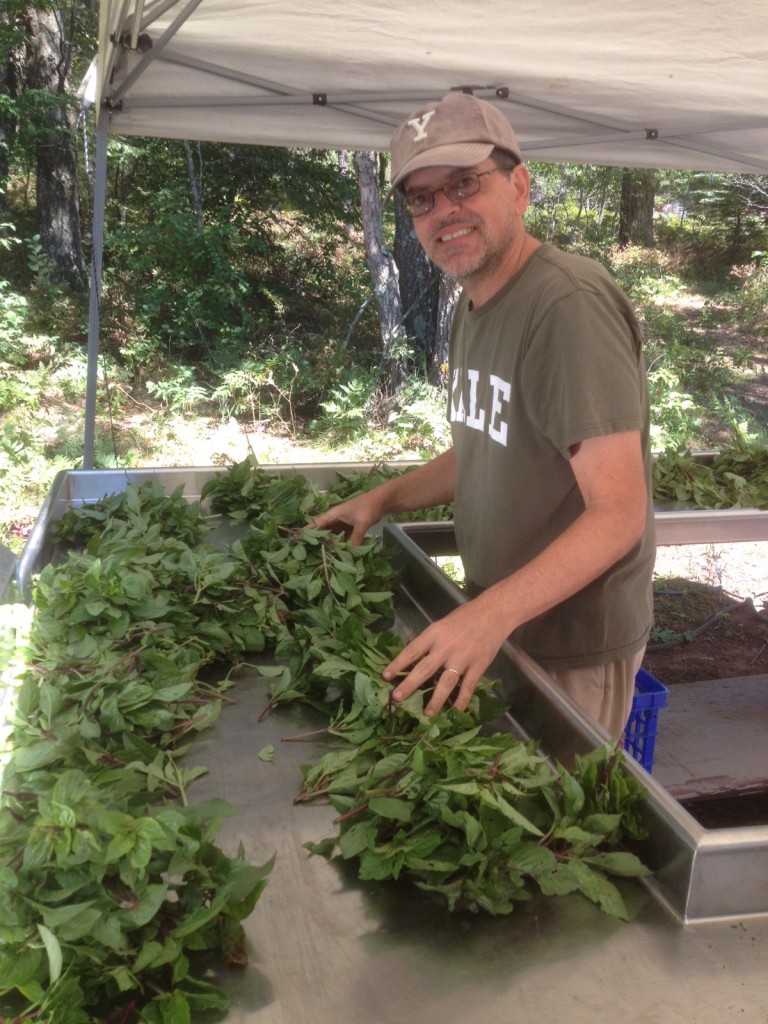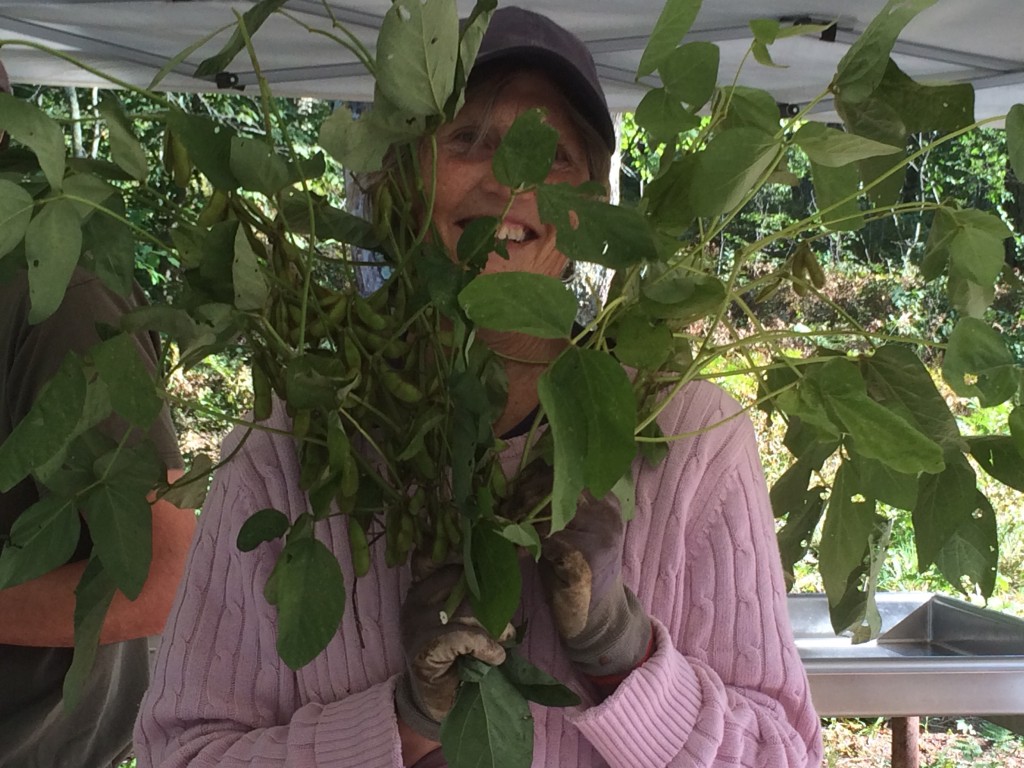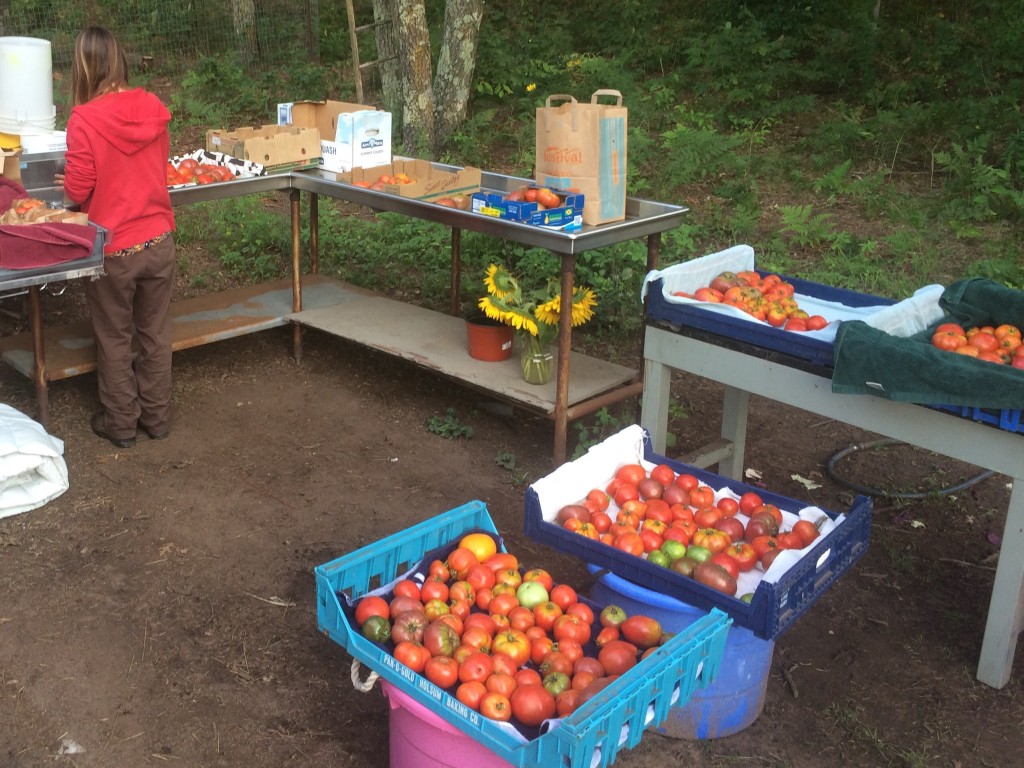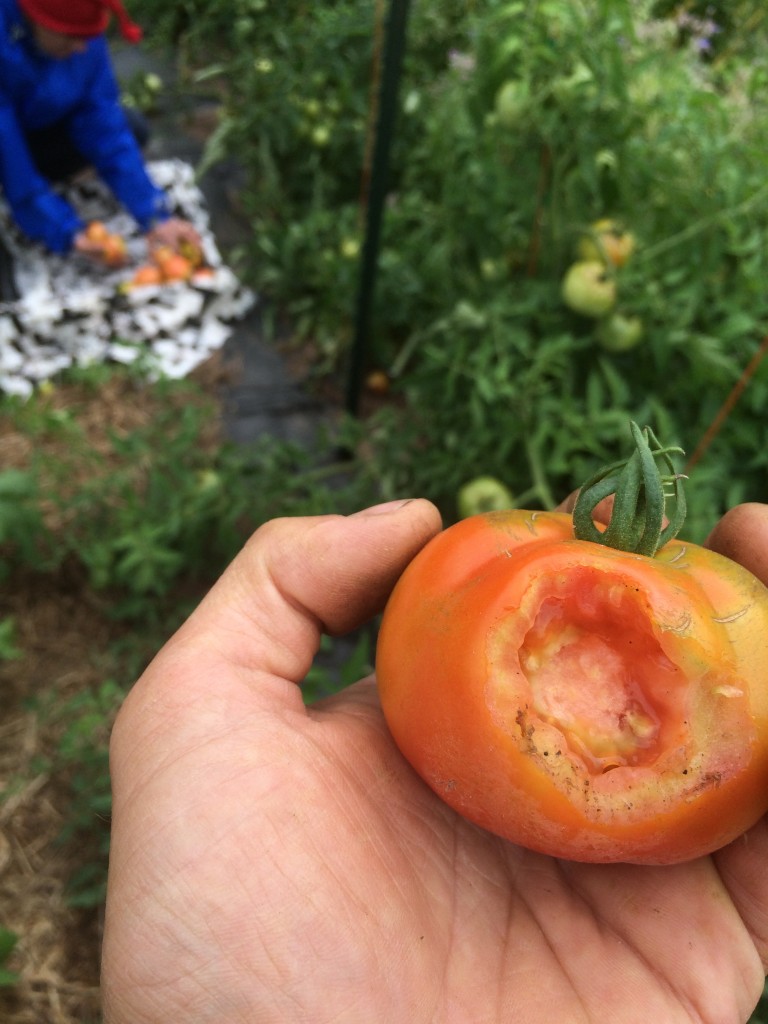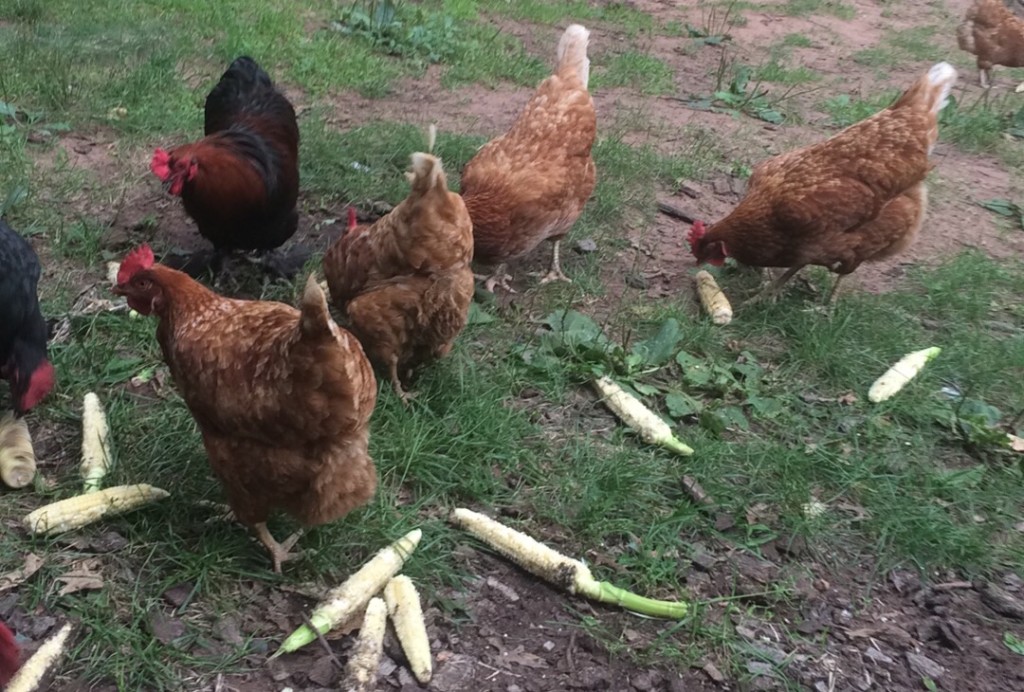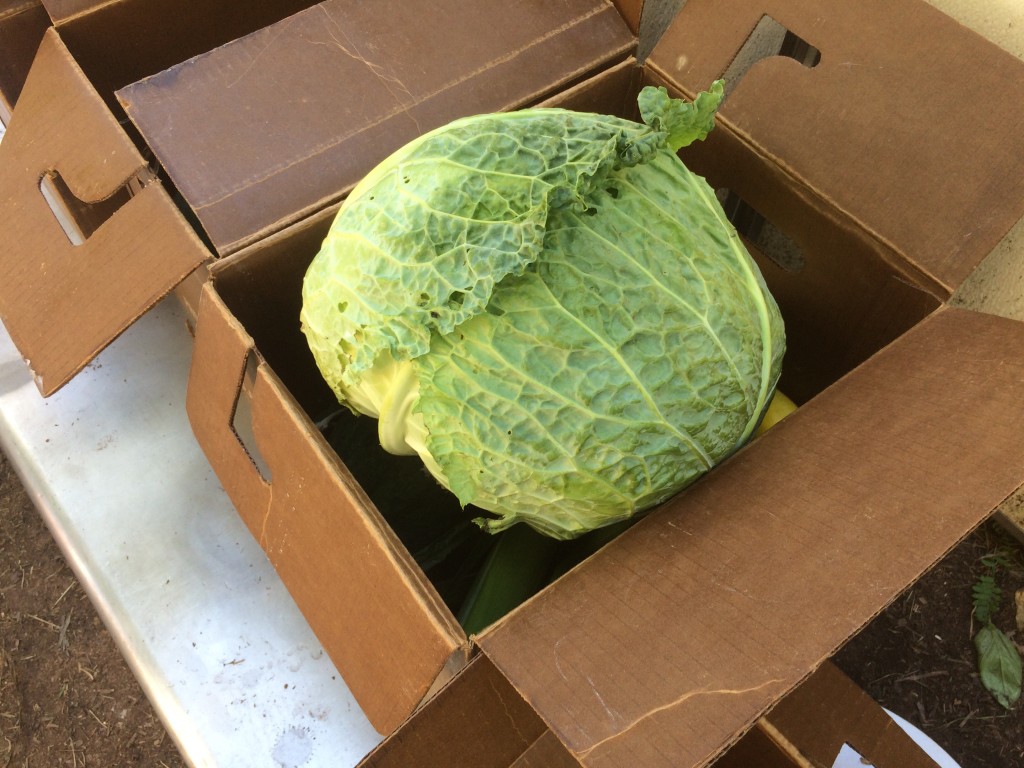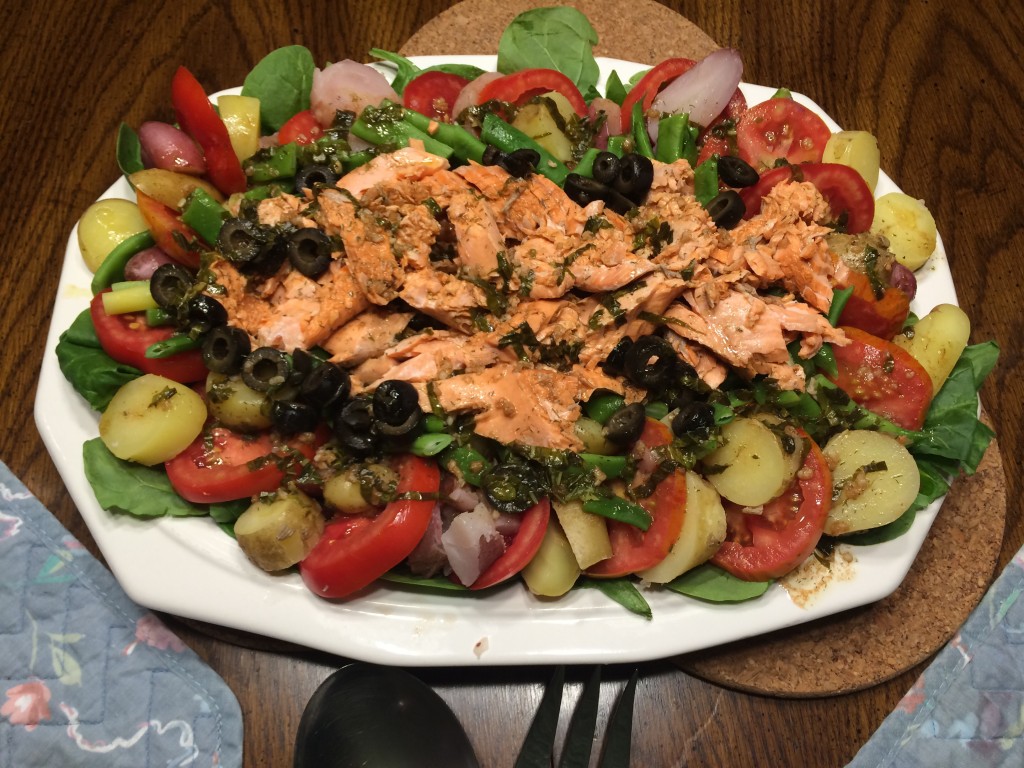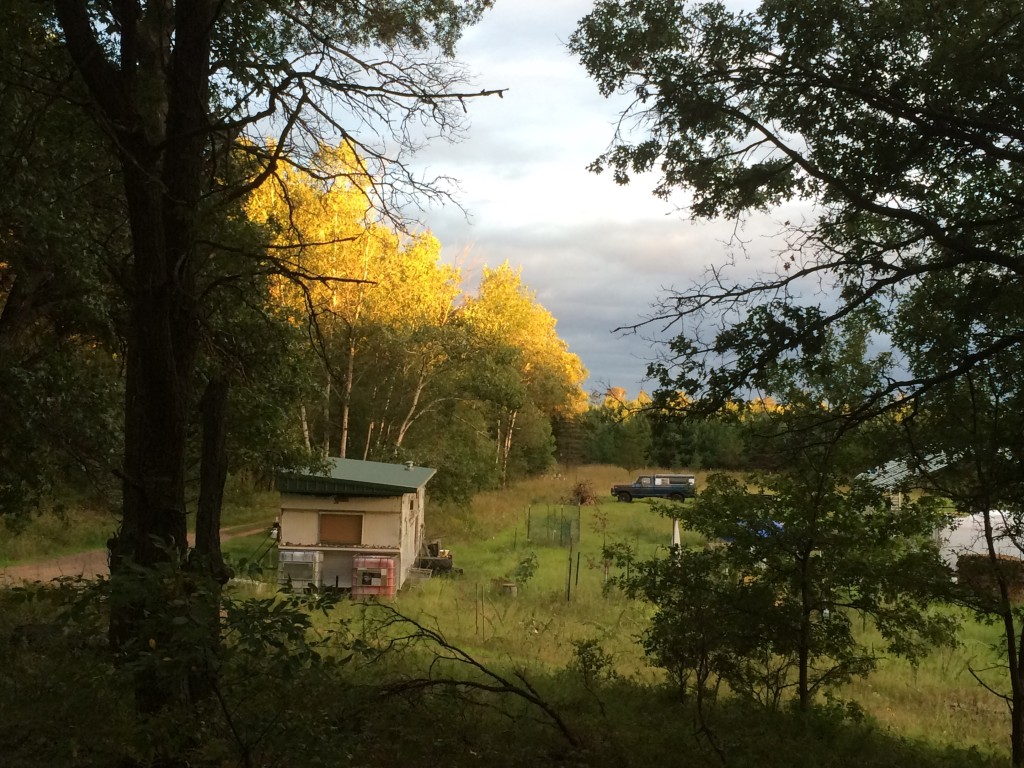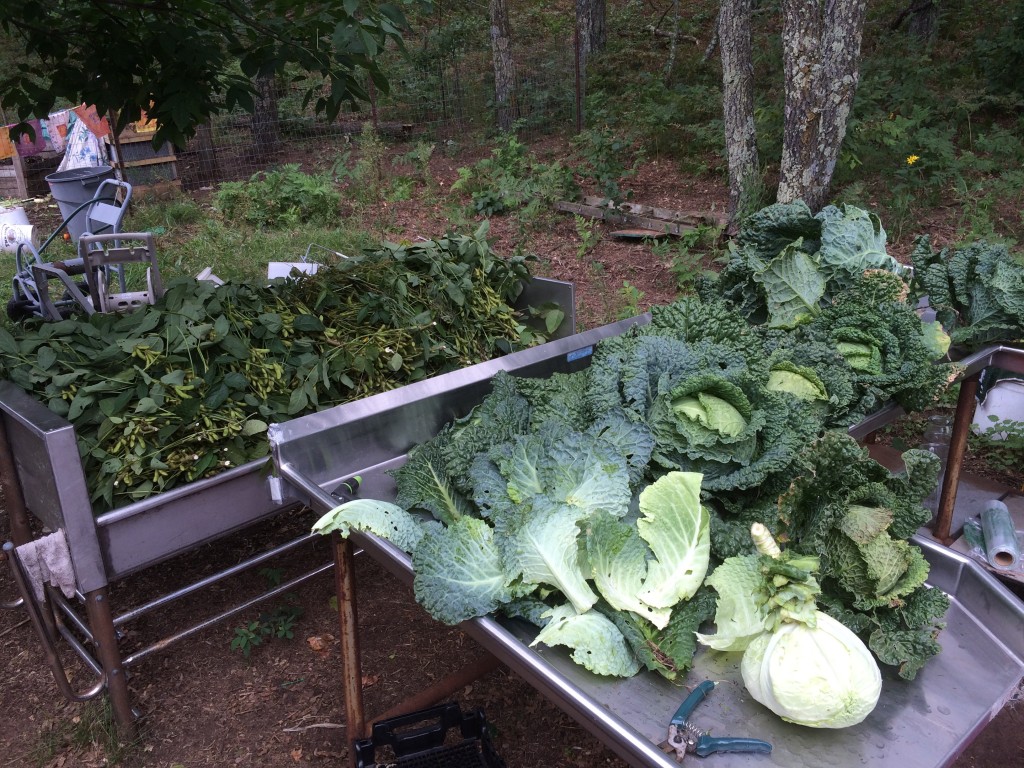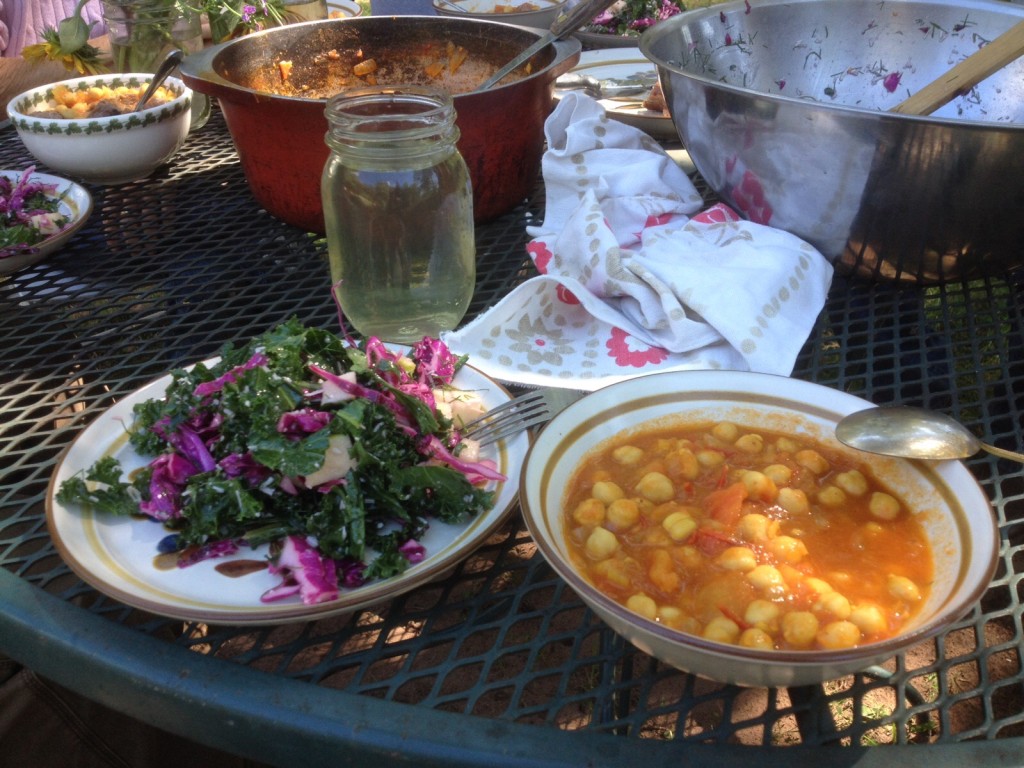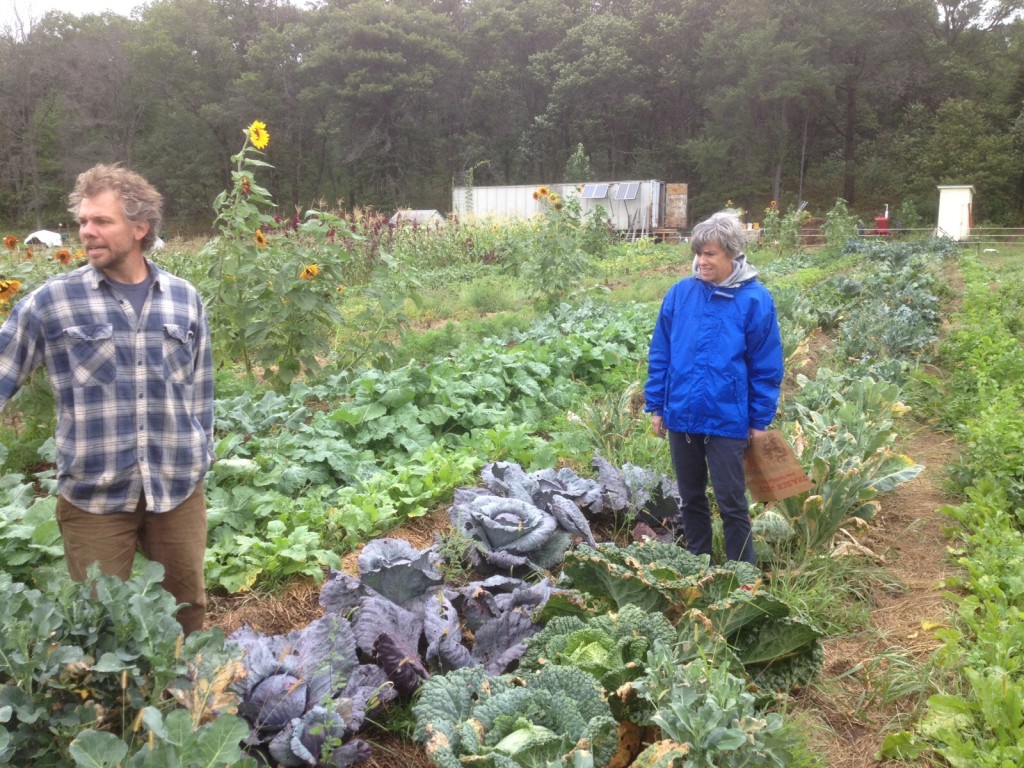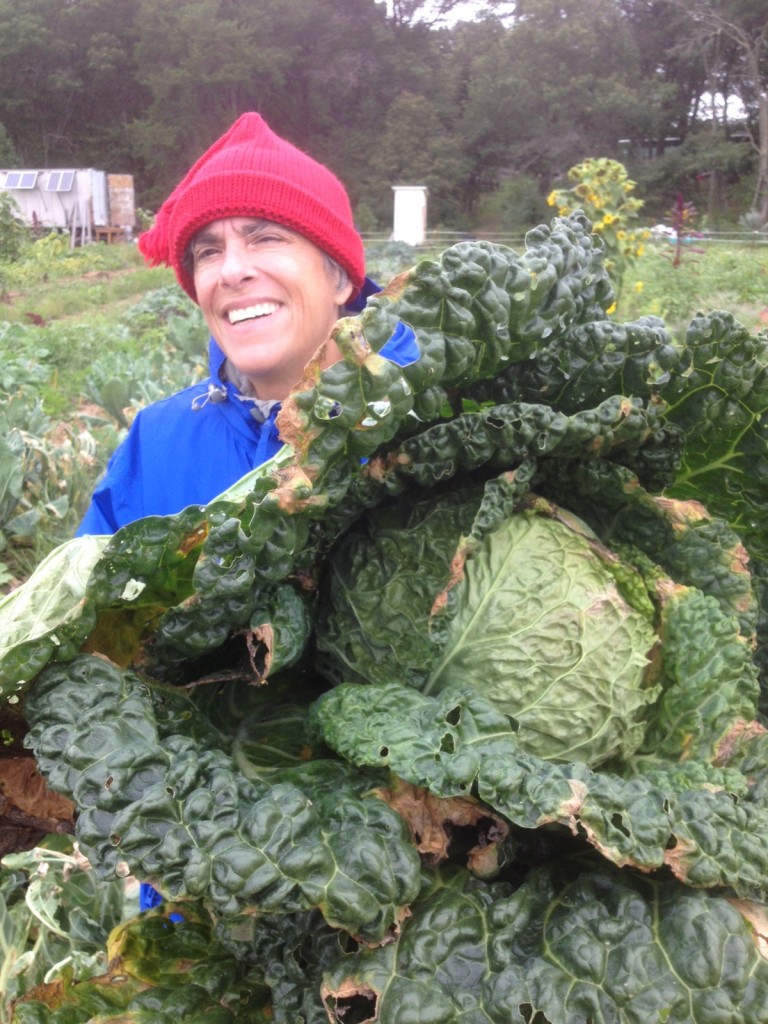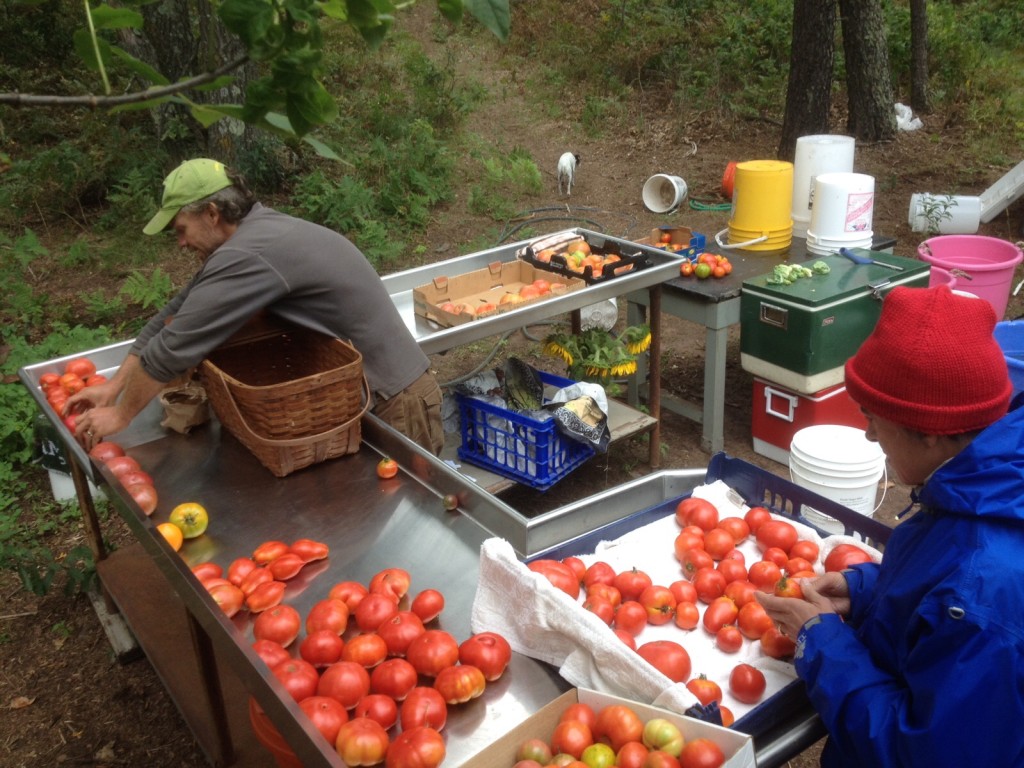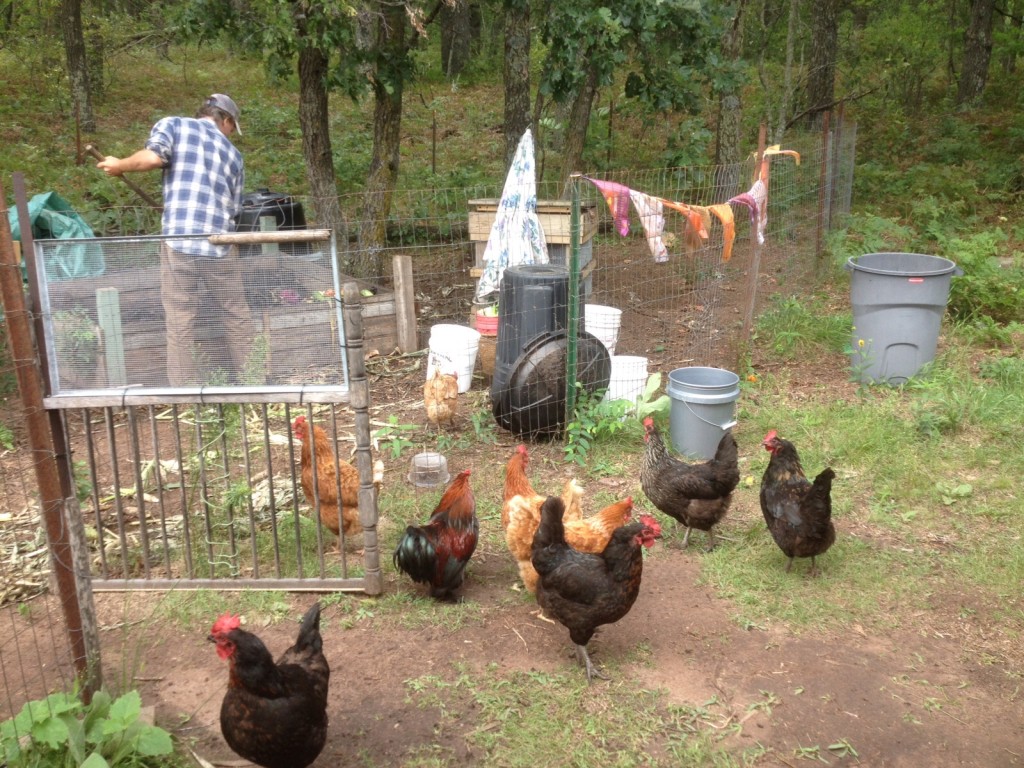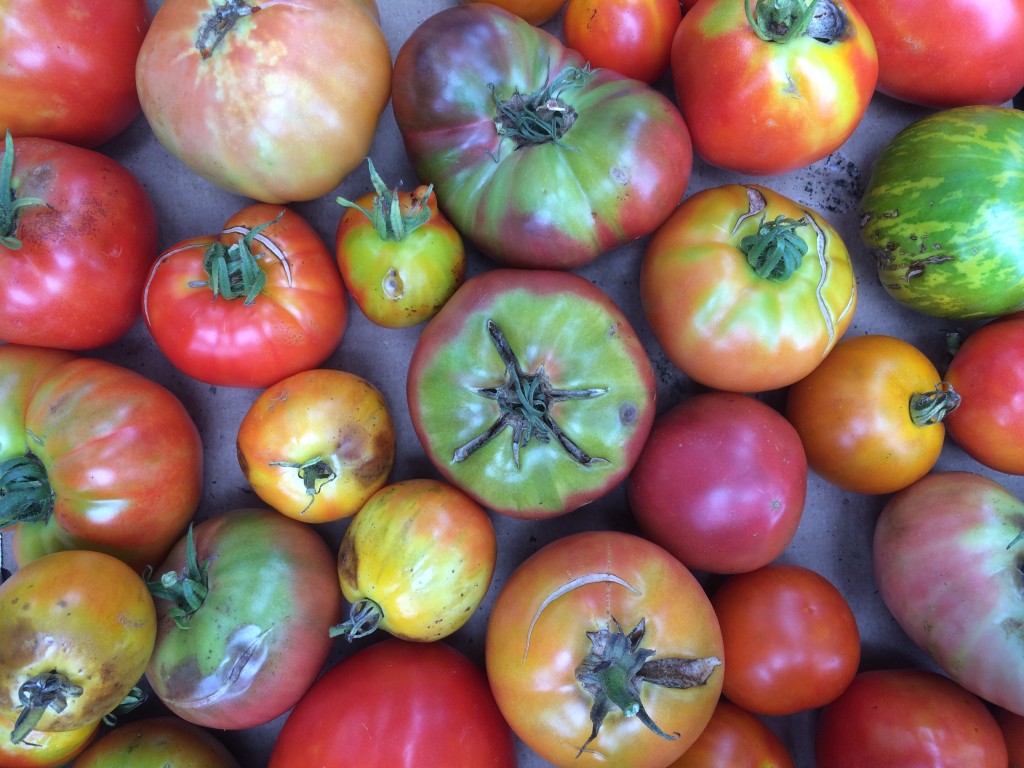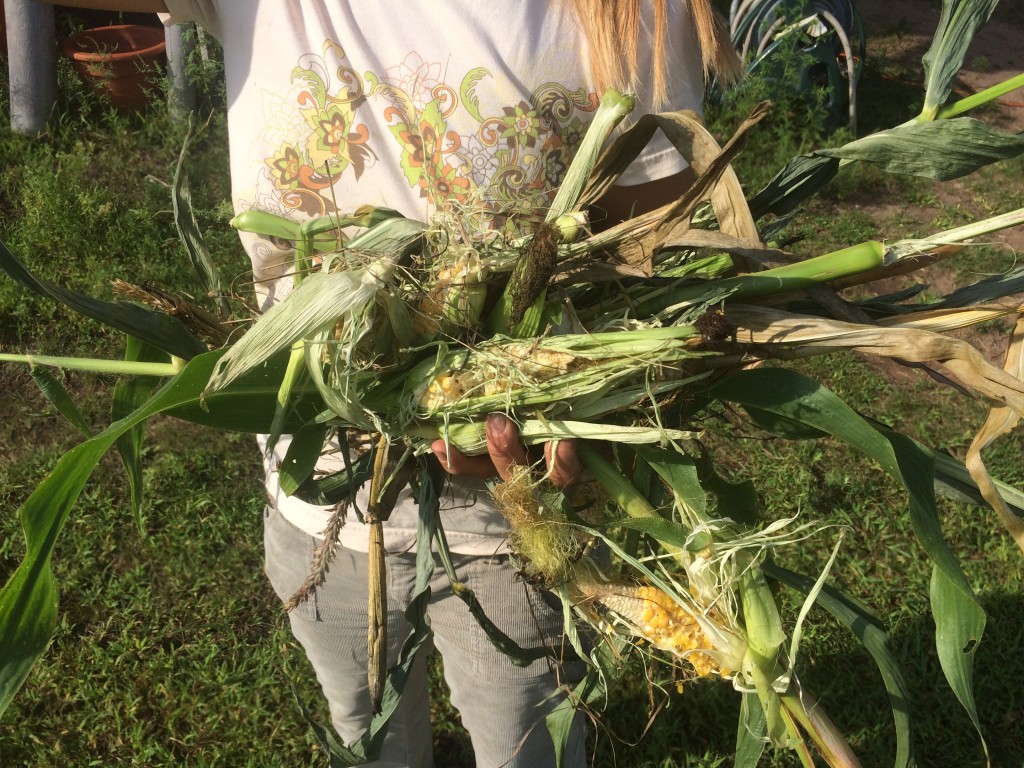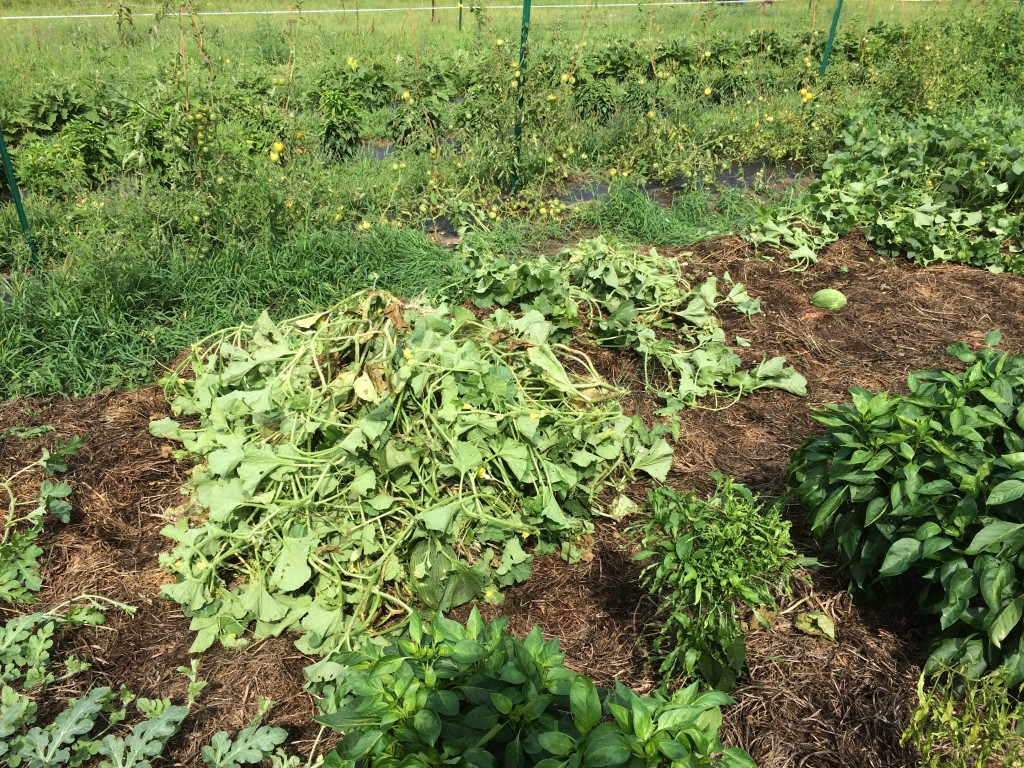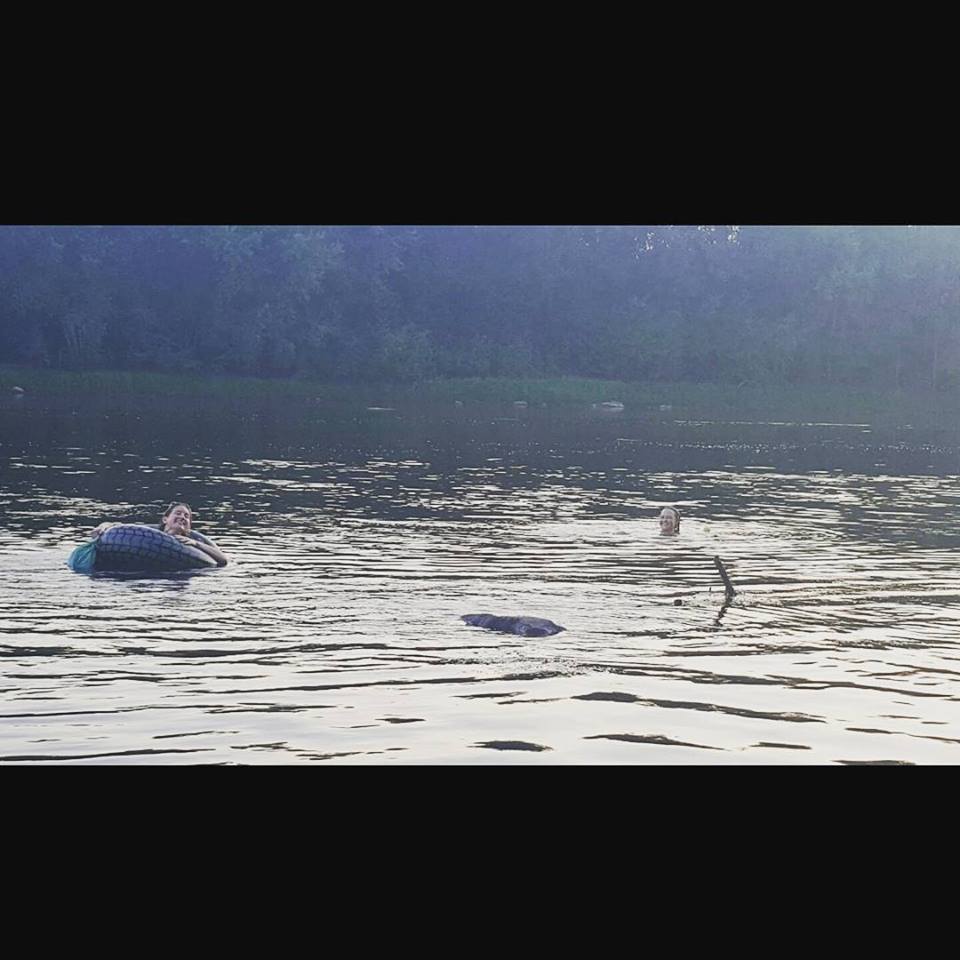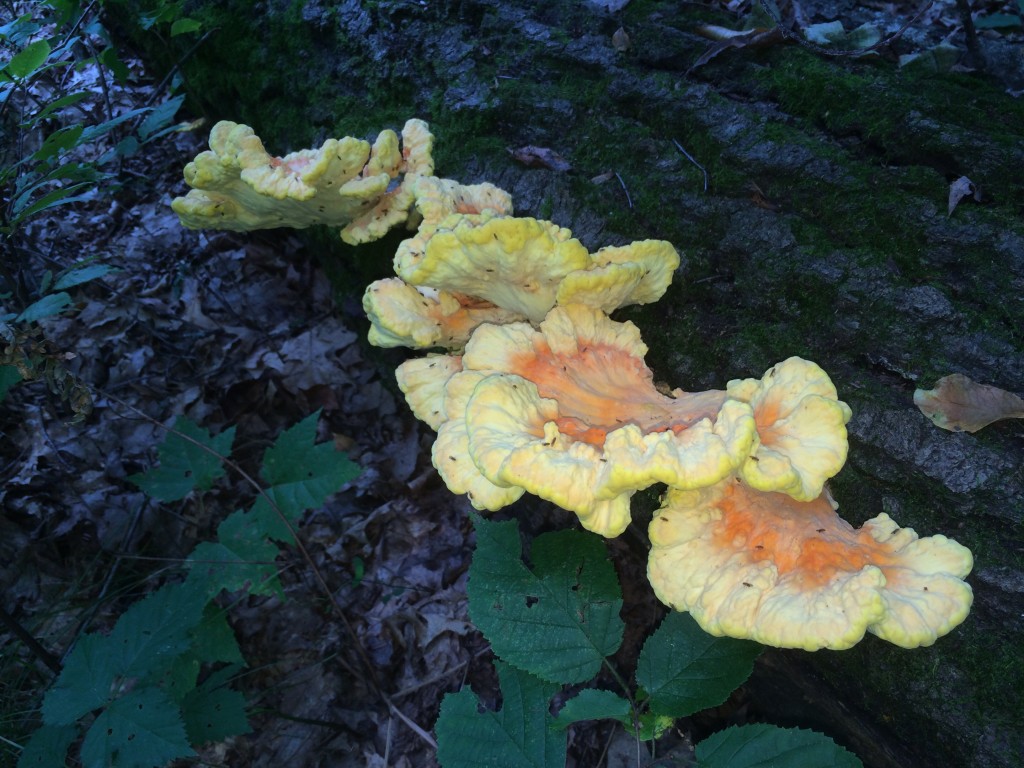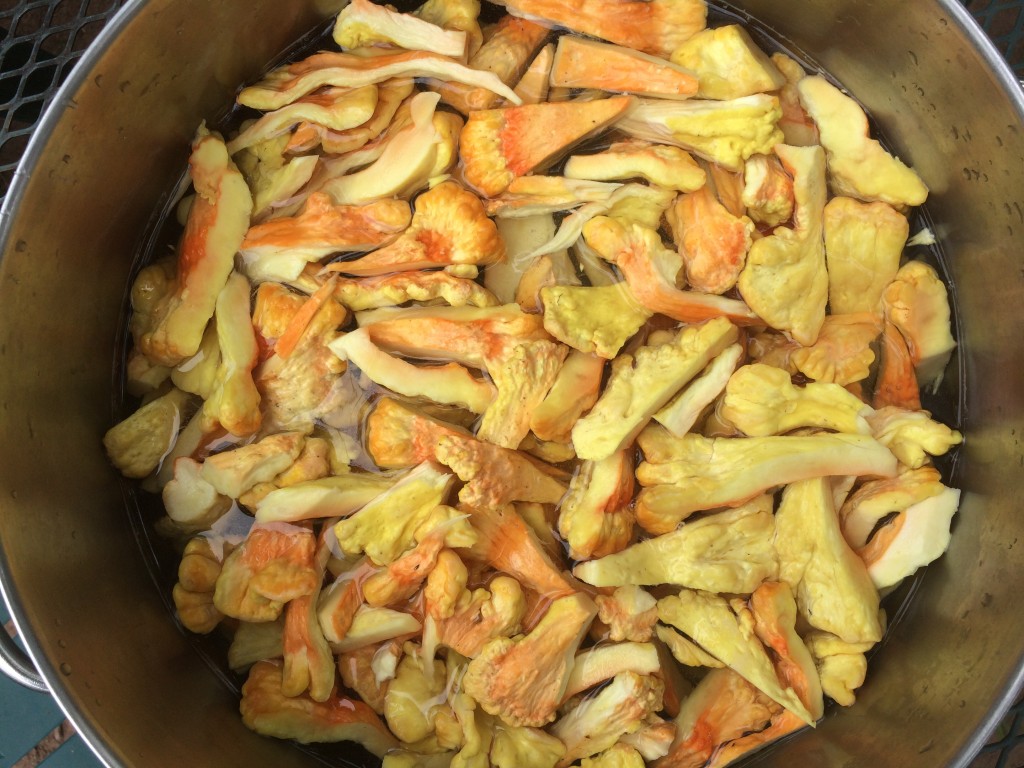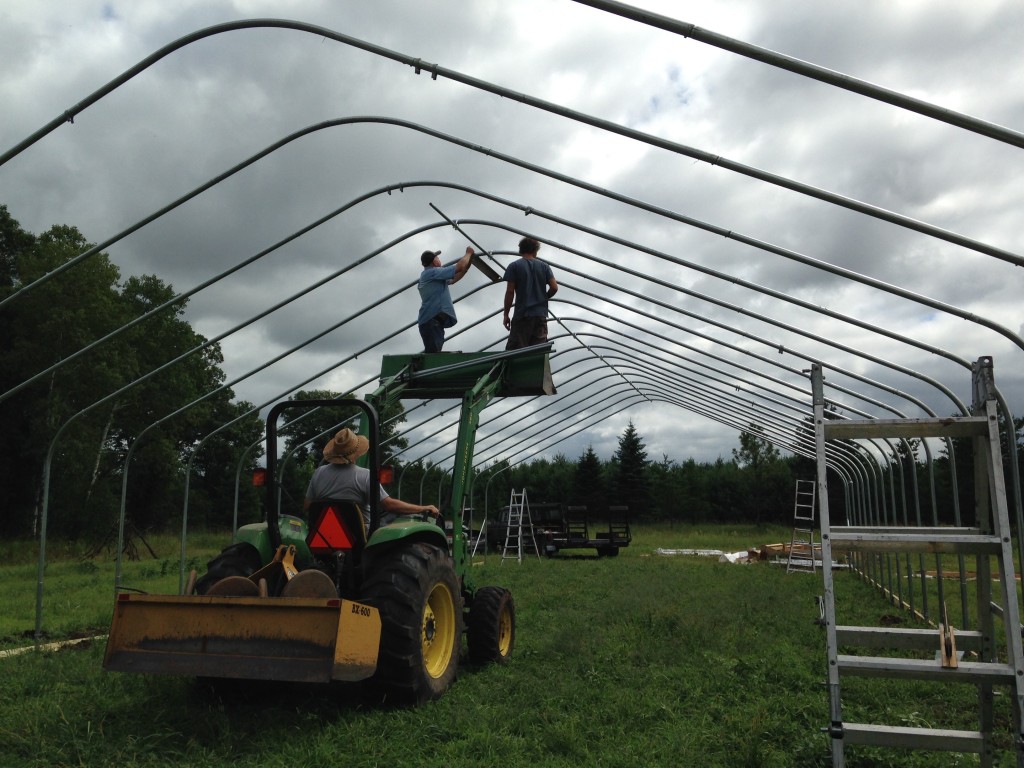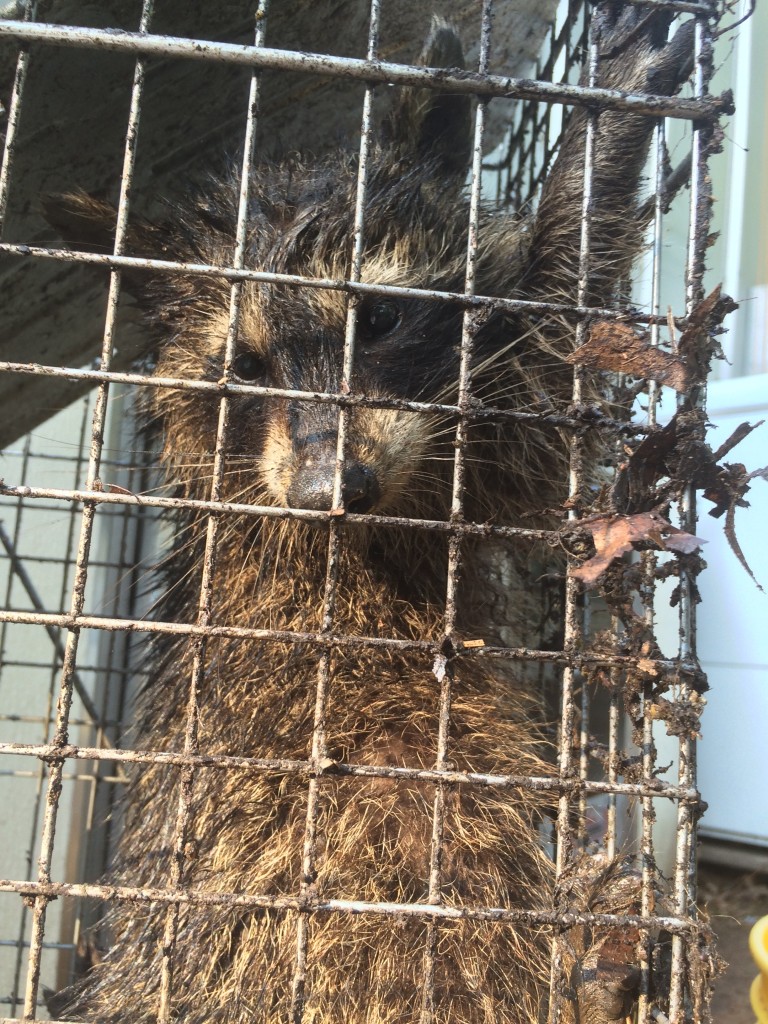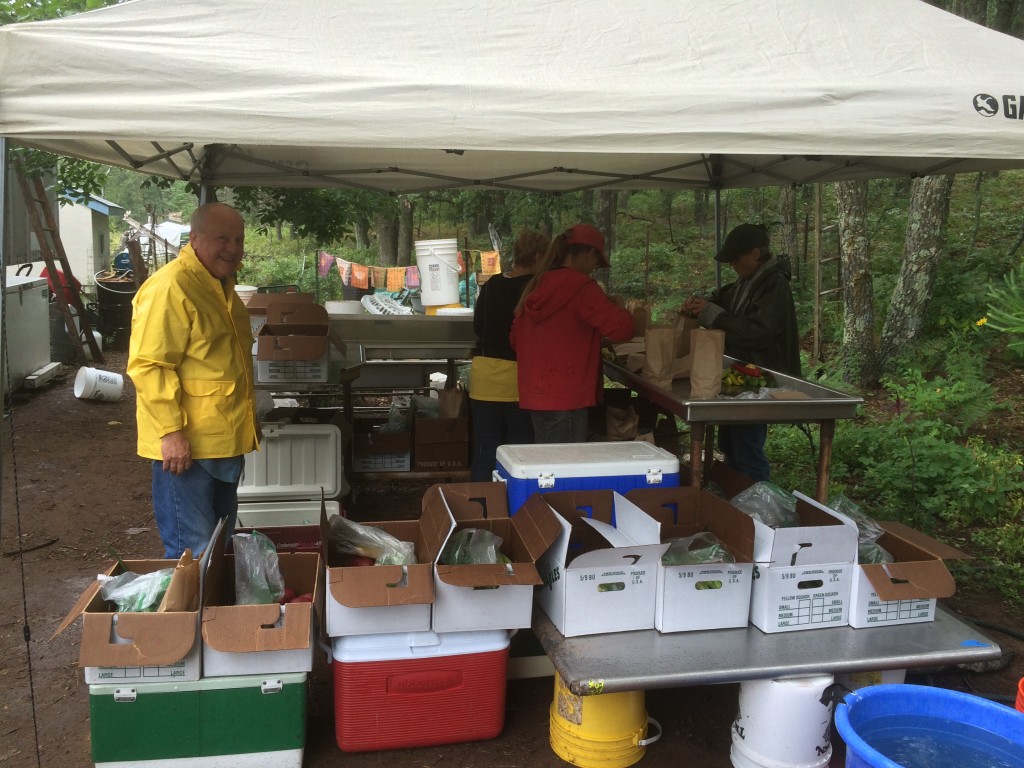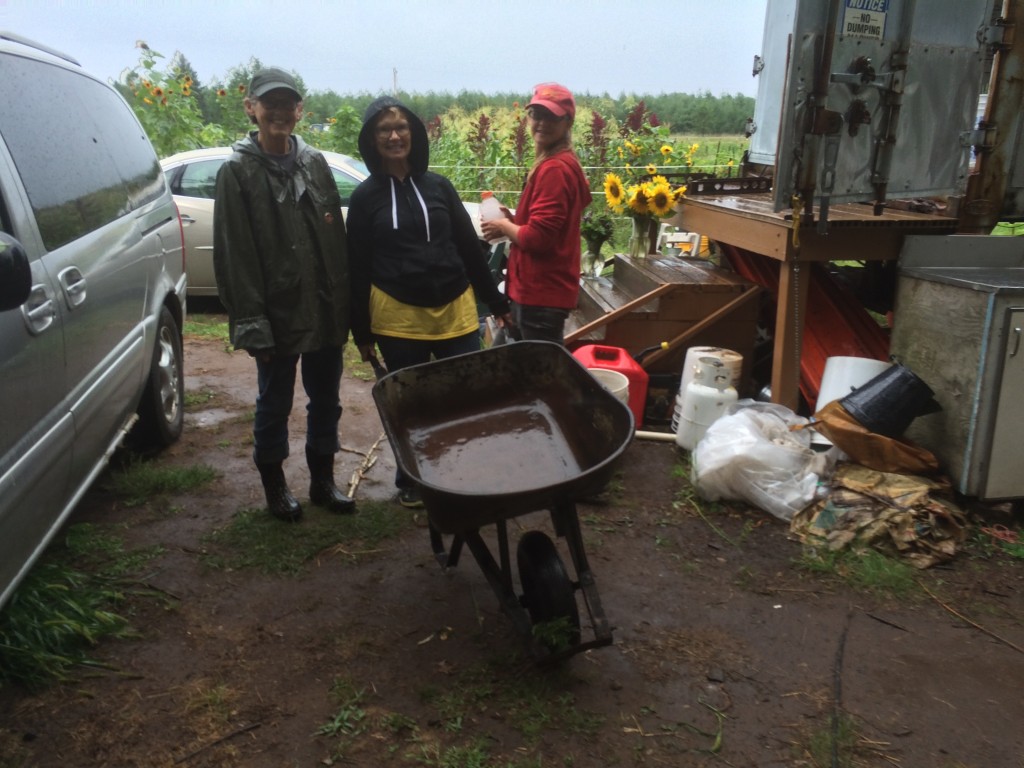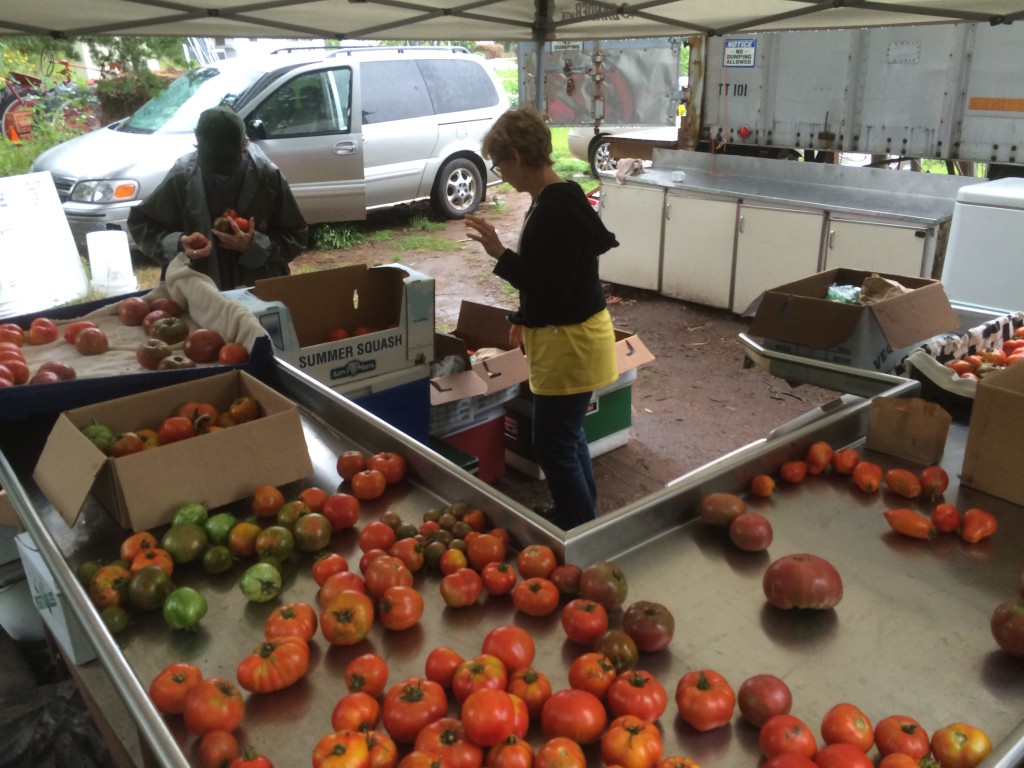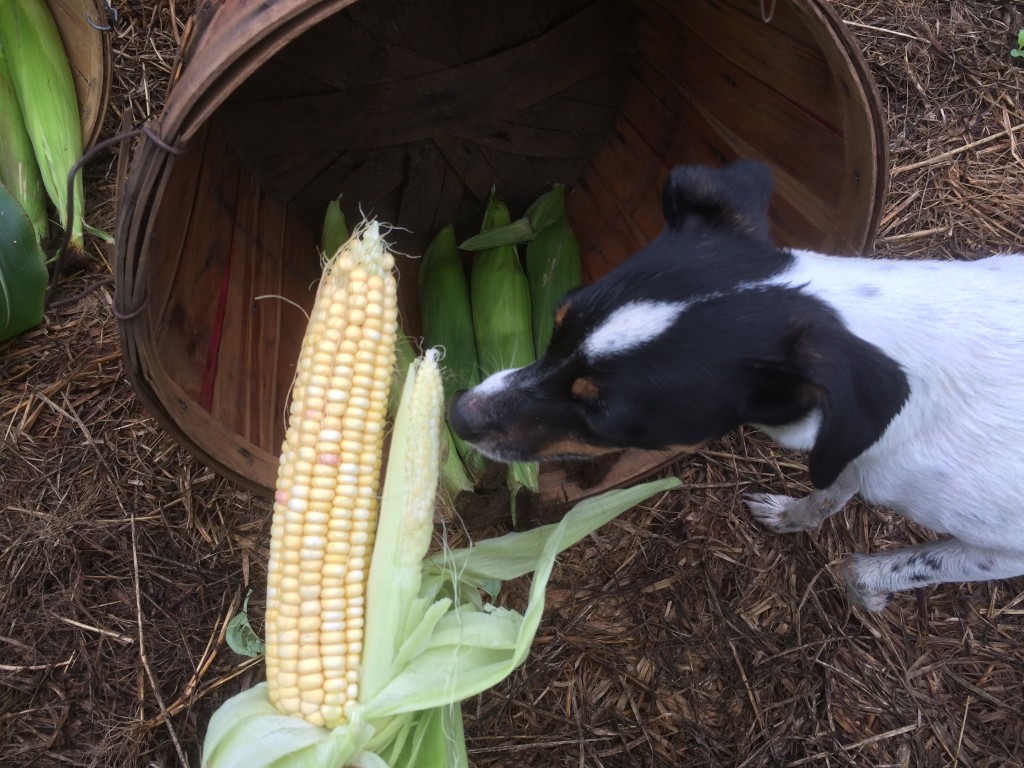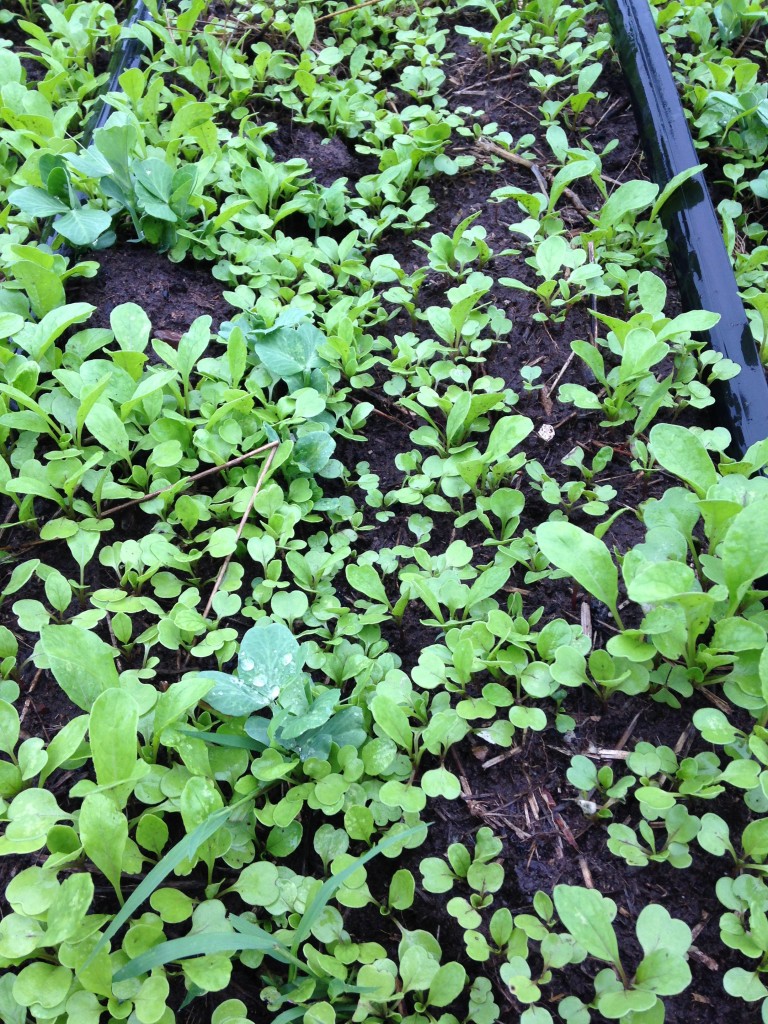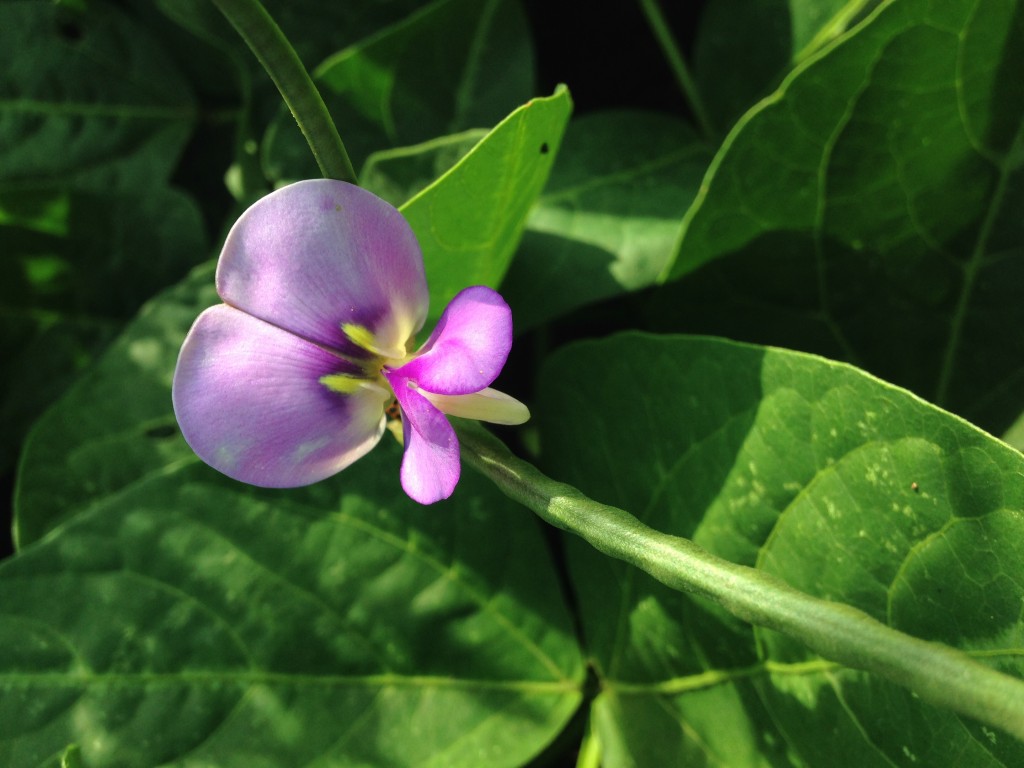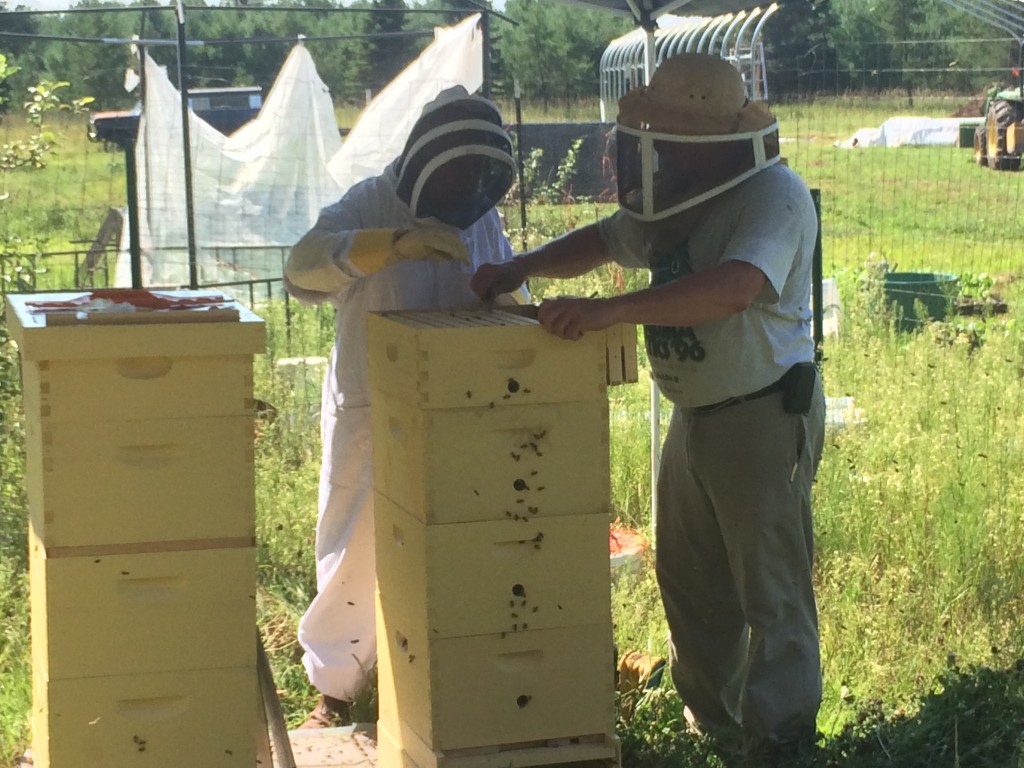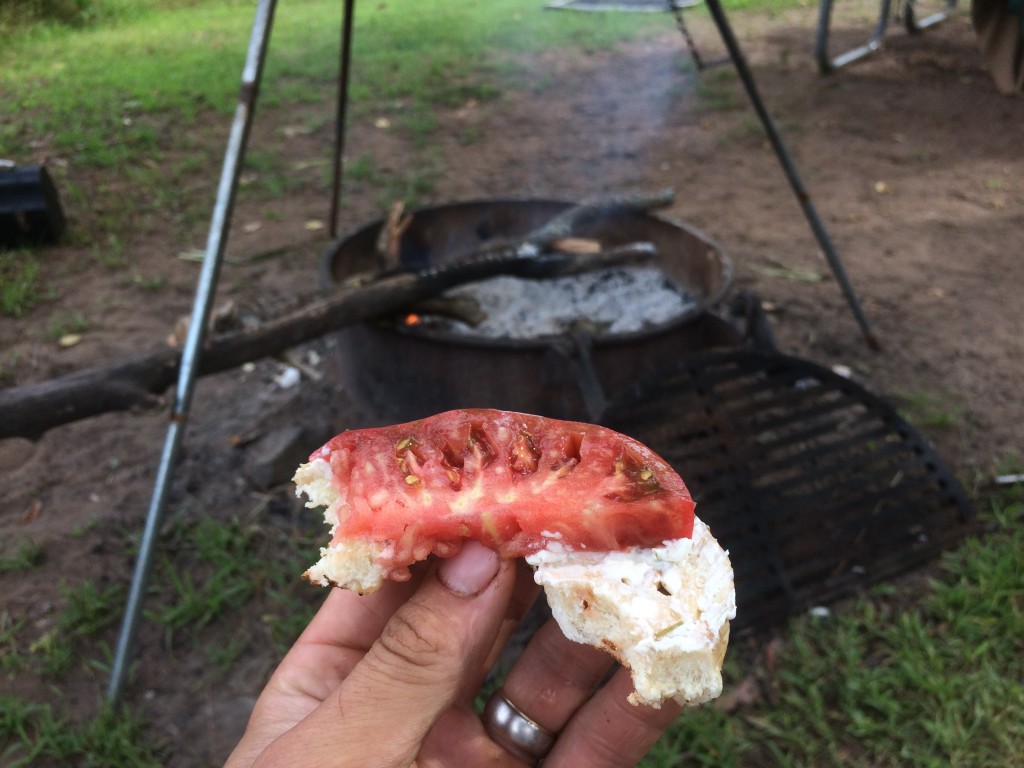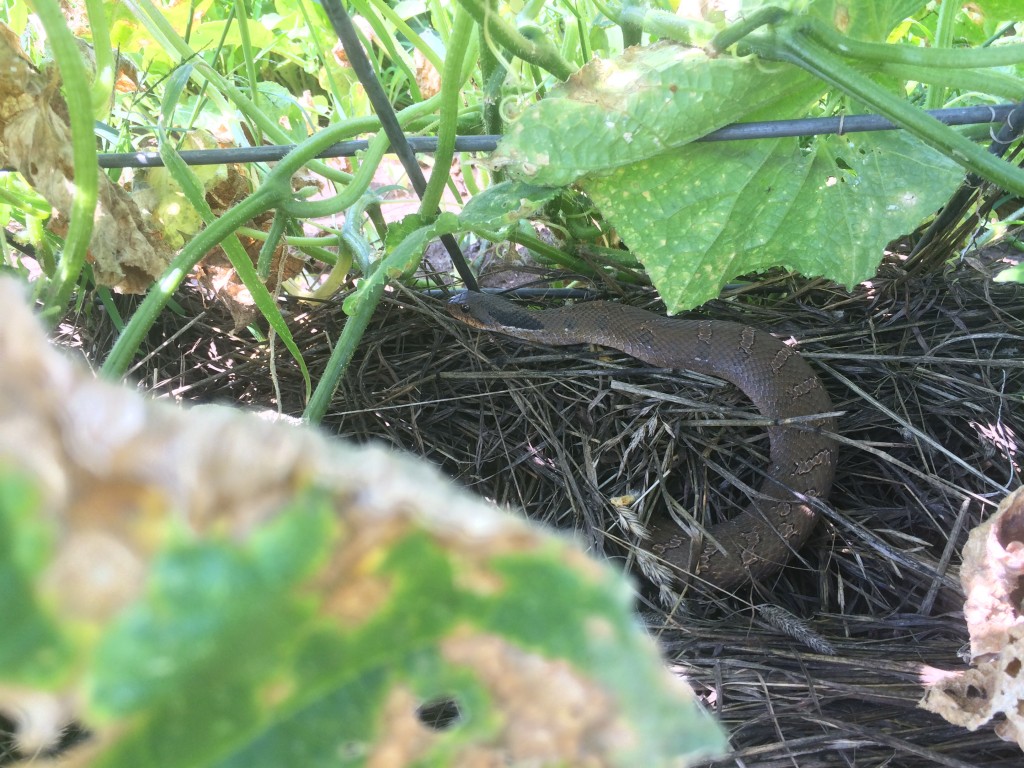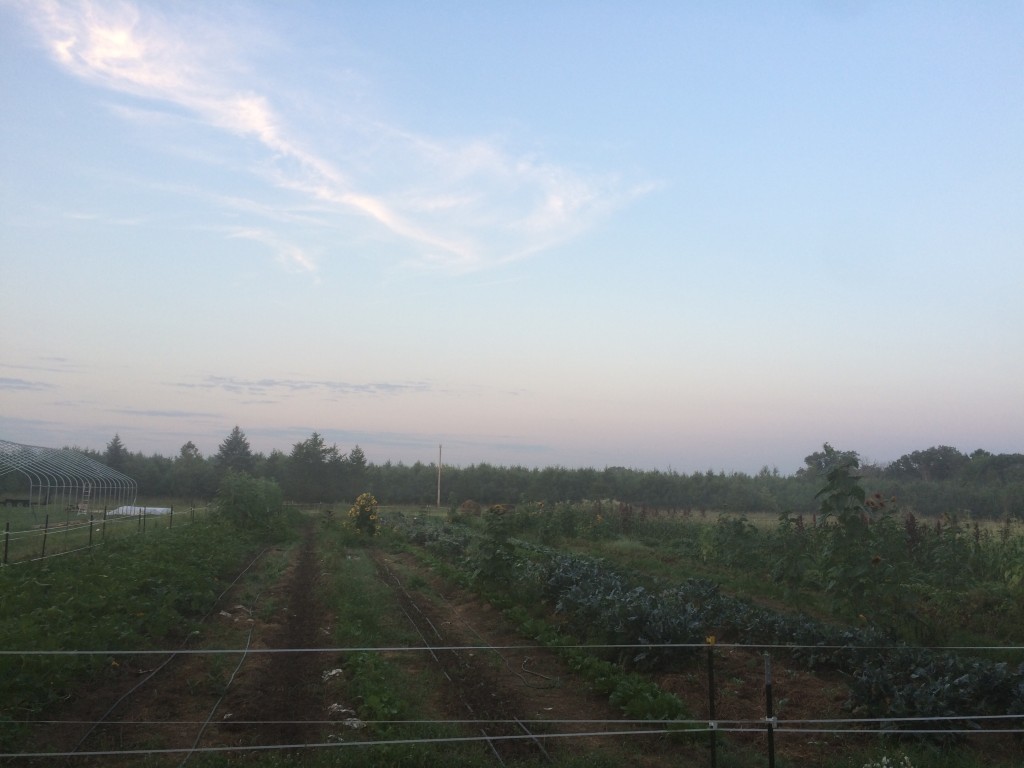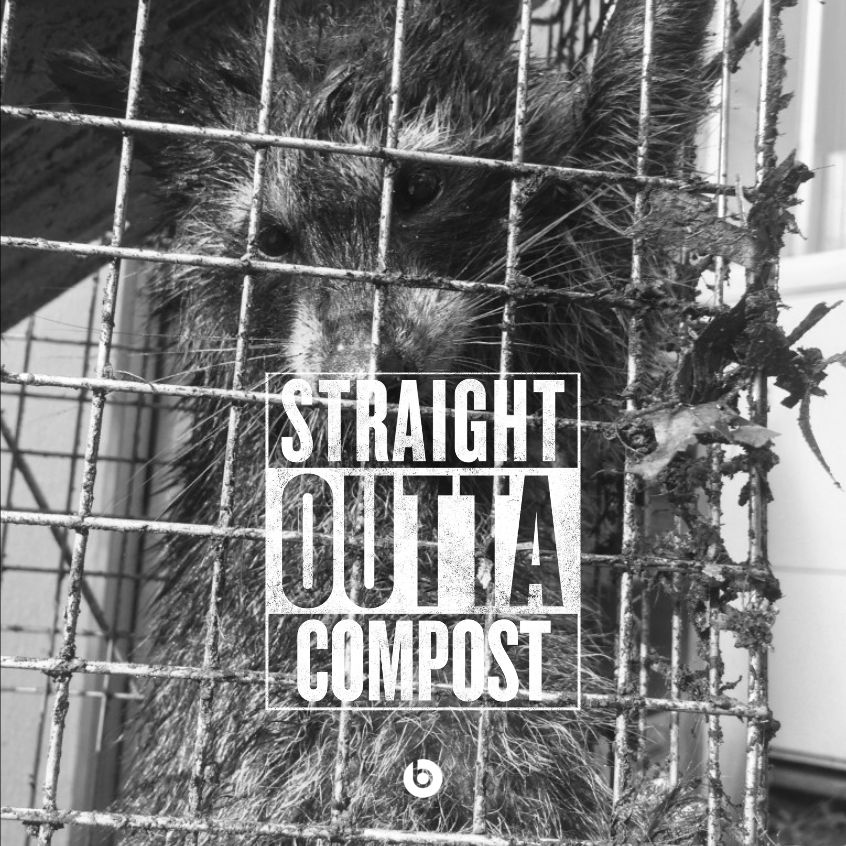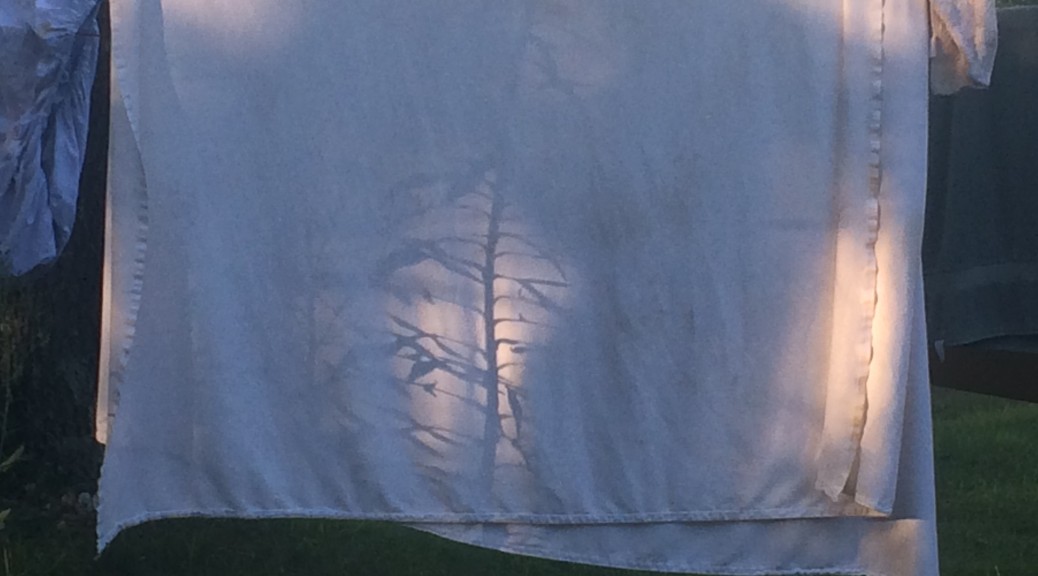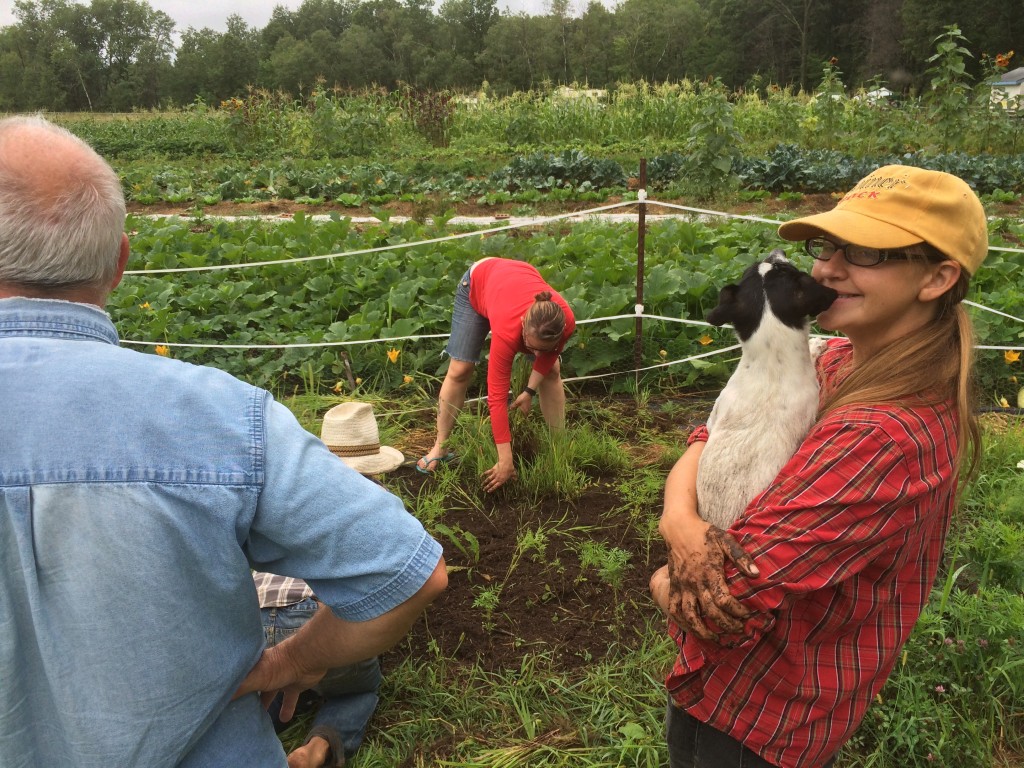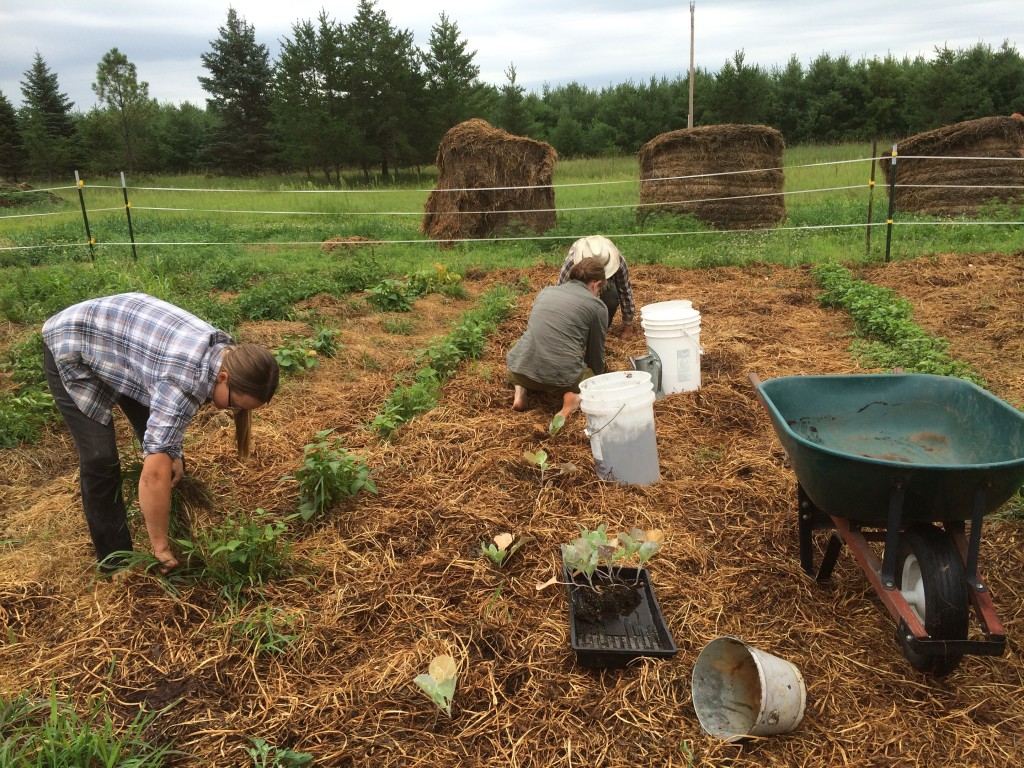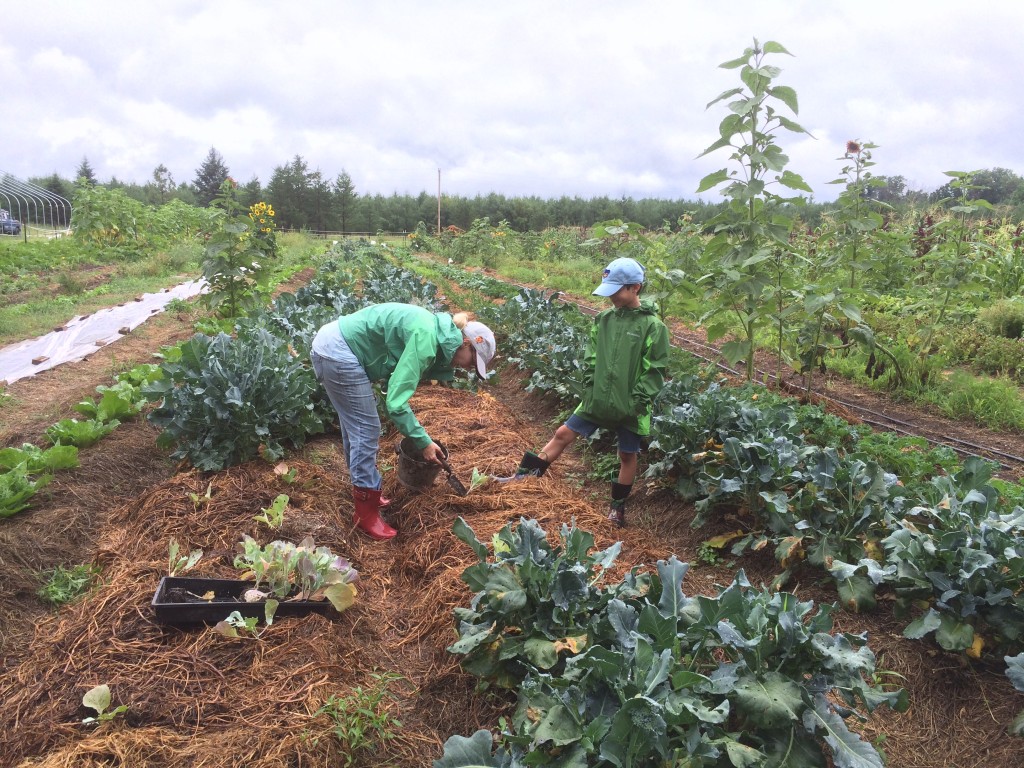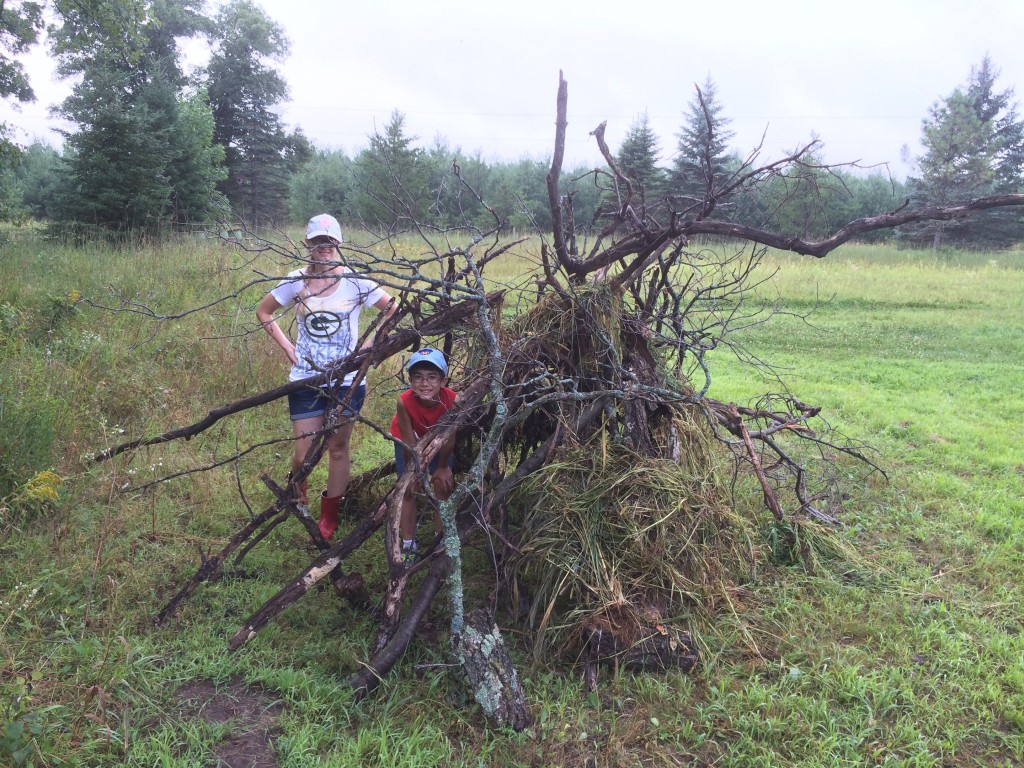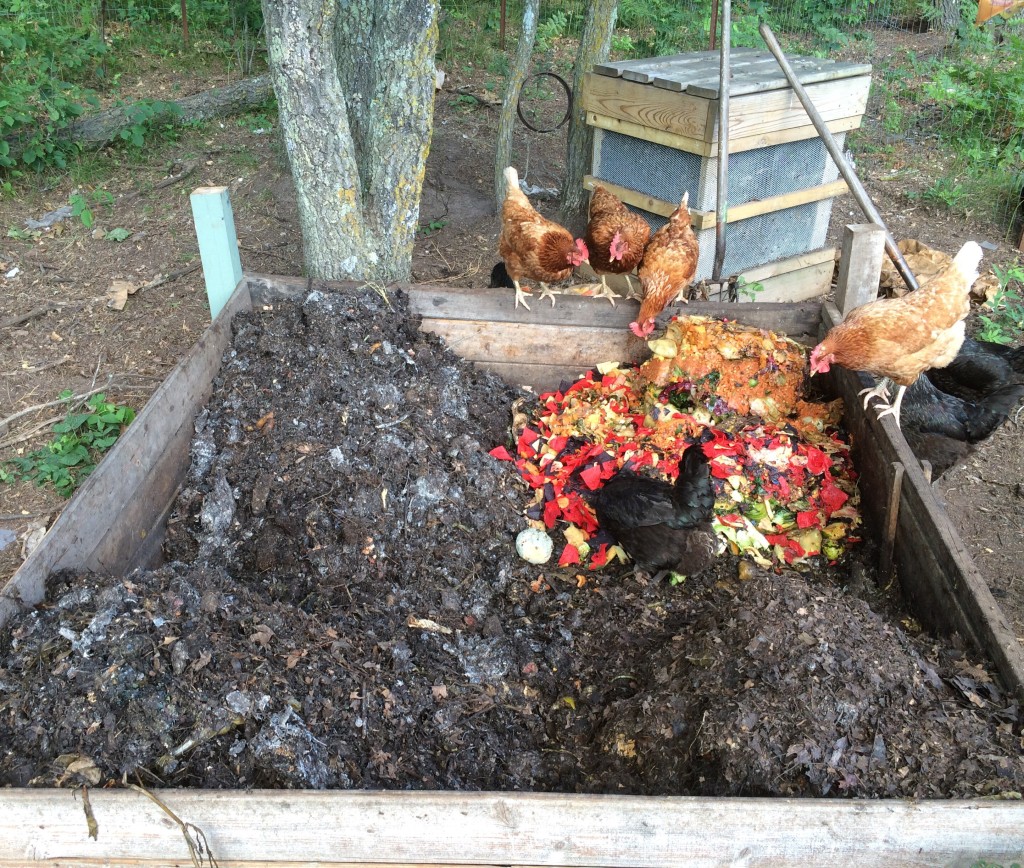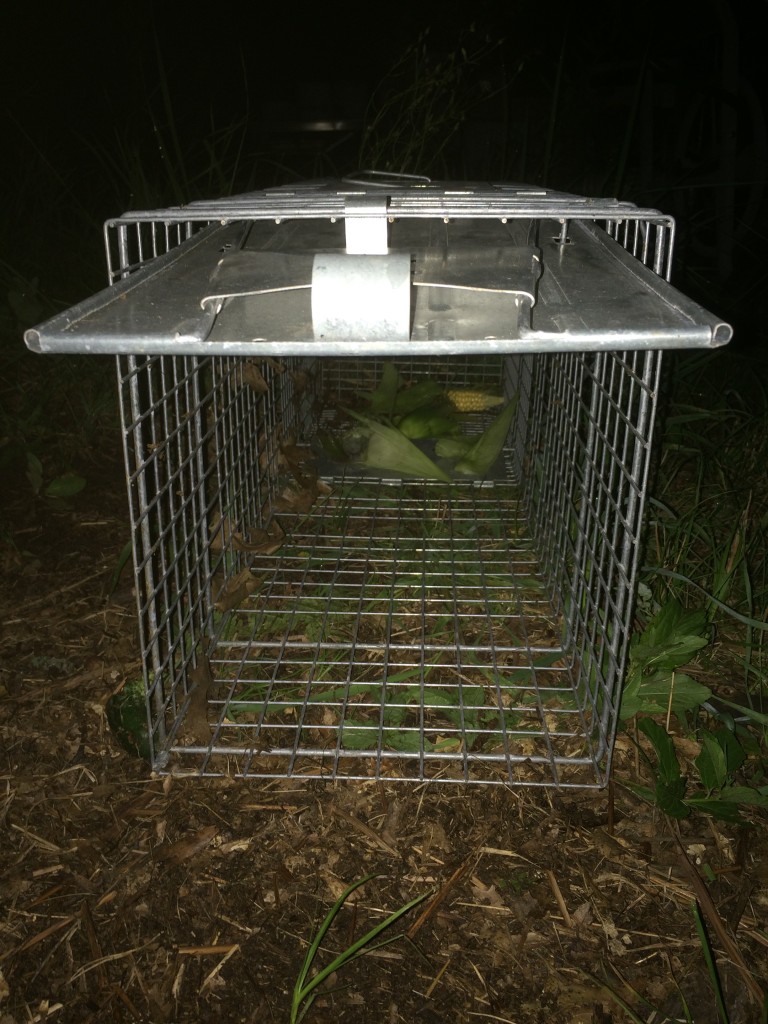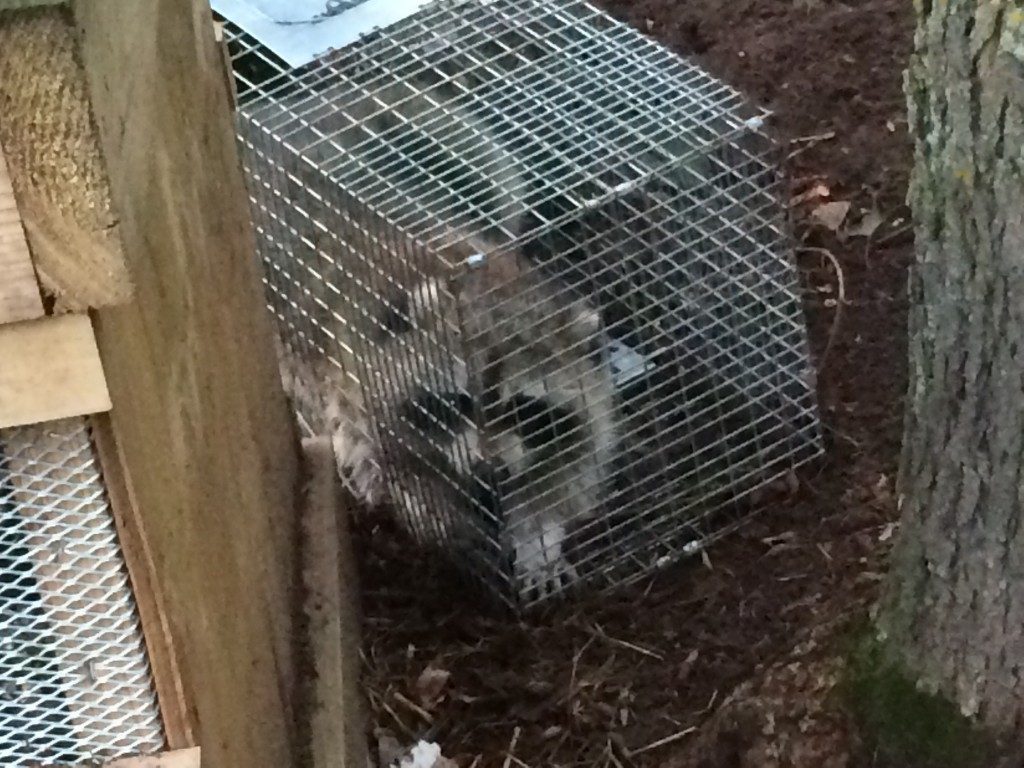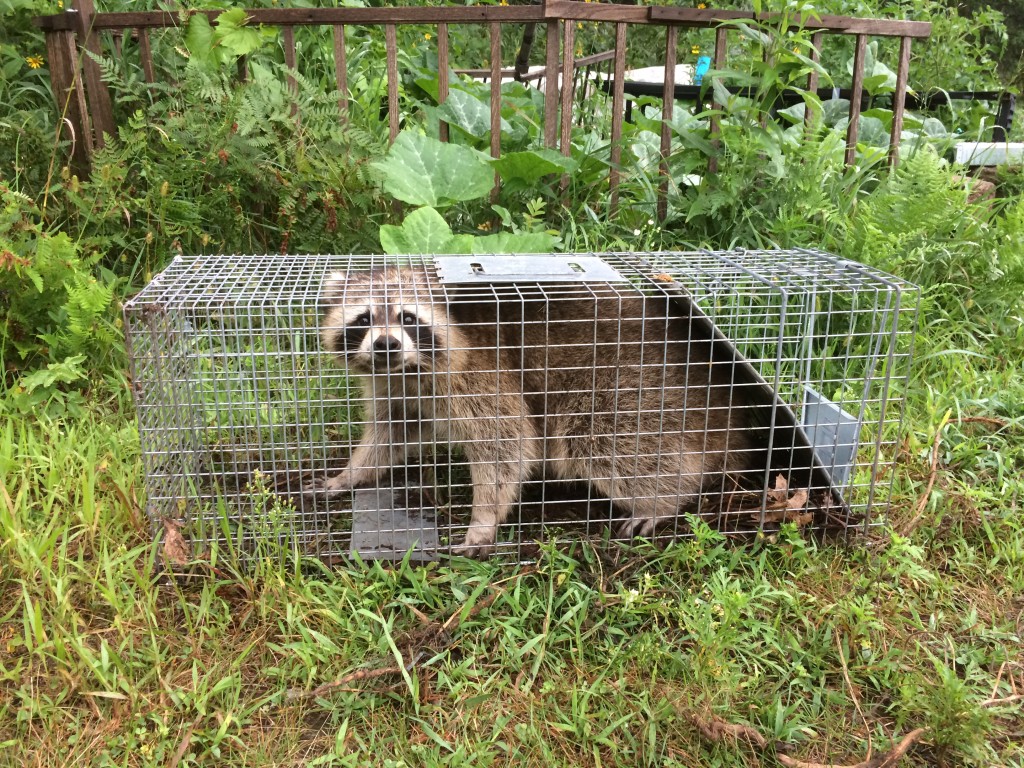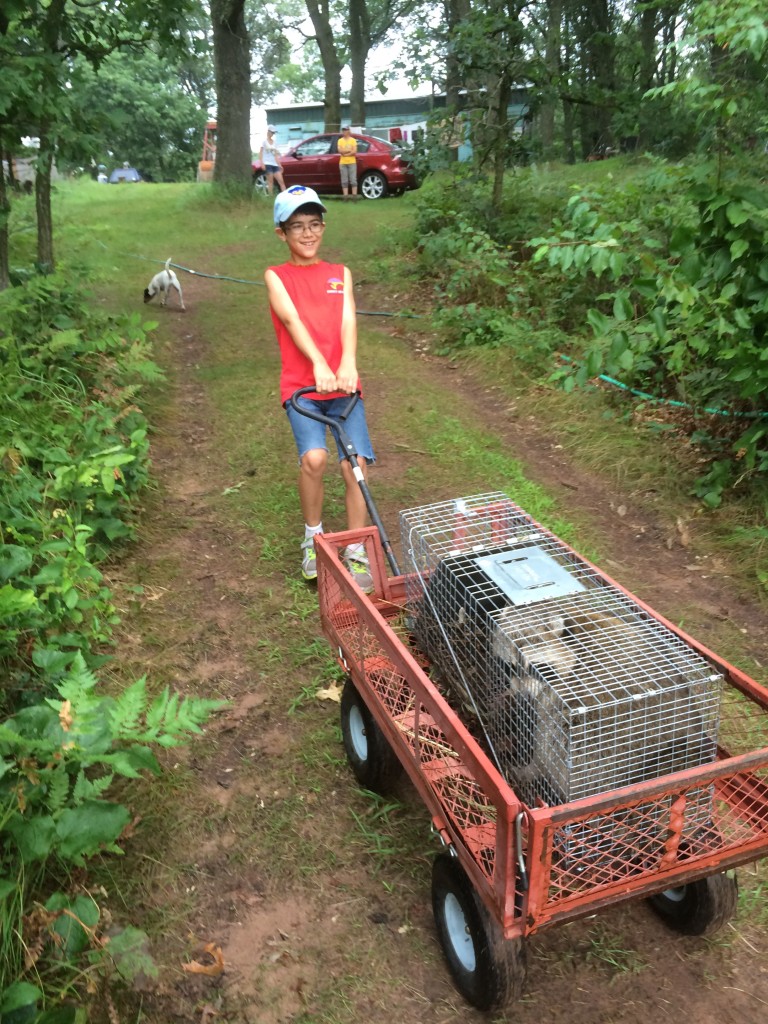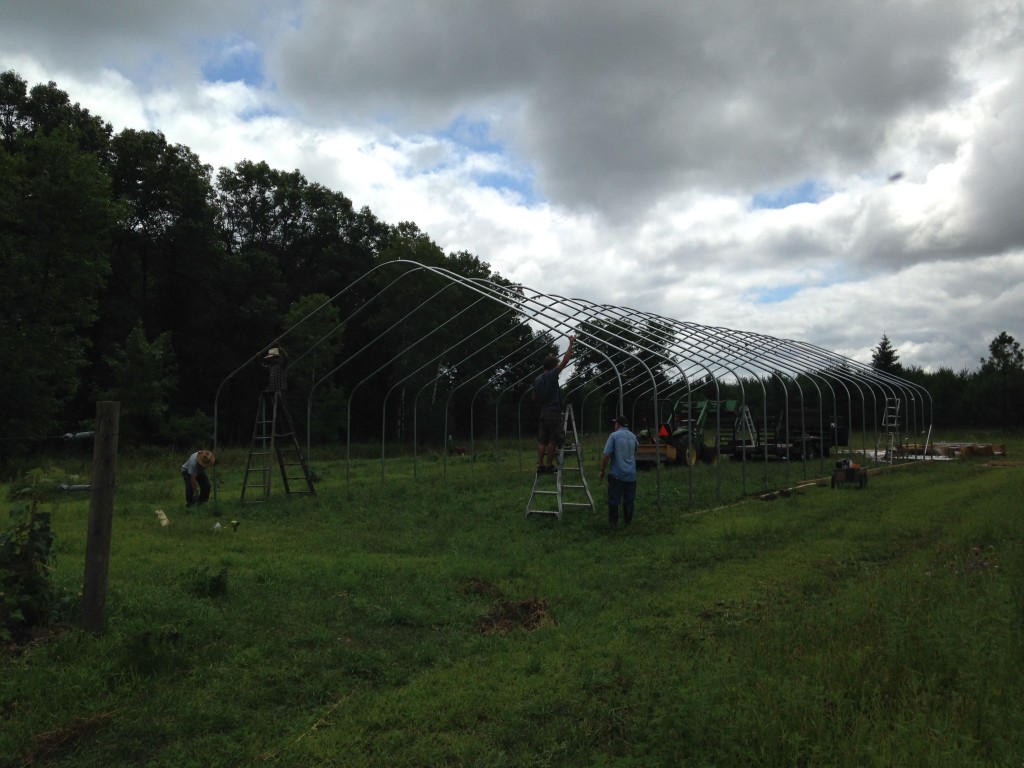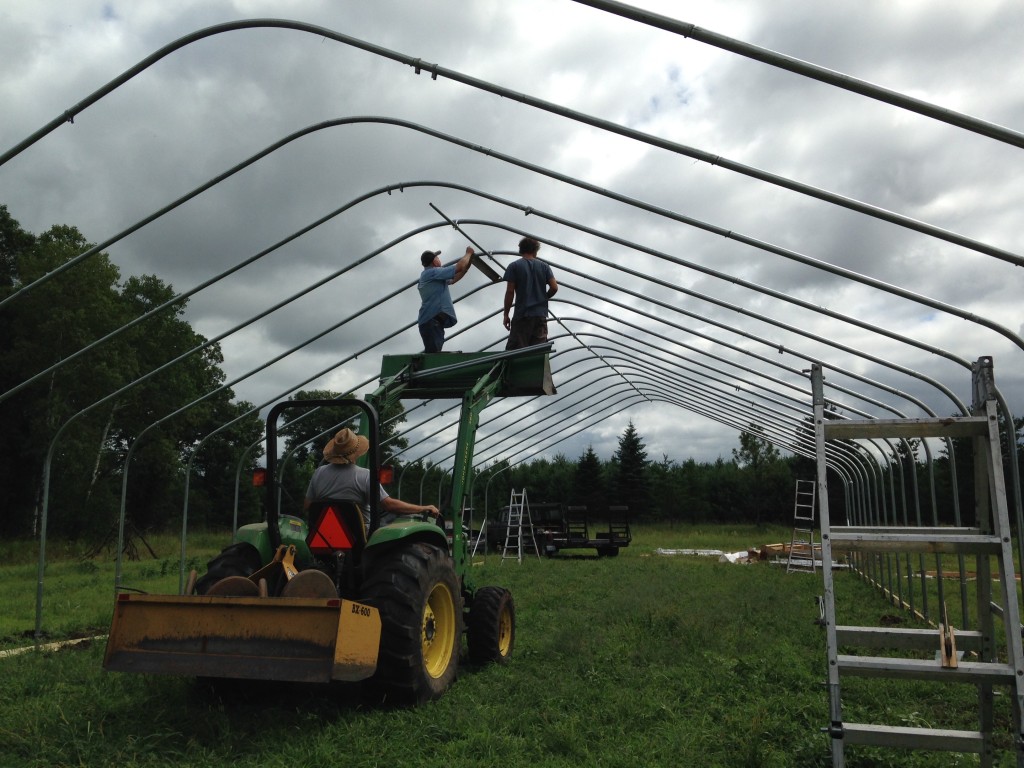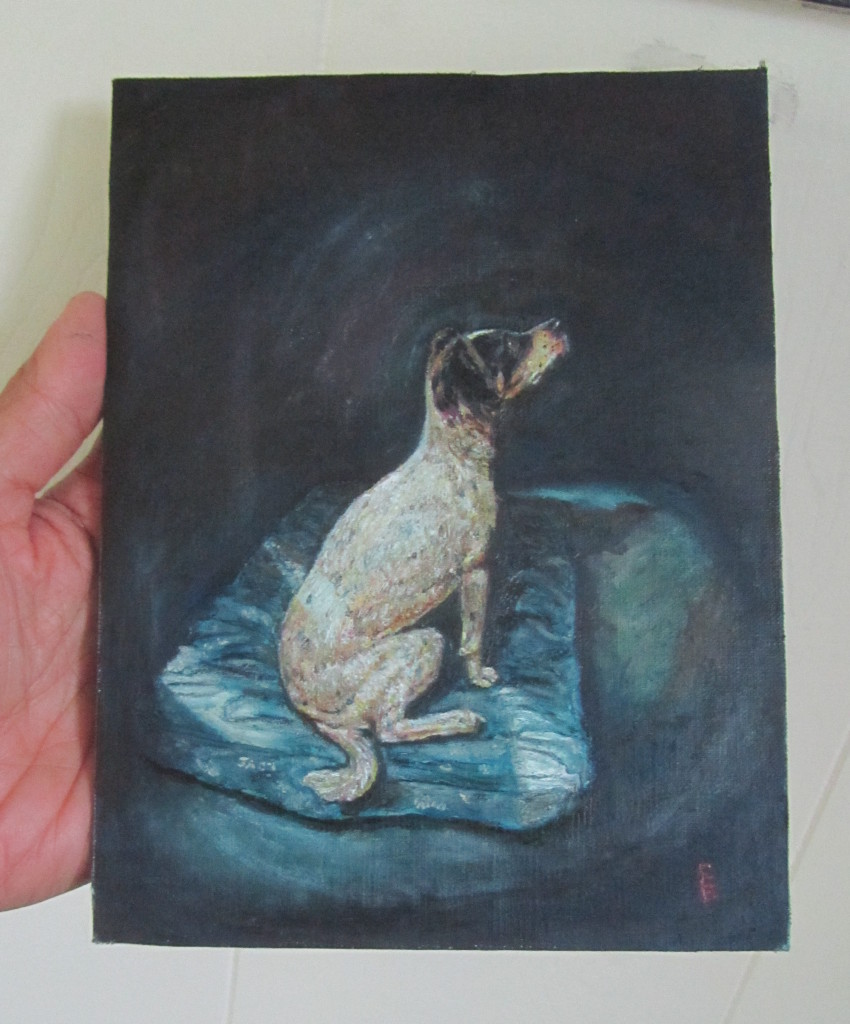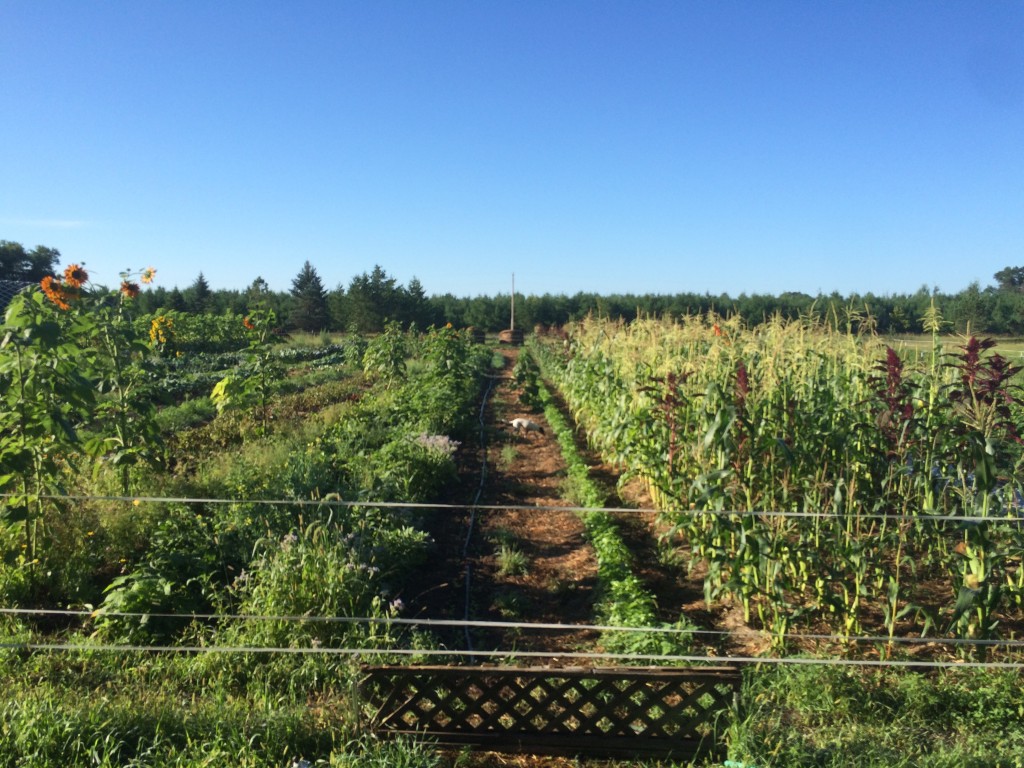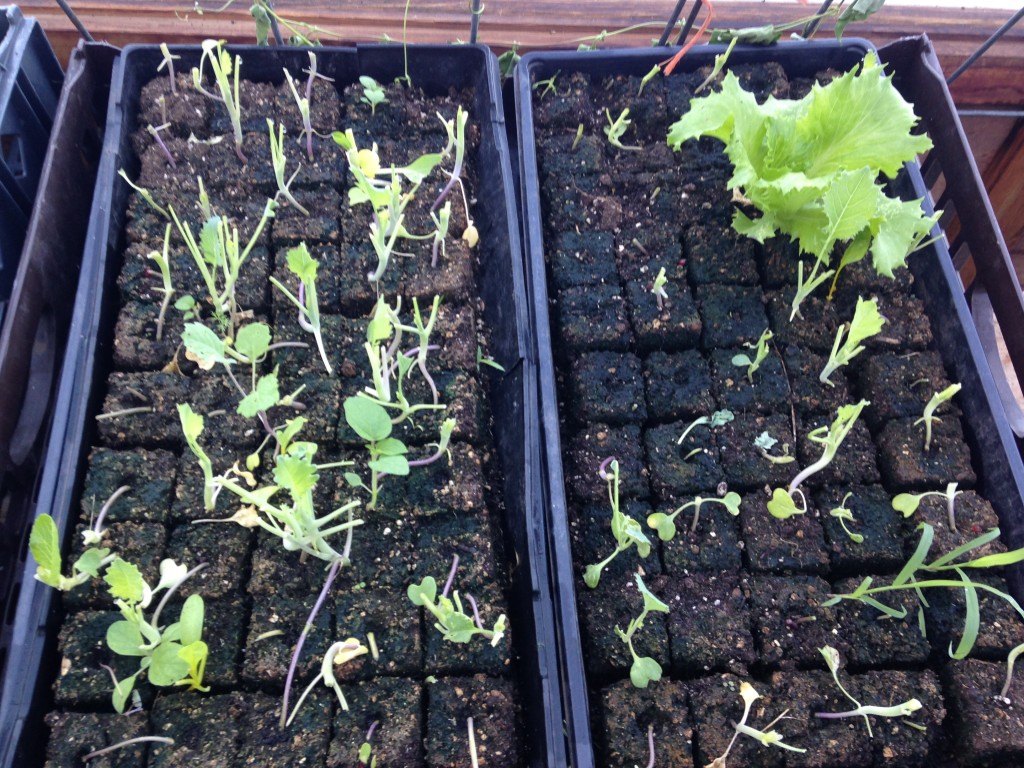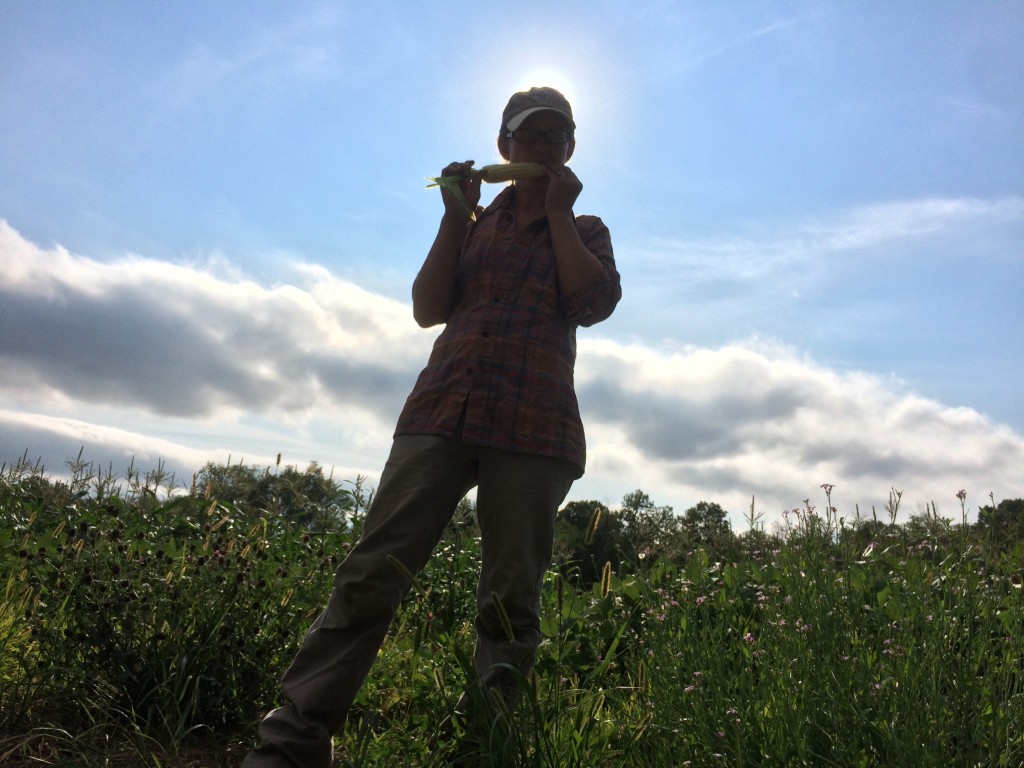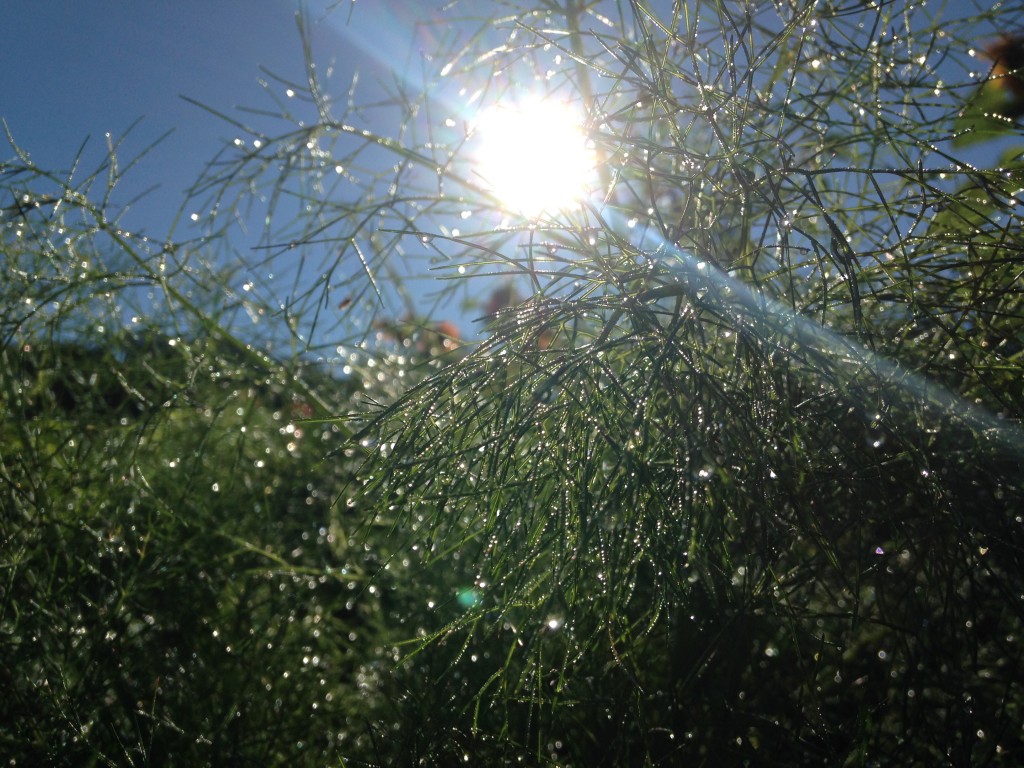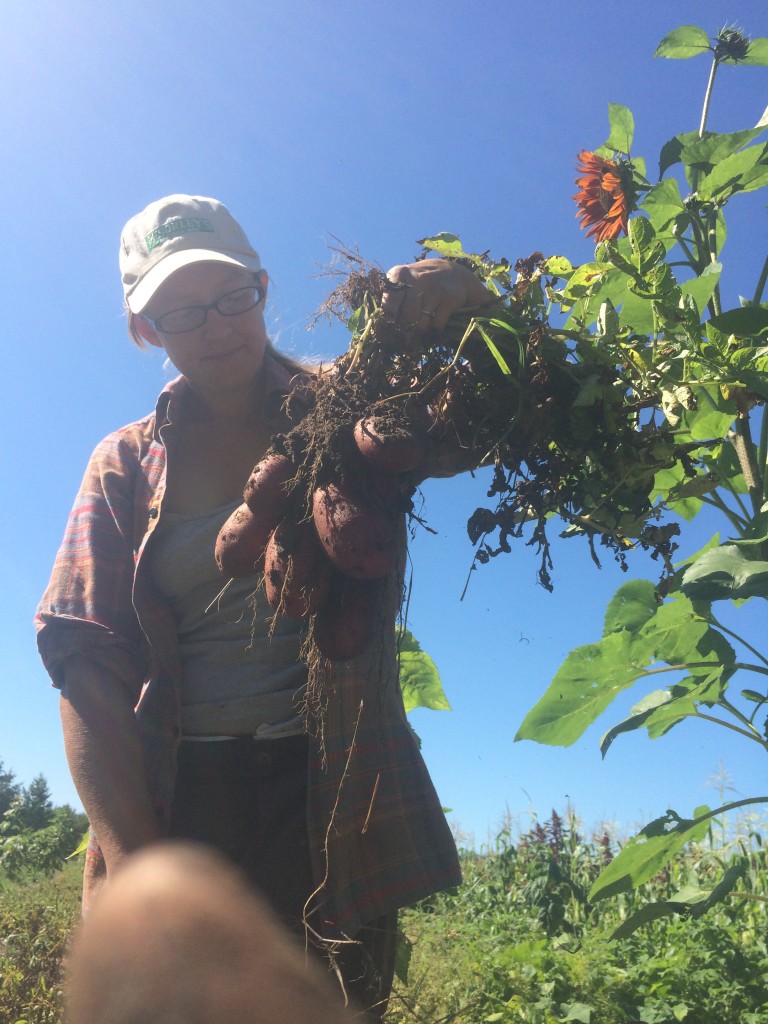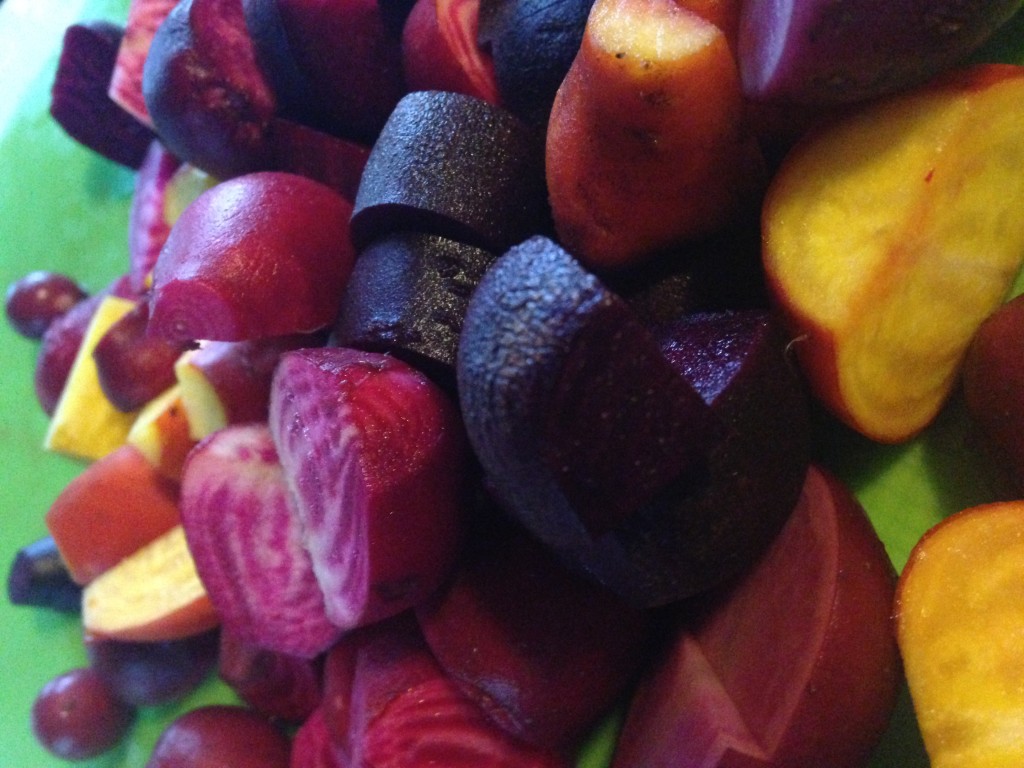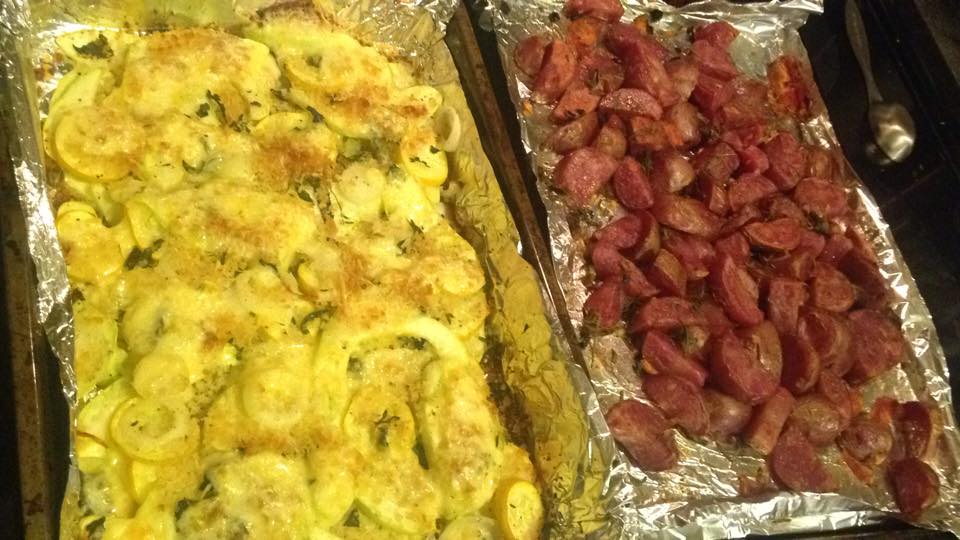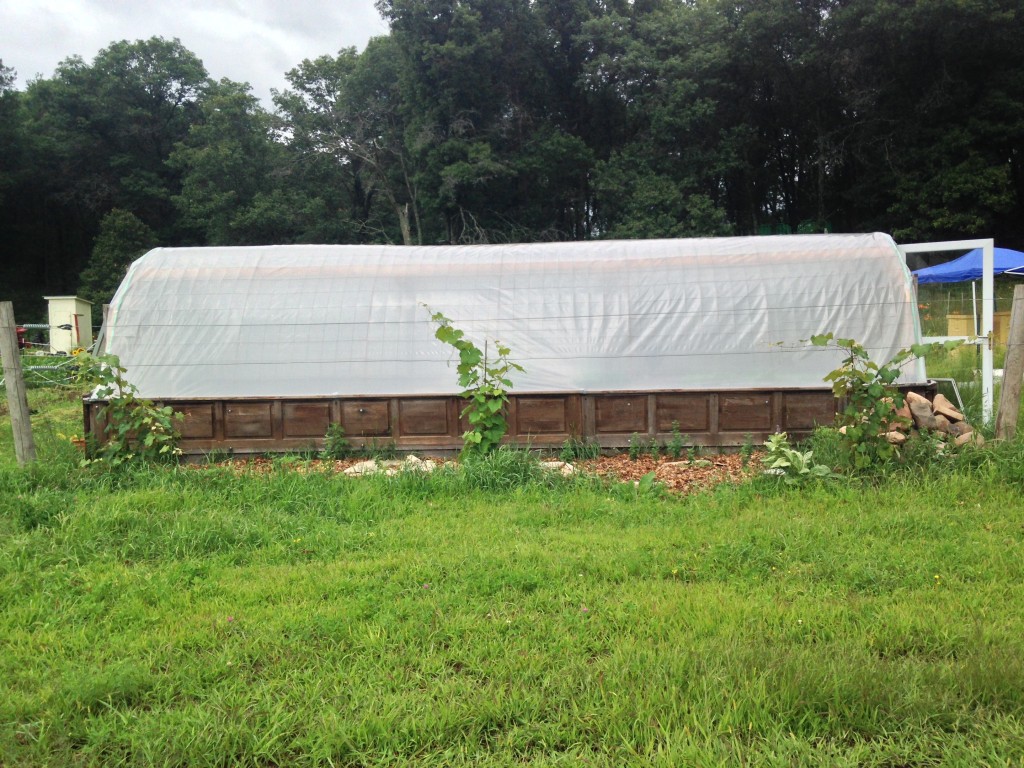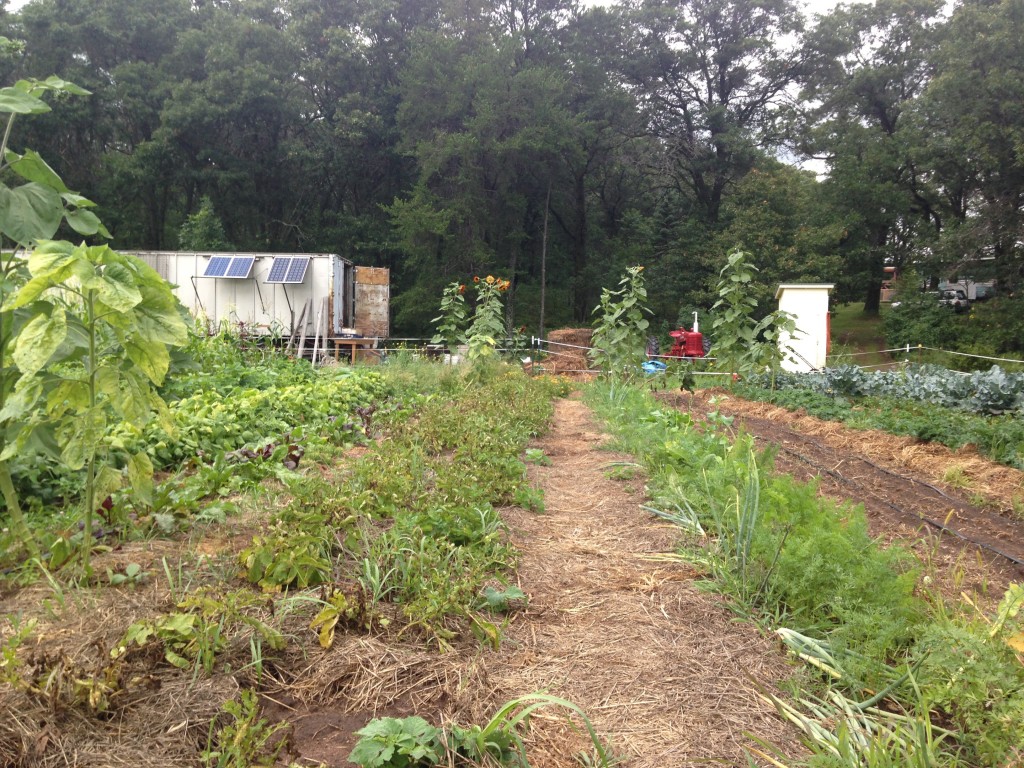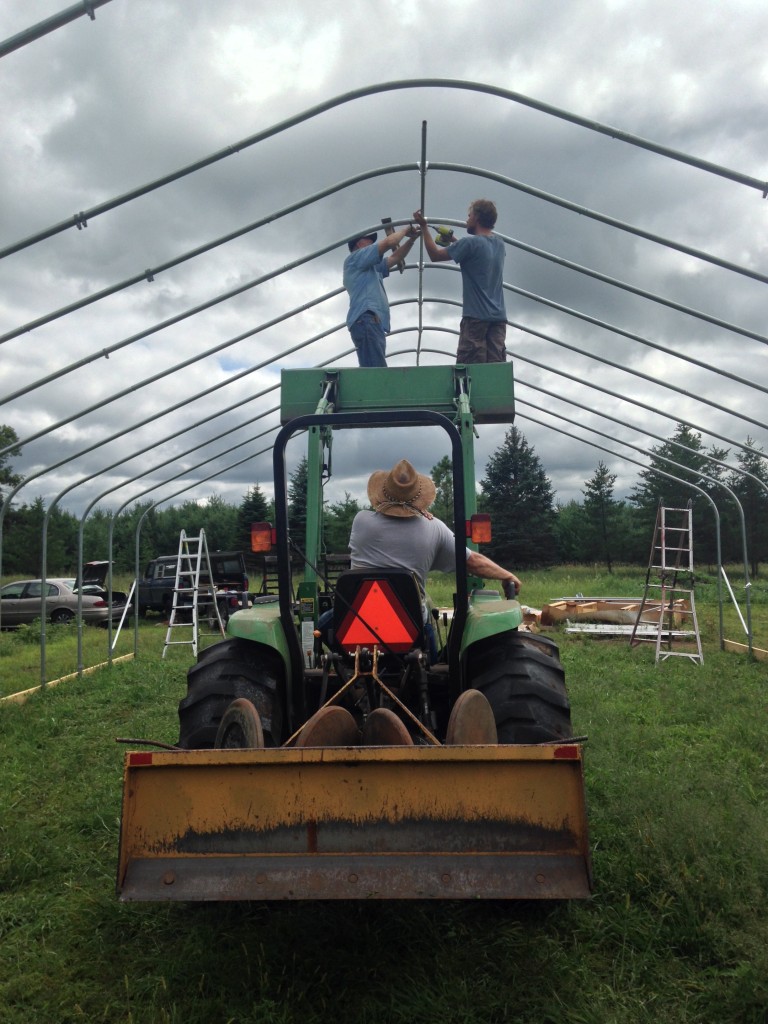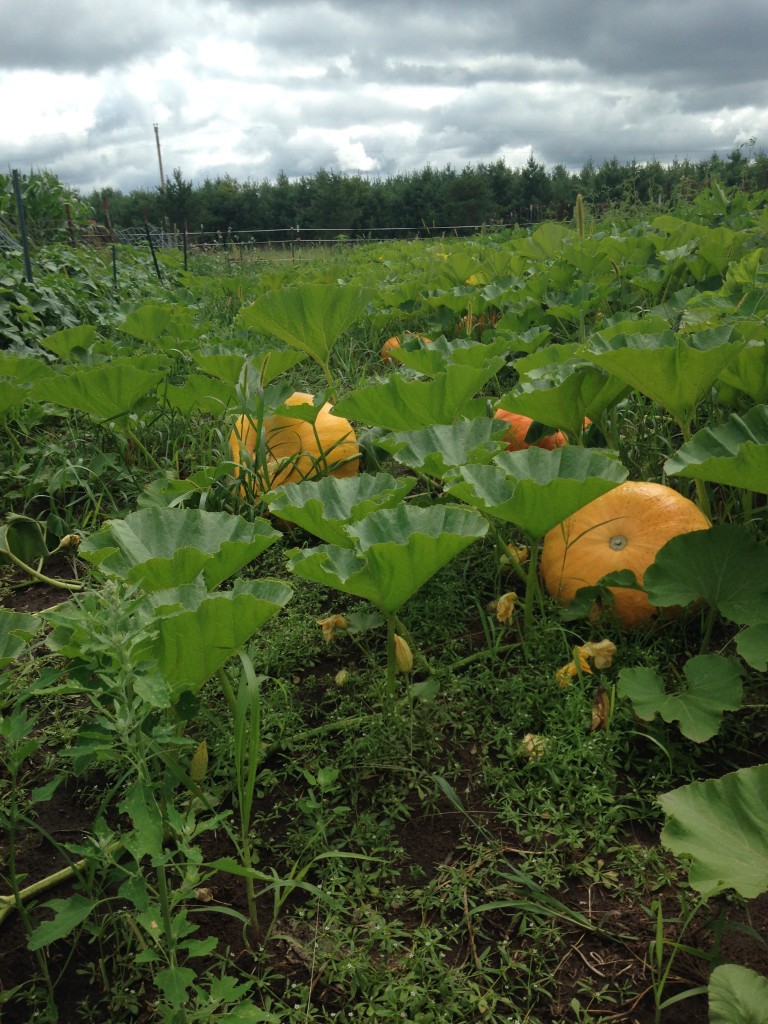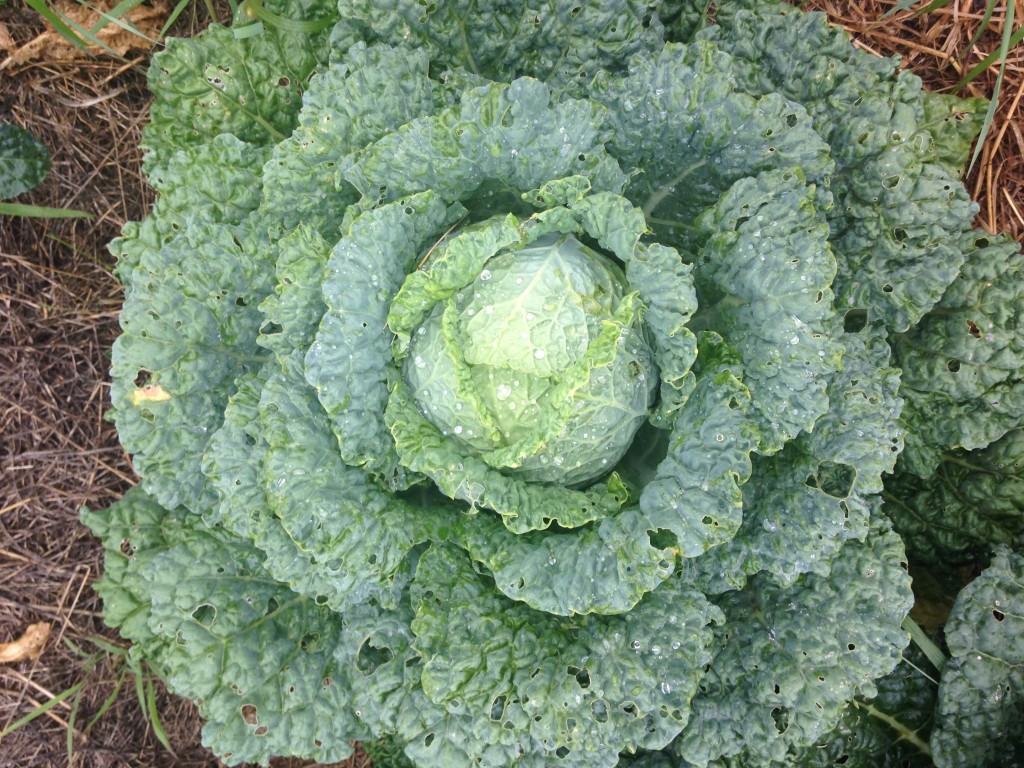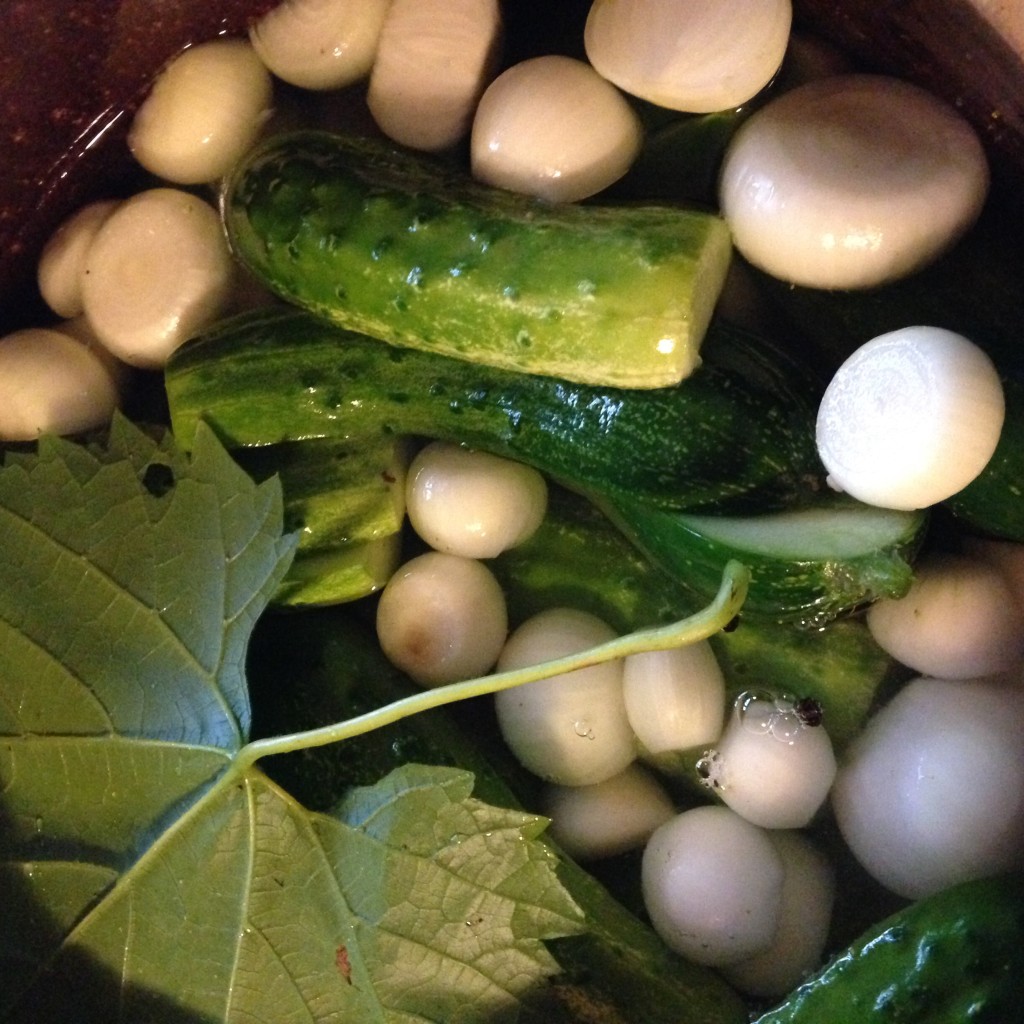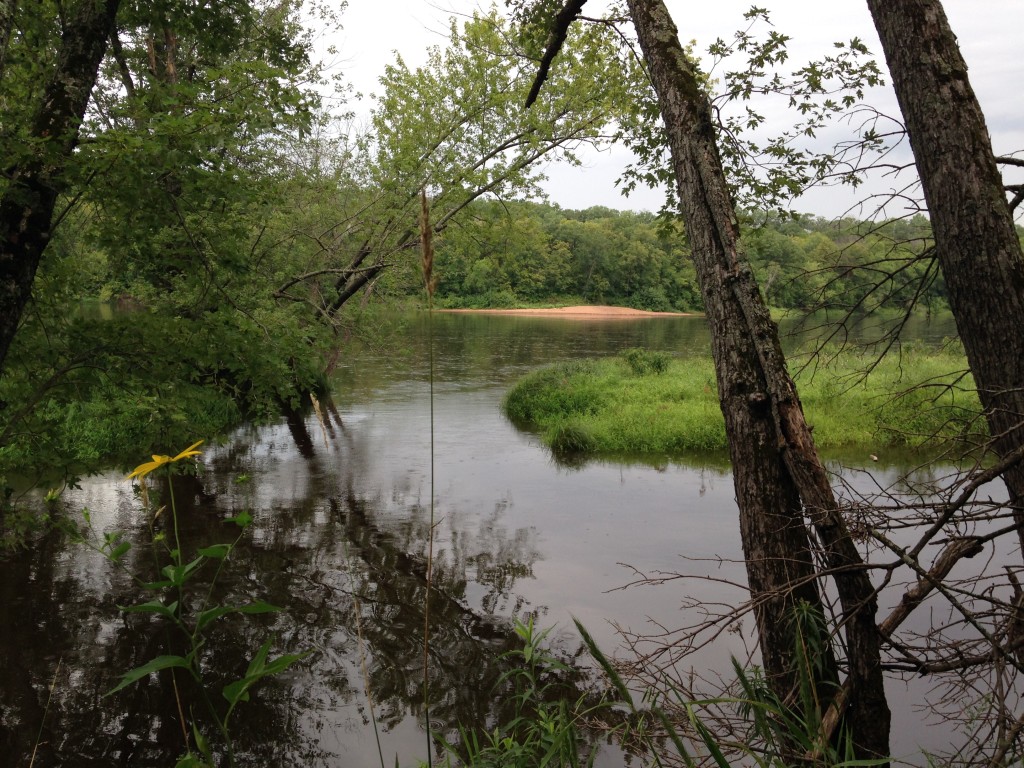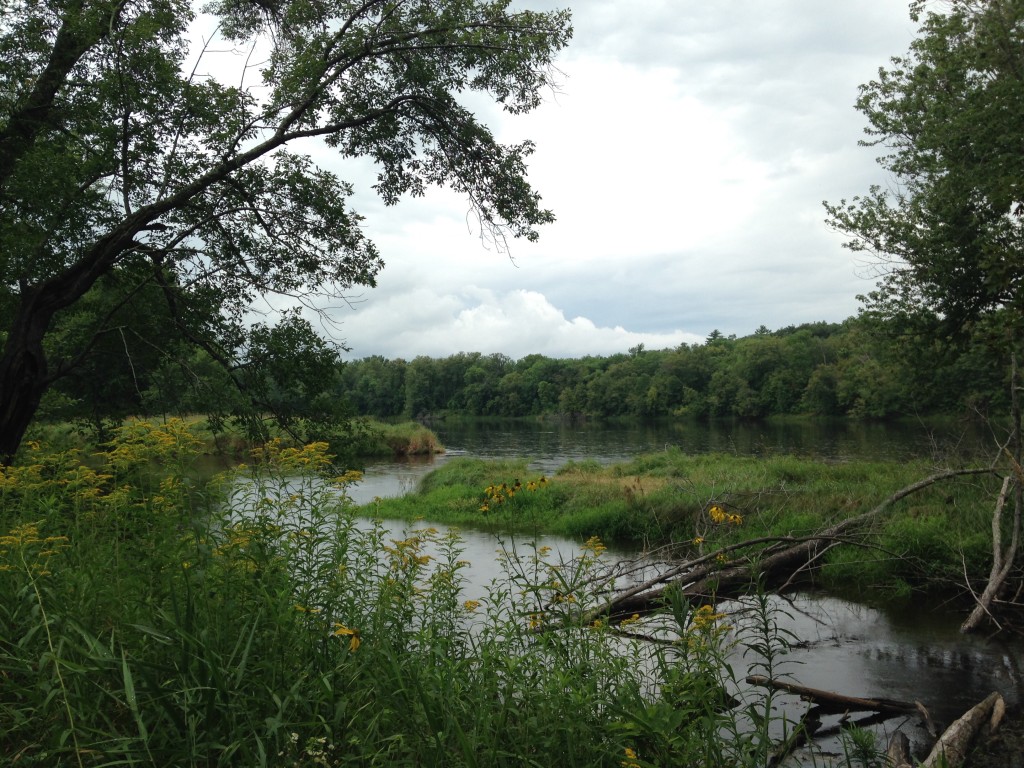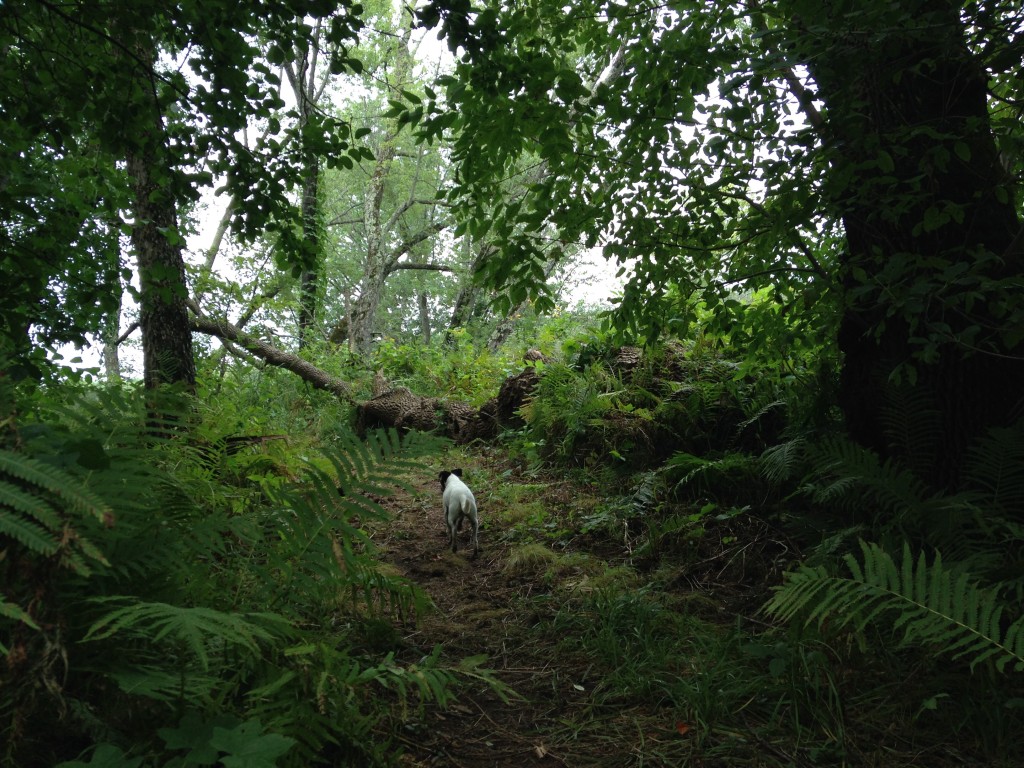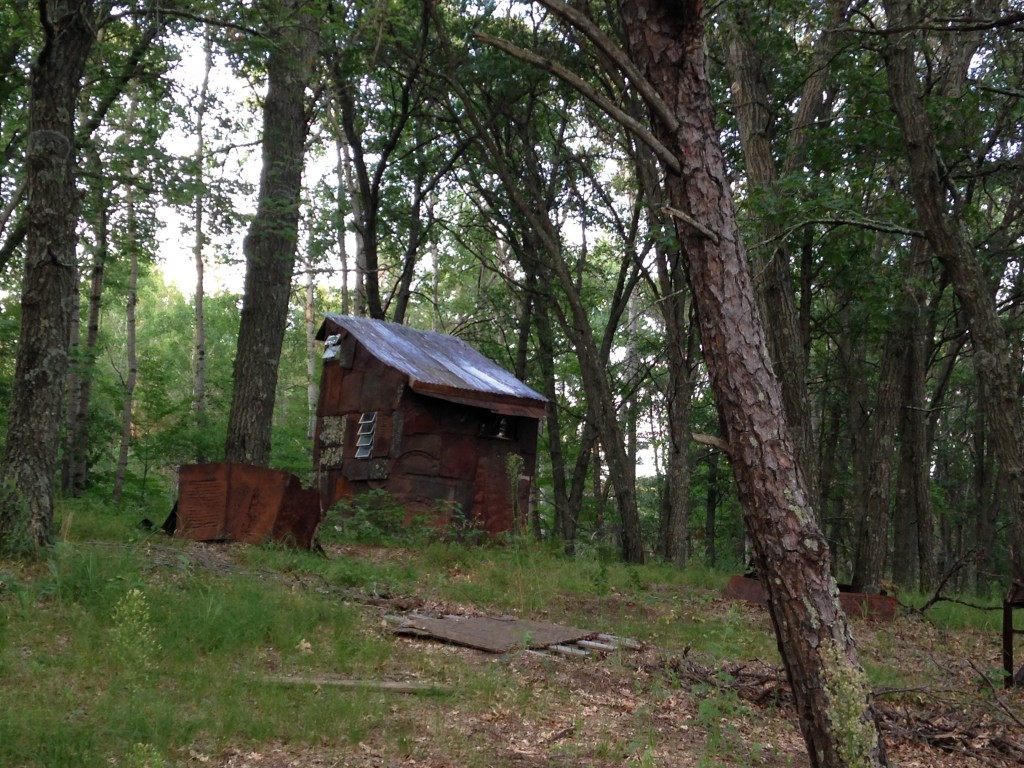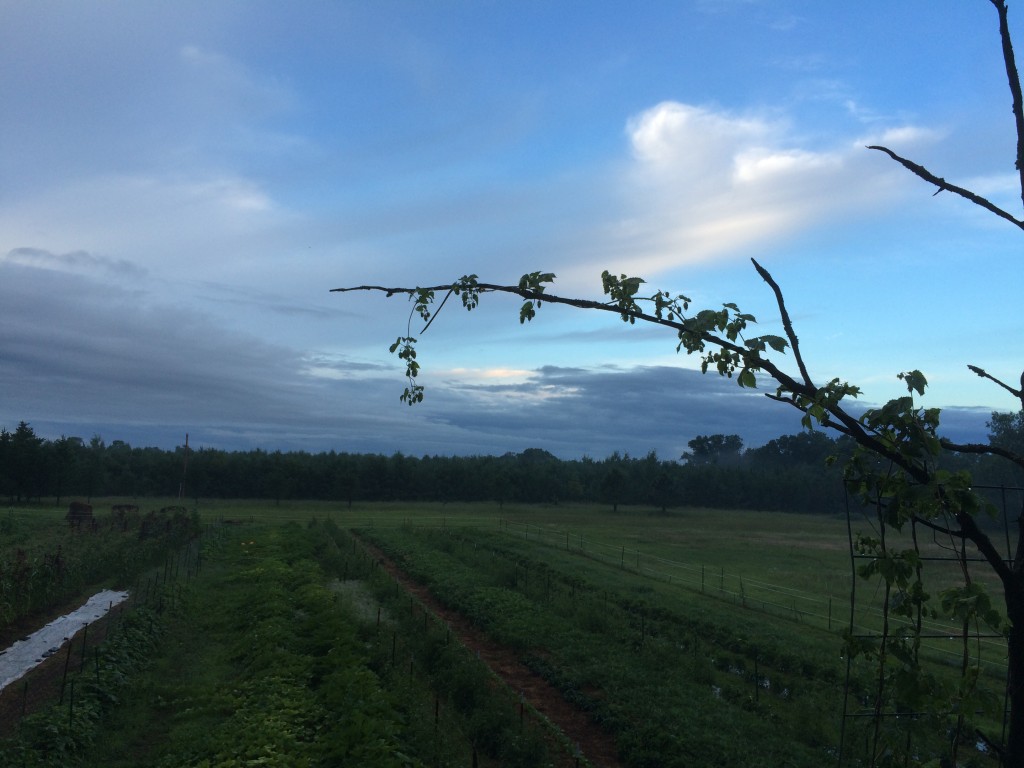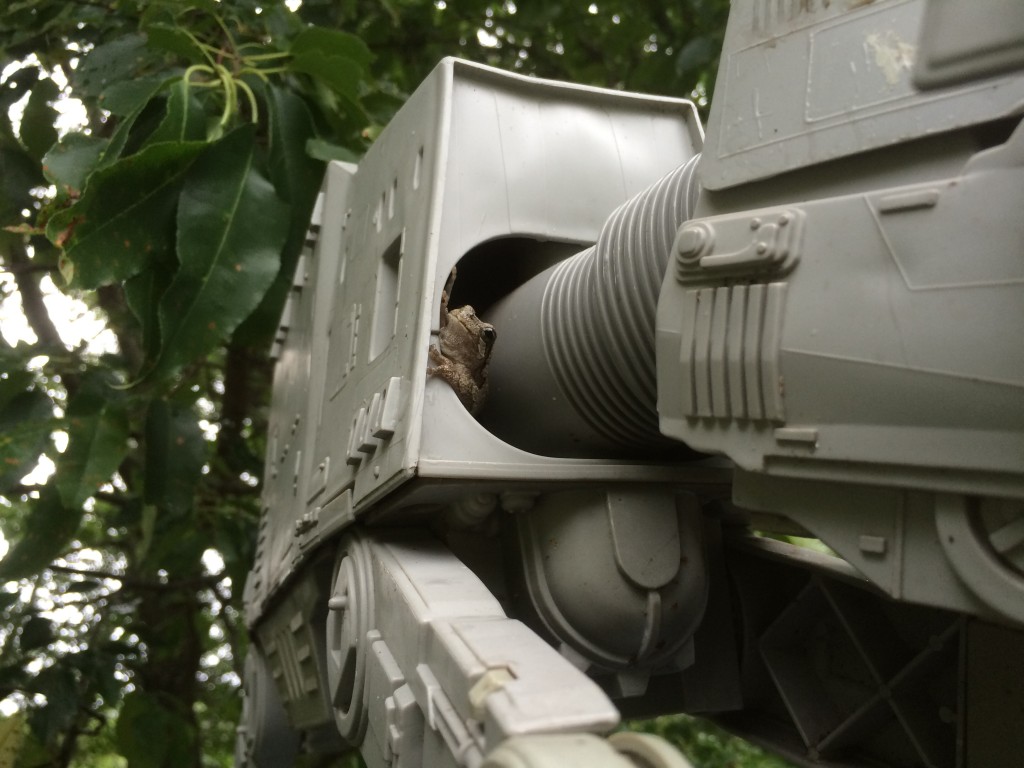Wednesday we returned to the farm after finishing our deliveries to the Cities to discover the fungus among us had been busy in our absence. Literally ALL the Thai and Italian basil was infected with the dastardly downy mildew oospore invasion, including the dozens of isolated individual interplantings we’d started in random spots between existing crops and where space was opened from removed Spring crops. No matter where a basil plant was in the field, they had been found and parasitized. (This was a bummer, but not terrible – given that basil plants would have been among the first to fall to the coming chills of autumn’.)
Only the Holy Basil was unaffected; although this is the least used variety in the US, it’s my favorite-smelling basil, and I can see how it could have come to be sacred in Hinduism and “the elixir of life” in Ayurveda. There’s just something about the scent that turns my head whenever it wafts my way … so it was a silver lining to find the little patch of it still standing proud while all our other basil fell. (And that’s why it’s in your box this week!)
The powdery mildew was mostly held in check by the sprayings of 10% 1% milk, but it was too late for the worst-case leaves, usually the largest, most central ones. Fortunately, the plants still have their outer leaves, and their squashes, pumpkins, and gourds are nearly ripe.
Field clean-up kicked into gear; we tore out the final sickly cucumber plants, hundreds of infected basil plants, and a dozen or so tomato plants whose cases of ‘failure to thrive’ had turned into cases of full-on “failure to not be a leperous undead pile of grody.” about 300 row feet of sprawling skeletal melon vines and their associated scarred and failing melon fruits. (These went into the woods, not into your boxes; fear not.)
This clean-up work might sound grim but it felt good to get them out of the field, on several levels. It cleared the space out in the field and in my head. (Plus, I kept laughing, remembering this scene as I pulled out the not-quite-dead-just-yet plants and carted their remains to the distant crop-residue pile: https://www.youtube.com/watch?v=grbSQ6O6kbs)
It’s not all death out there, though – sorry for focusing on problems so much – but these are the things we have to be looking out for and addressing much of the time – the many, many, most everything that’s humming along wonderfully tends to do so quite nicely without much attention or effort. But I should probably be sure to pay them attention for your and my benefit both:
The Indian Corn coming in is the biggest and most attractive we’ve grown yet (it’s decoration now, but once dried and pulverized it will be made into all kinds of tortillas, cornbread, tamles, hominey … thanks for your determined weeding of the baby corn months ago, Reynaldo!) Many of the pepper plants seem to be revealing their late-bloomer strategies, with flowers and peppers finally coming in amongst the lush foliage. The other half are mulched differently – it will be interesting to see if this variable might cause significantly different outcomes as the summer turns to fall.
We were joined by two new WWOOFers – traveling farmer musicians Nora, her boyfriend “B,” (*he goes by that, I’m not protecting his identity) and their cat, Gato aka Bucket. Bucket likes it here; he hangs out in the Rust Shack all day and stalks the woods and fields all night. Killing many, many voles, hopefully.
We went river swimming a couple of times when things got too sticky hot, and ate lots of great food – most notably a party at Neighbor Dave and Marcie’s – where friends/CSA members Todd & Maaren’s rolled up with their Wandering Fire mobile pizza oven. Between phrases in conversation with all the people assembled, we stuffed ourselves on delicious pizzas and desserts and remembered to be grateful for good people we have been lucking into during this new adventure.
Box #14
Kristin’s Corner
- Salad Mix
Including green lettuce, arugula, mizuna, tat soi, spinach, and mustard greens (reds, really). Good to have them back! Consider topping with fennel dressing. - Fennel
You could roast fennel with potatoes and carrots. It pairs well with tomatoes and zucchini as well. - Ground Cherries

- Watermelon
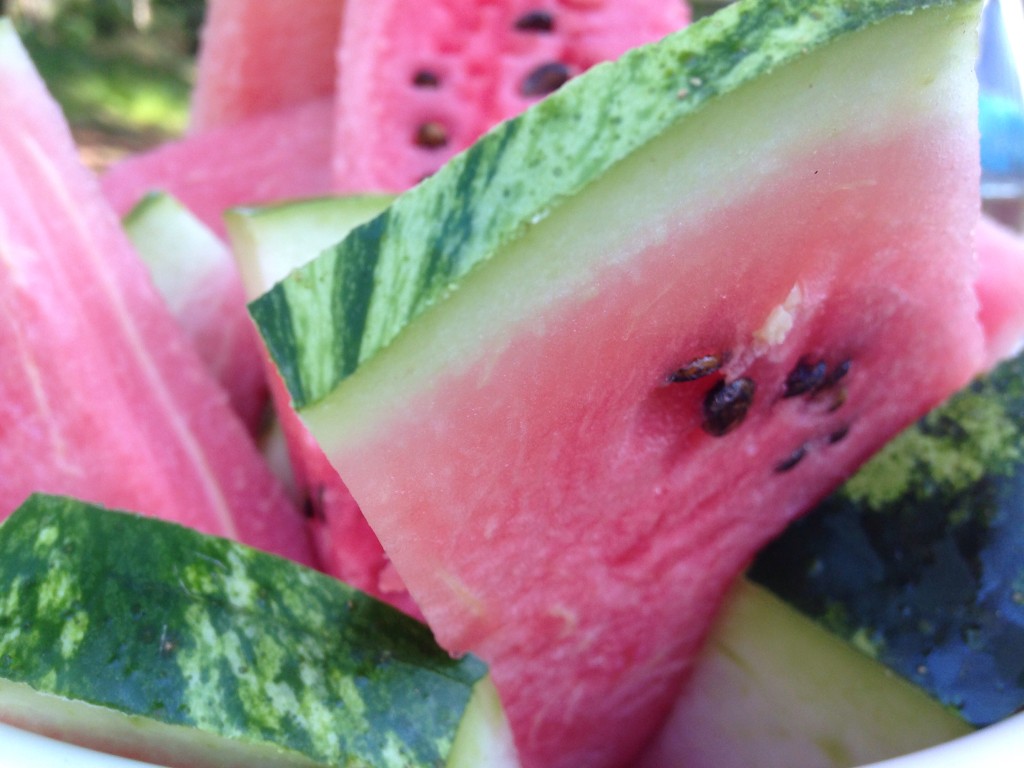
These melons took longer to reach maturity and are apparently anthracnose resistant. There are Crimson Sweet, Luscious Golden, and Yellow Sugar Lump varieties, all which have similar exteriors so you’ll have to slice into yours to find out if it is yellow or red. This melon is probably you best bet for making watermelon rind pickles or watermelon rind chutney:
http://www.epicurious.com/recipes/food/views/watermelon- rind-chutney-109655
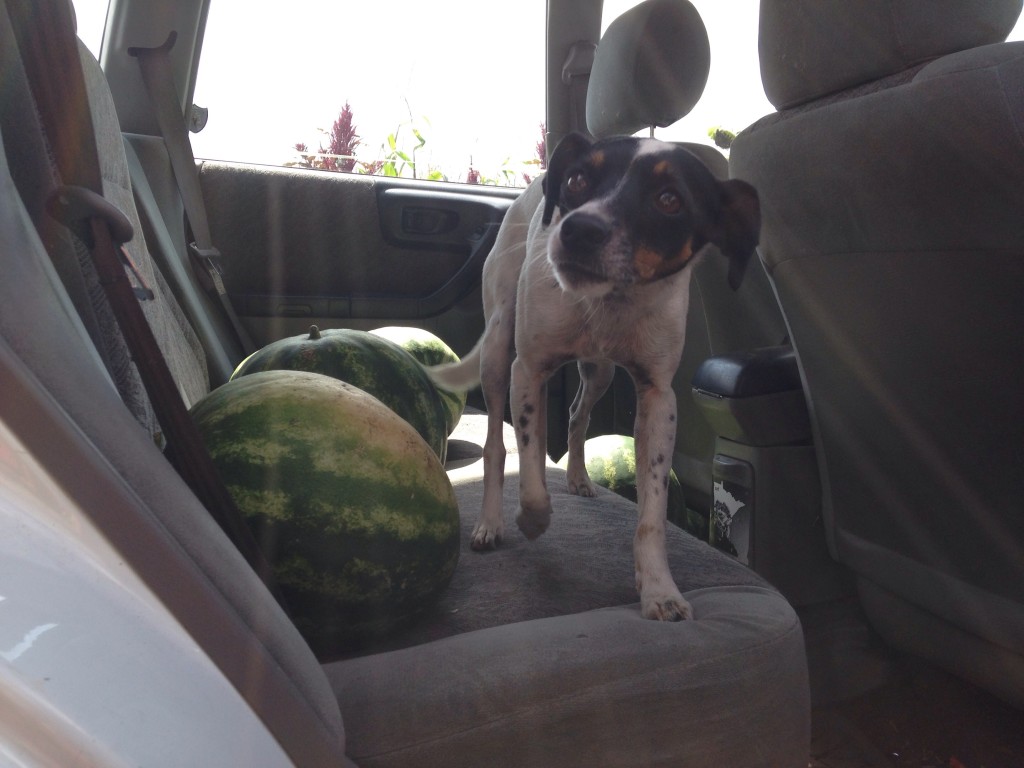
- Potatoes
I like to cut them into small cubes and cook in butter or oil. Once they are close to done I add chopped kale. It lightens up the potatoes and adds color. Season with salt, pepper, onion or garlic, chili powder or even curry.
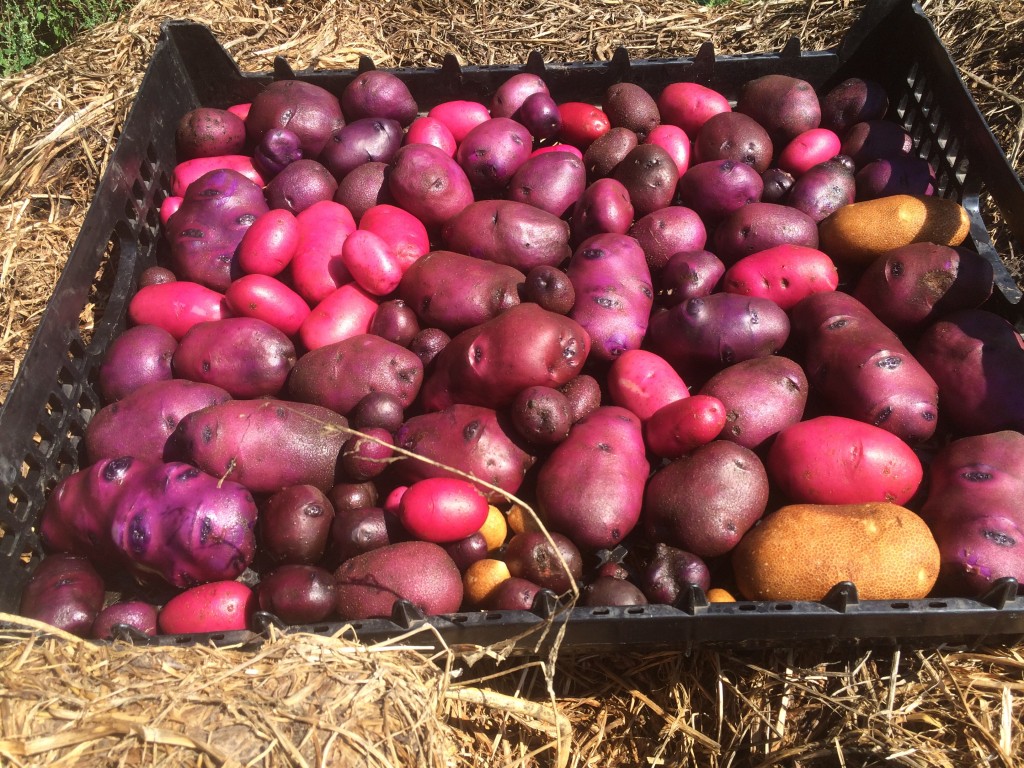
- Holy basil aka Tulsi
This plant is revered as an elixir of life. No big deal. It makes a great stress relieving tea and is also used in Thai cooking. - Kale
Kale chips. Kale quiche. Kale in stir fry. Kale in soup. So versatile, so healthy!
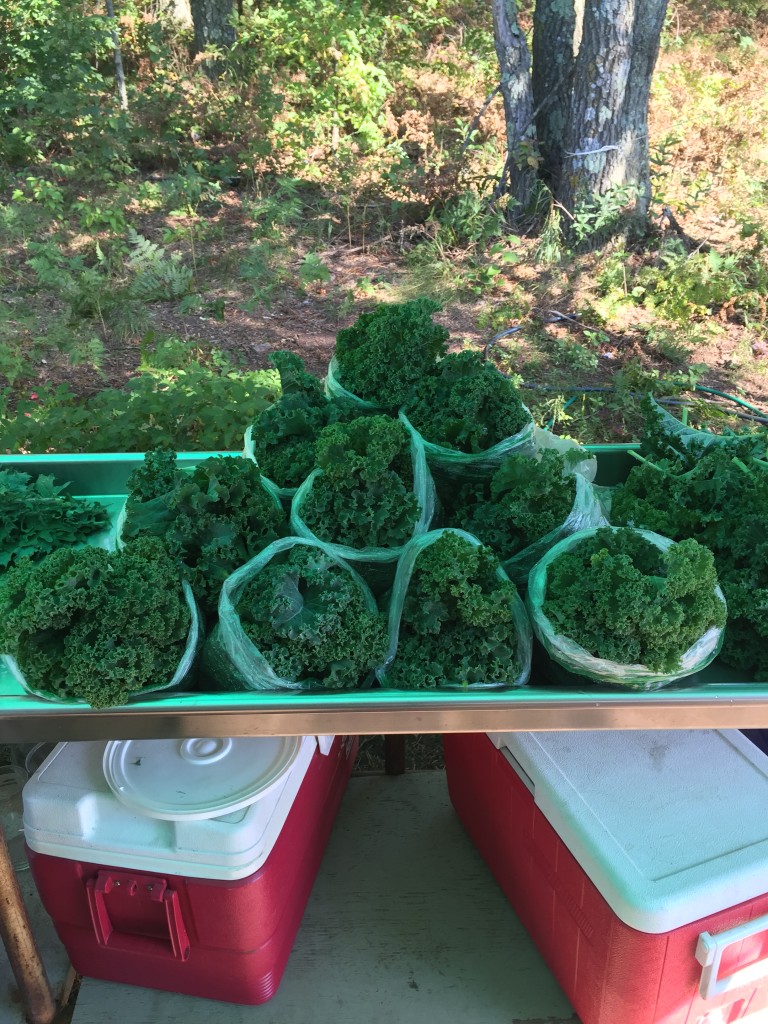
(*due to a miscommunication in the harvest chaos, everyone got two full bags of kale this week – one Red Russian and one Dwarf Curly Blue) - Spaghetti squash
This is a unique recipe for spaghetti squash that I have actually made and liked a lot:
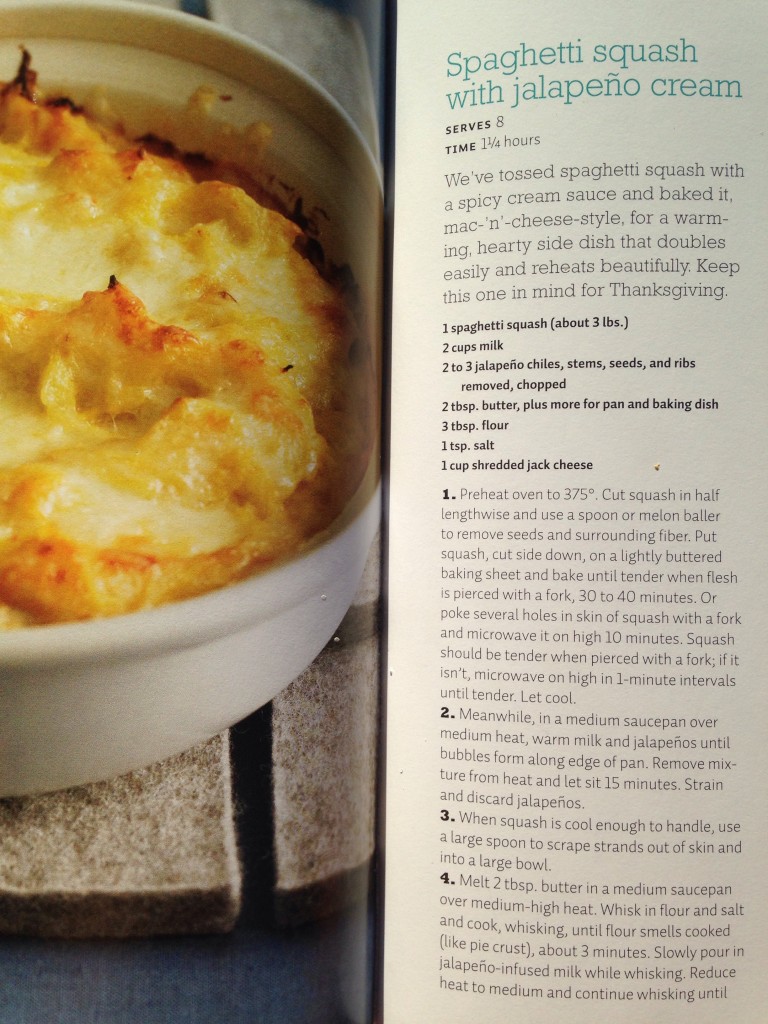
- Tomatoes
No-cook tomato sauce recipes exist if you don’t want to heat up your kitchen. You can chop tomatoes and let them drain in a strainer for less liquidy sauce, bruschetta, or salsa. Grilled tomatoes? Yum! Tomato and kale Benedict?
http://www.foodnetwork.com/recipes/food-network-kitchens/ kale-and-tomato-eggs-benedict- recipe.html
- Peppers
Use them in salsa or tomato sauce. Use the jalapenos and spicy banana peppers in the spaghetti squash recipes.
- Tomatilloes
I’m looking forward to trying this gazpacho recipe:Grill or broil 1½ pound tomatillos until lightly charred all over. Chop and combine with 2 avocados; 2 thick bread slices; 2 tablespoons olive oil; ¼ cup orange juice; 1½ cups water; salt and pepper. Garnishes: Corn kernels (stripped fresh off the cob or thawed frozen) and a pinch of cayenne.
And because people are not so sure what to do with these guys, here are some recipes from a magazine article that featured tomatilloes:
- Onion
- Zucchini
Could it be the last???
- Broccoli
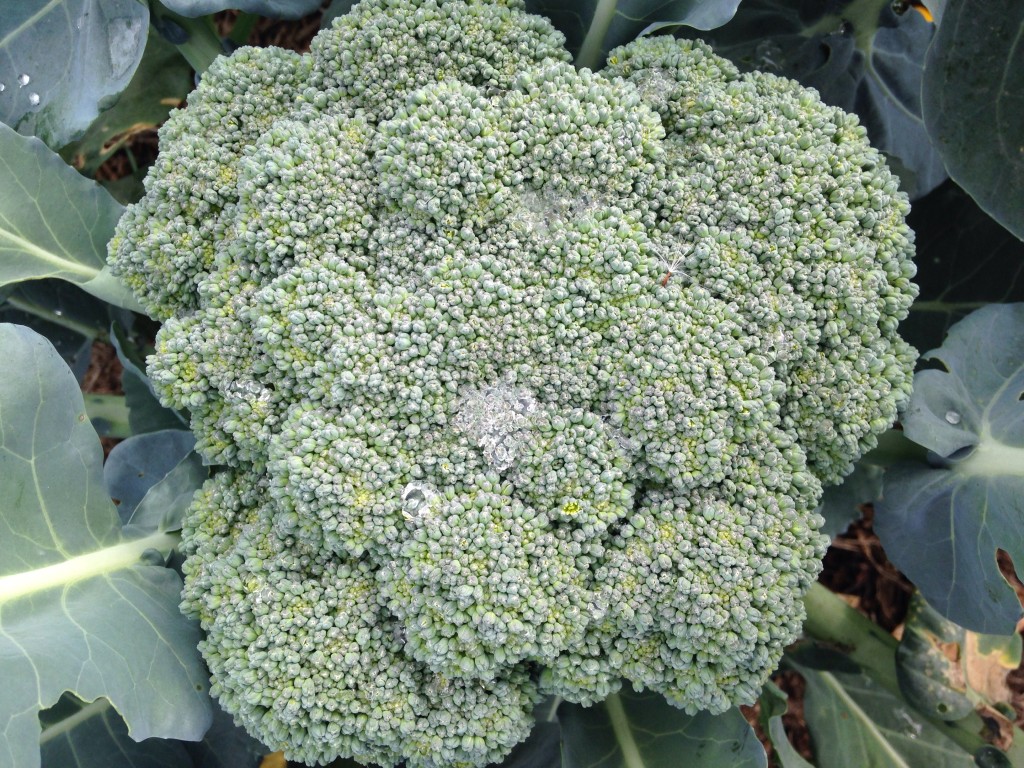
Fall broccoli is here! I think it is telling that the cole crops are the favorite among herbivores. They munched quite a few broccoli and cabbage transplants, but they didn’t get them all.
Now we munch them! Raw broccoli with dip and chopped for salads and wraps. I like to cook pasta and right before I drain it I throw the chopped broccoli in the hot water with the pasta to blanch it. Then I strain it all and add Alfredo sauce.

